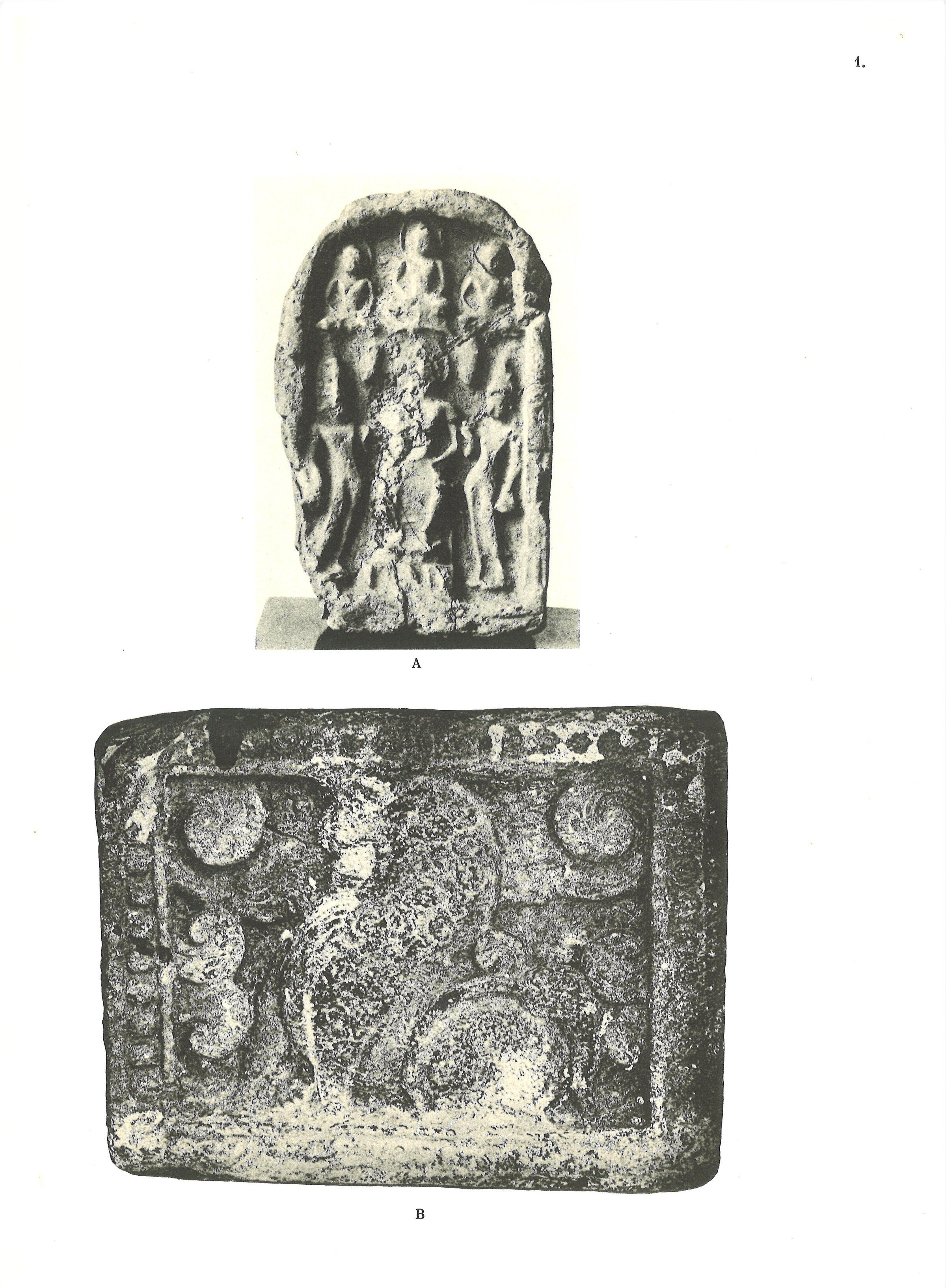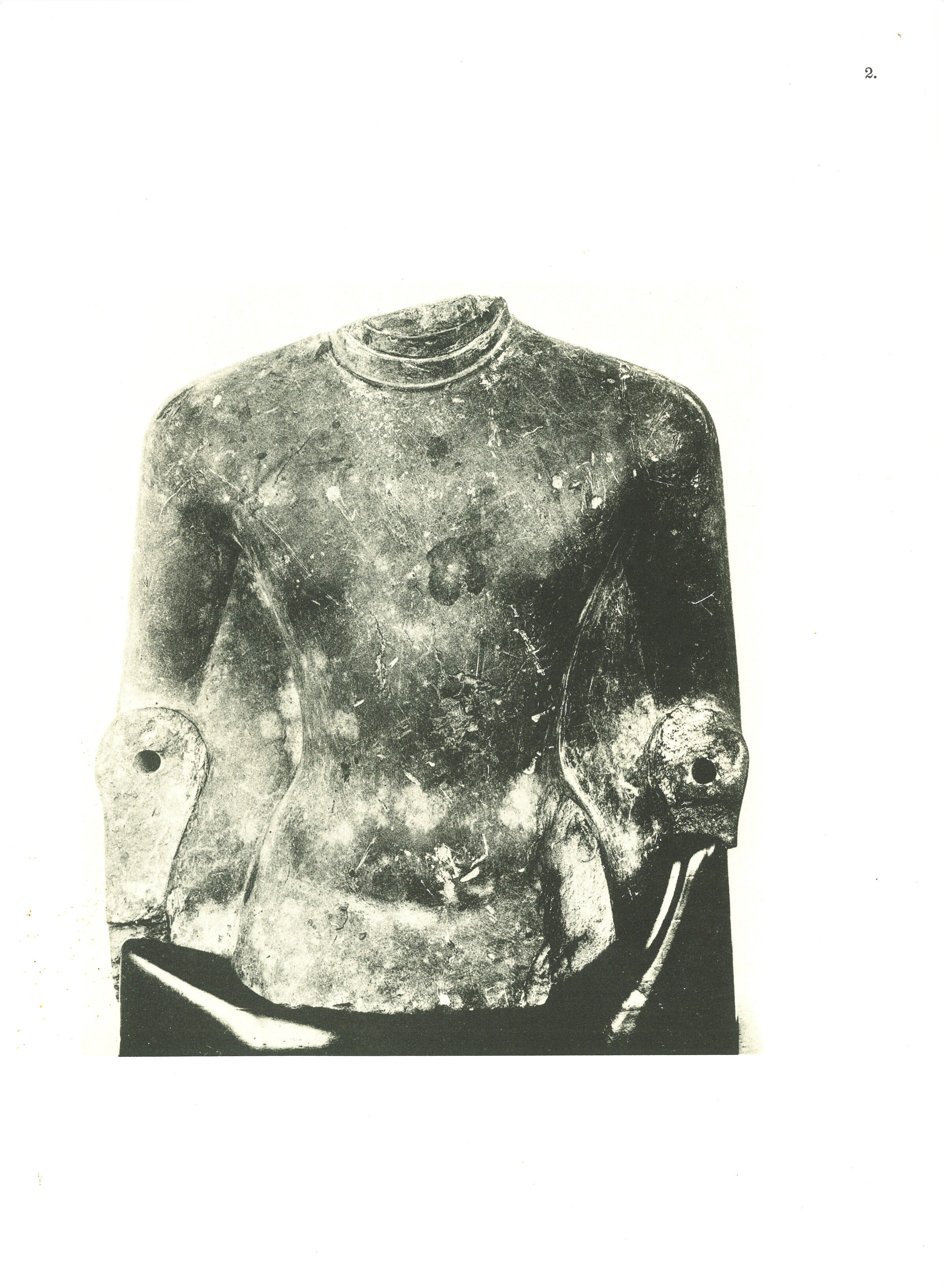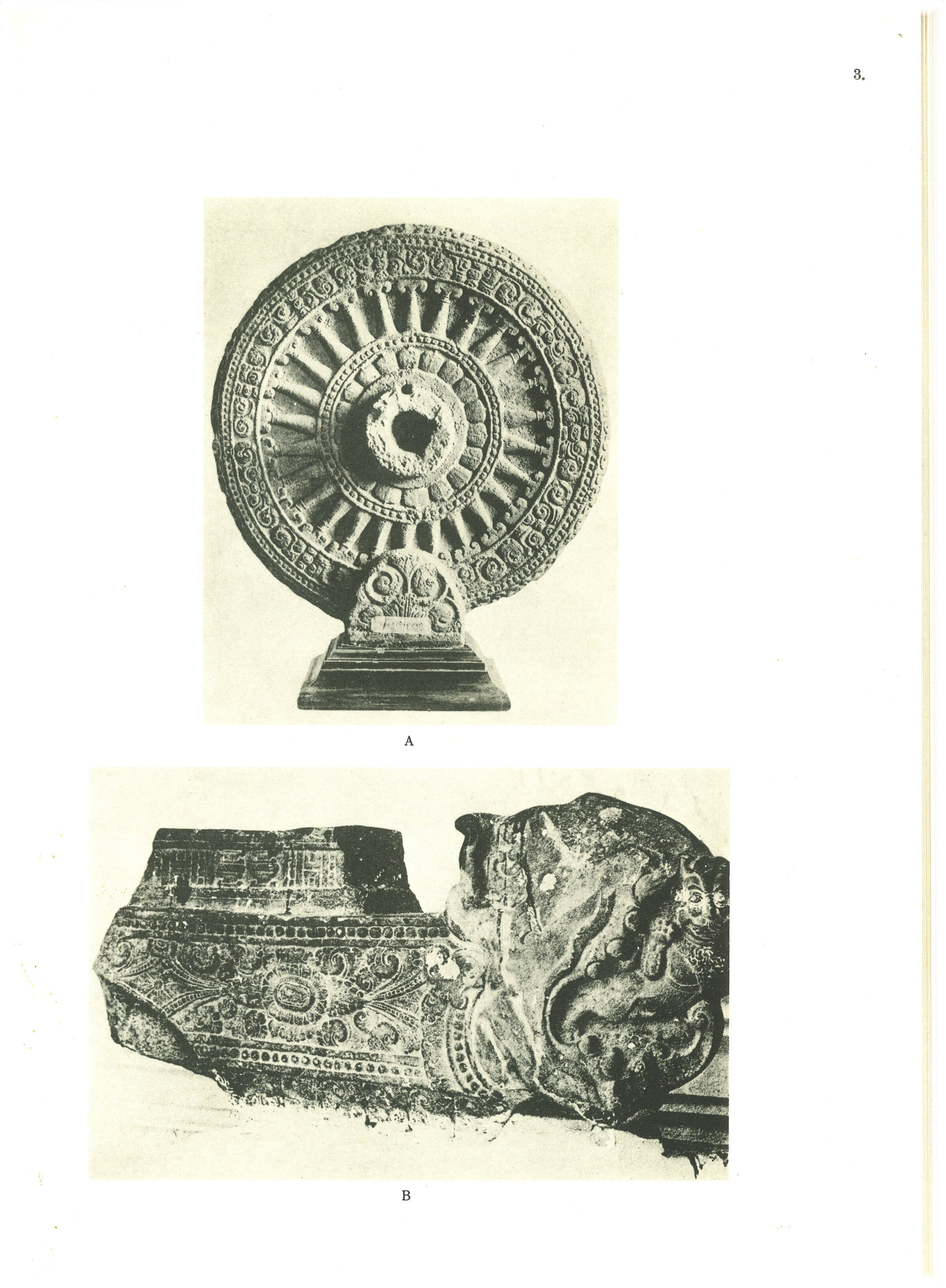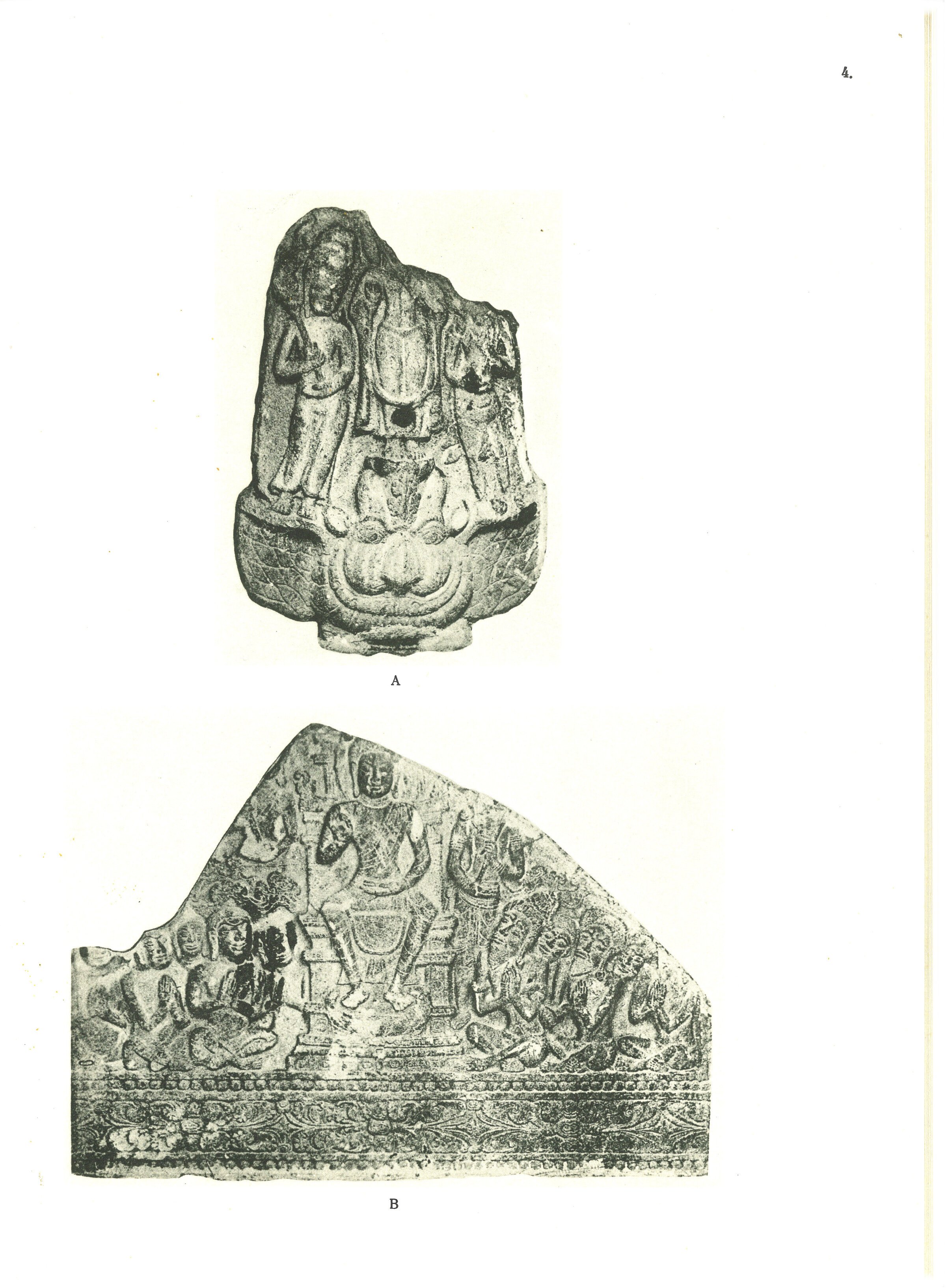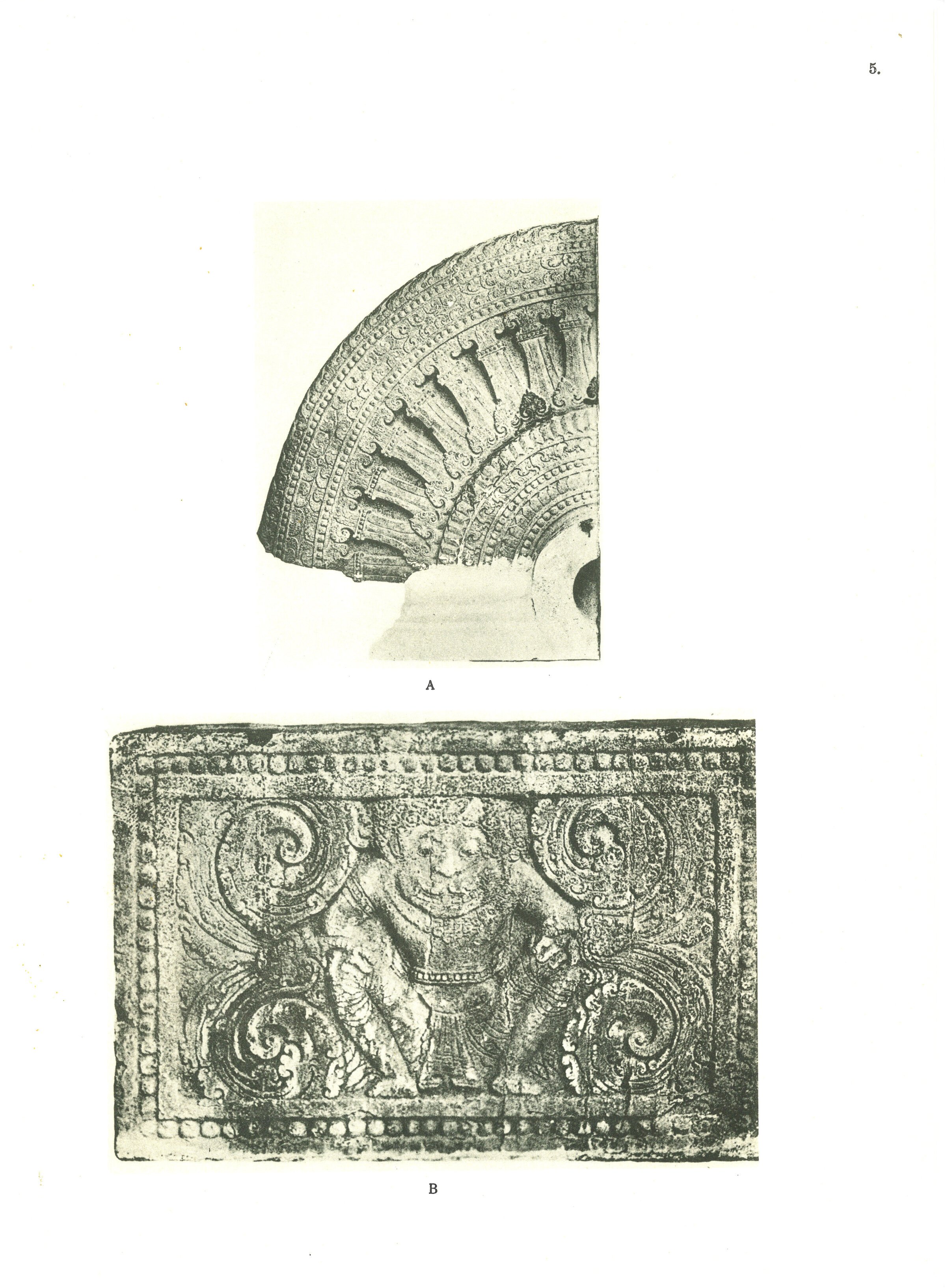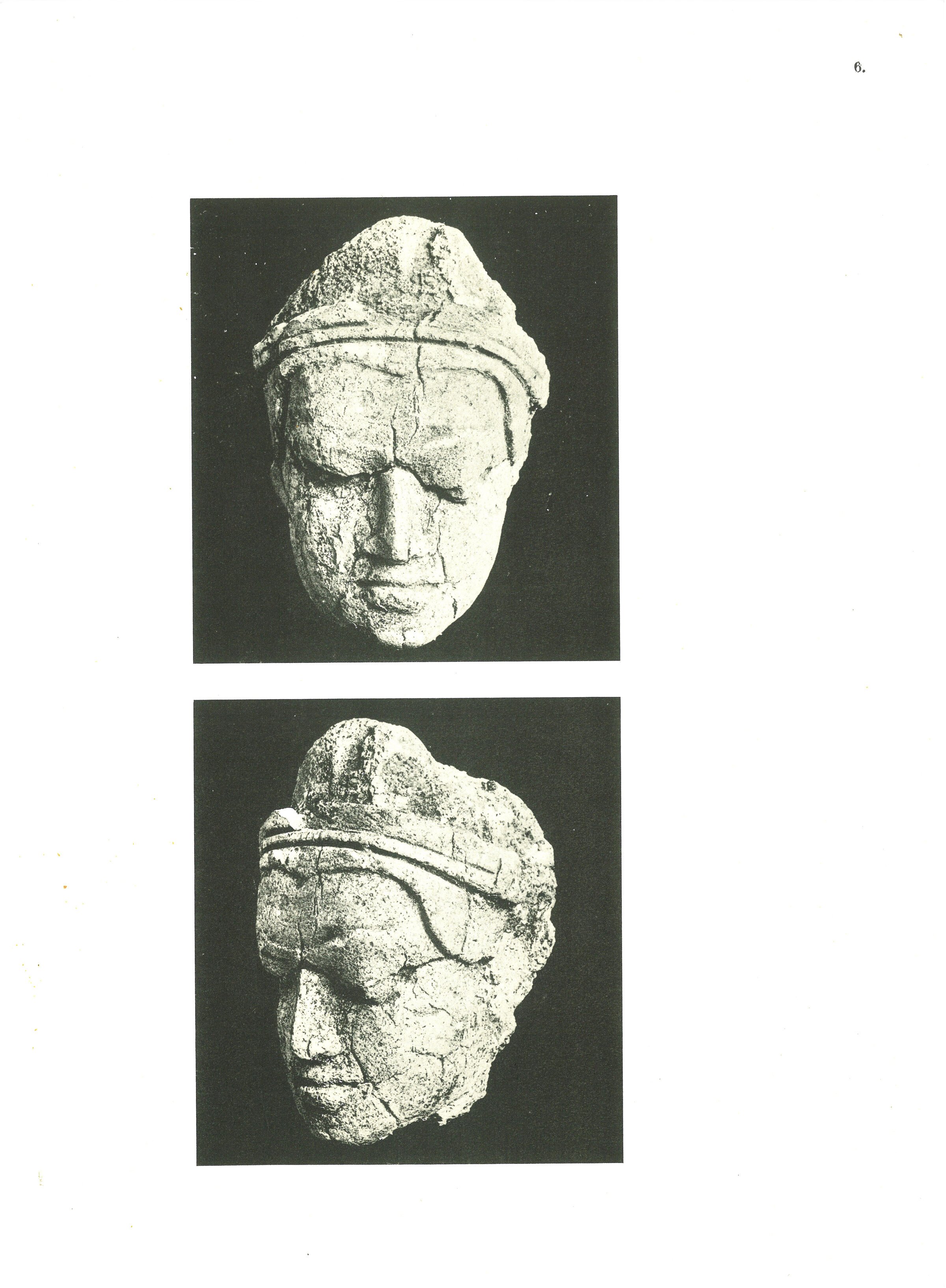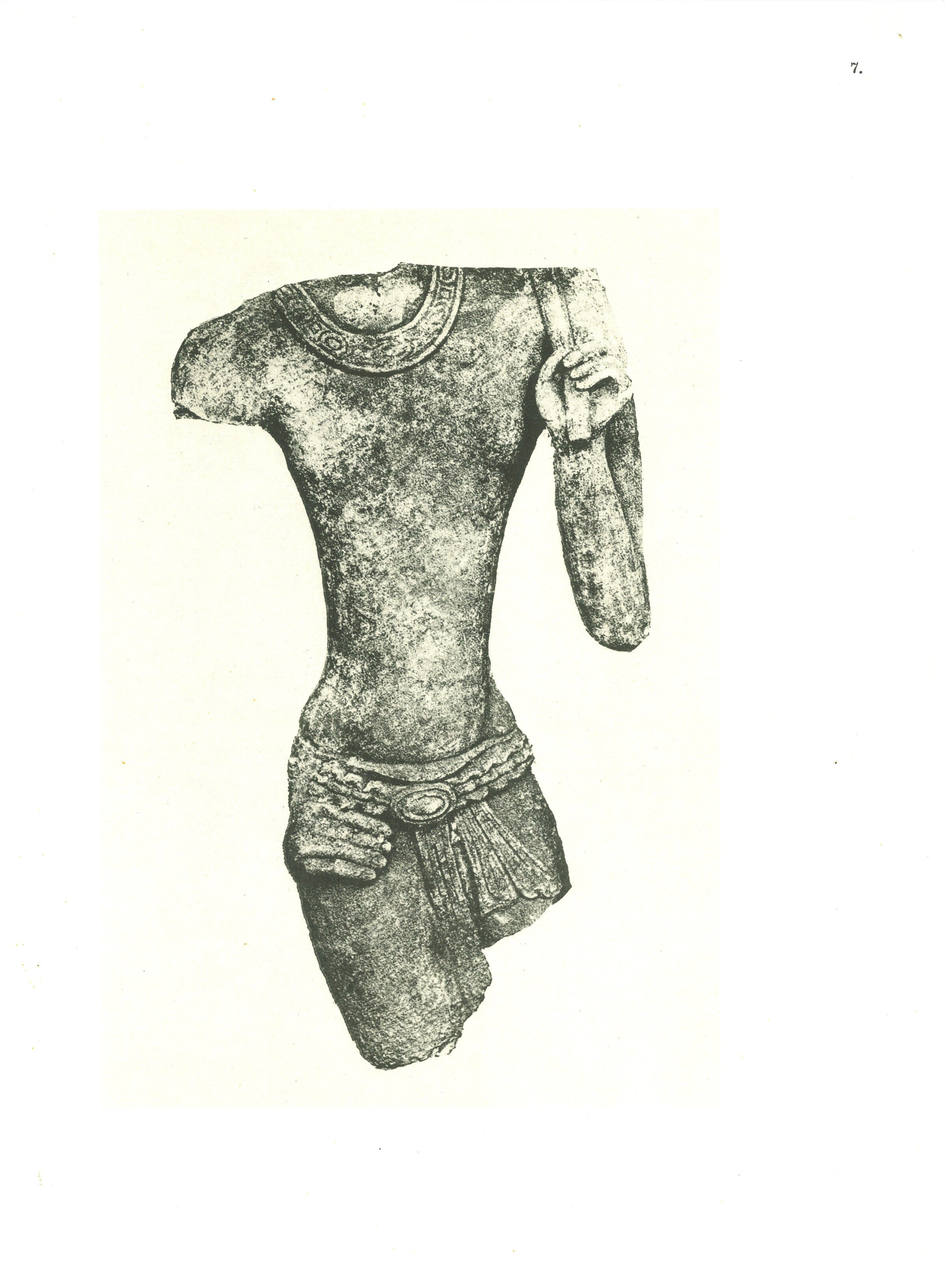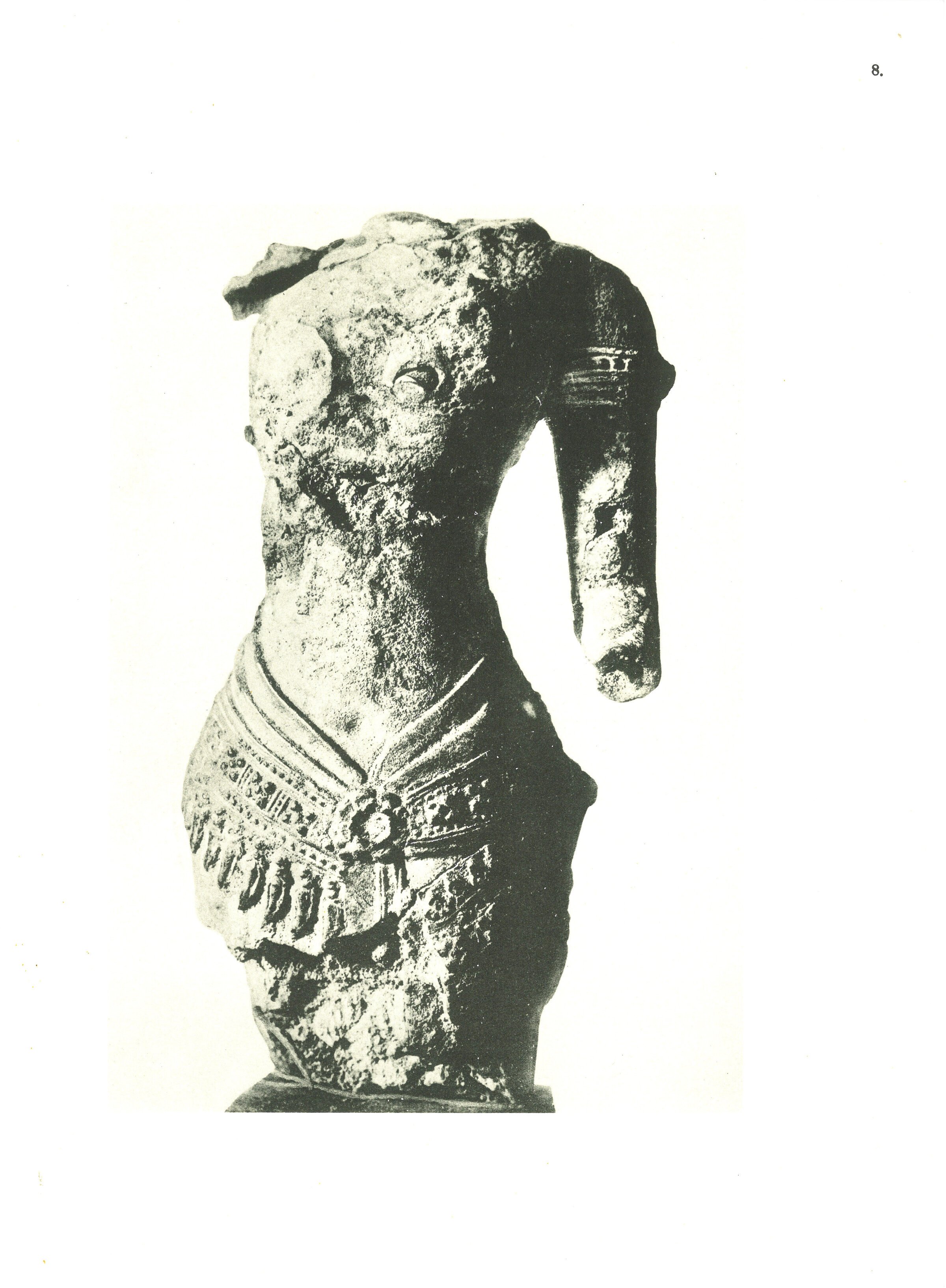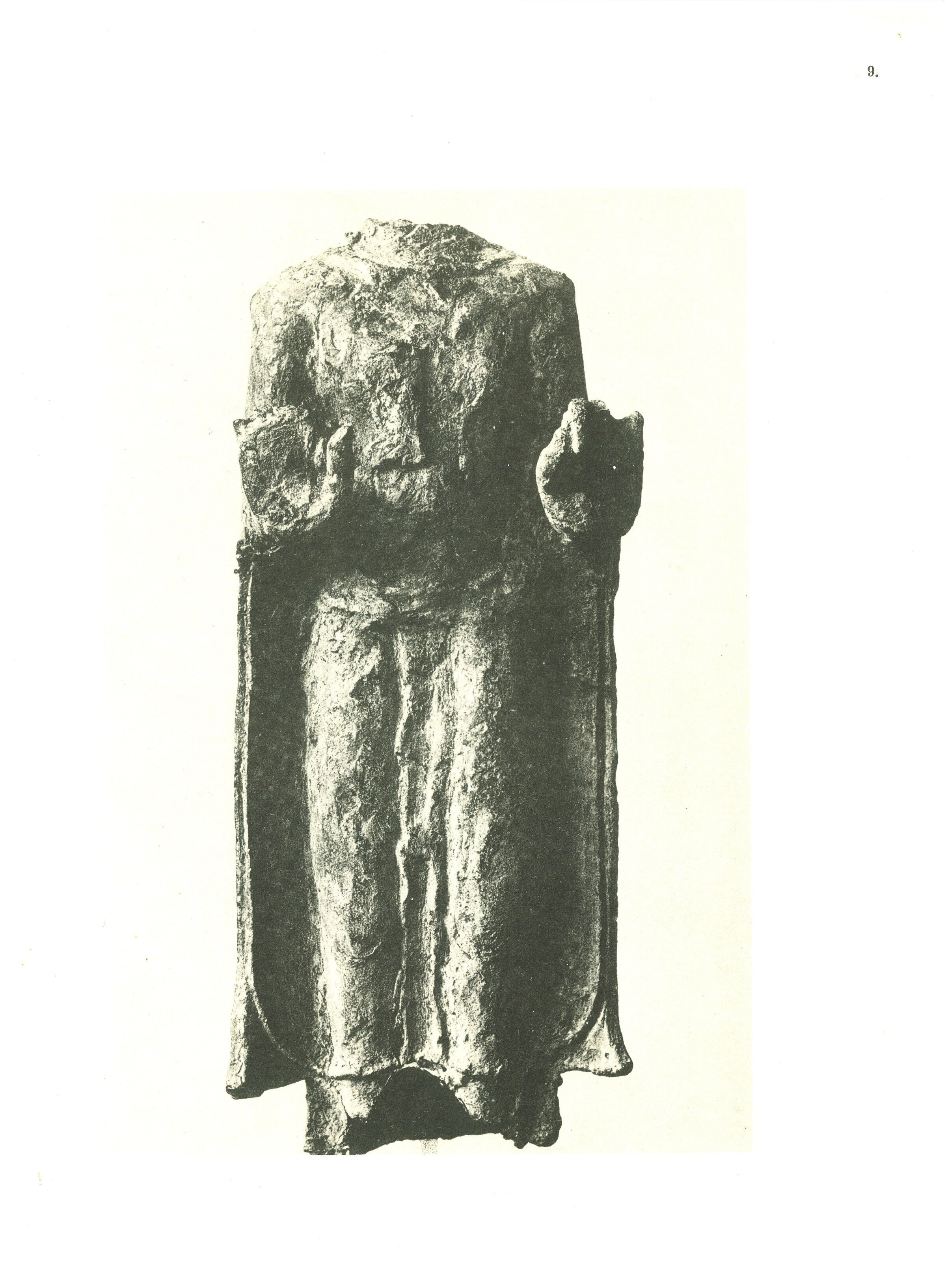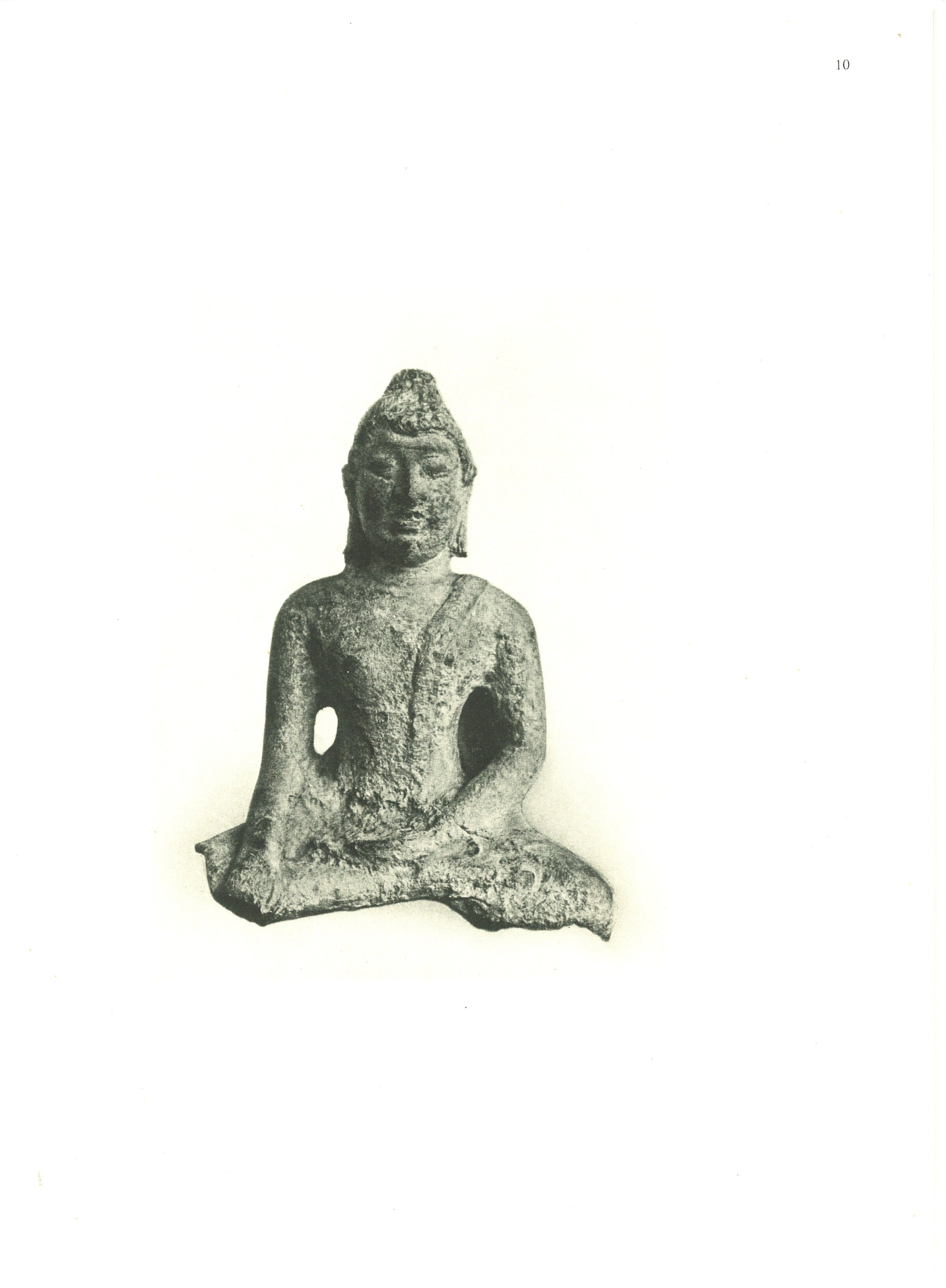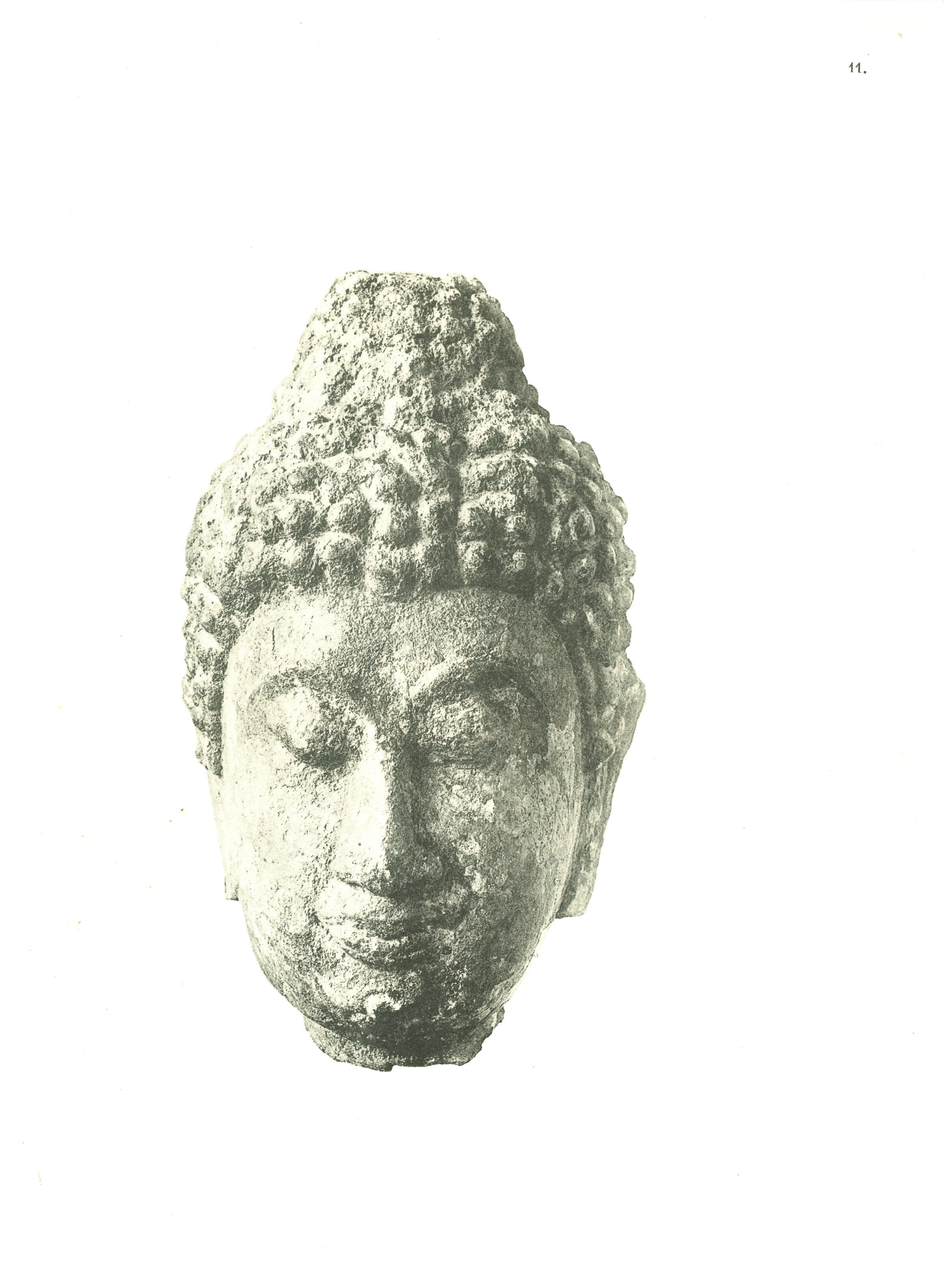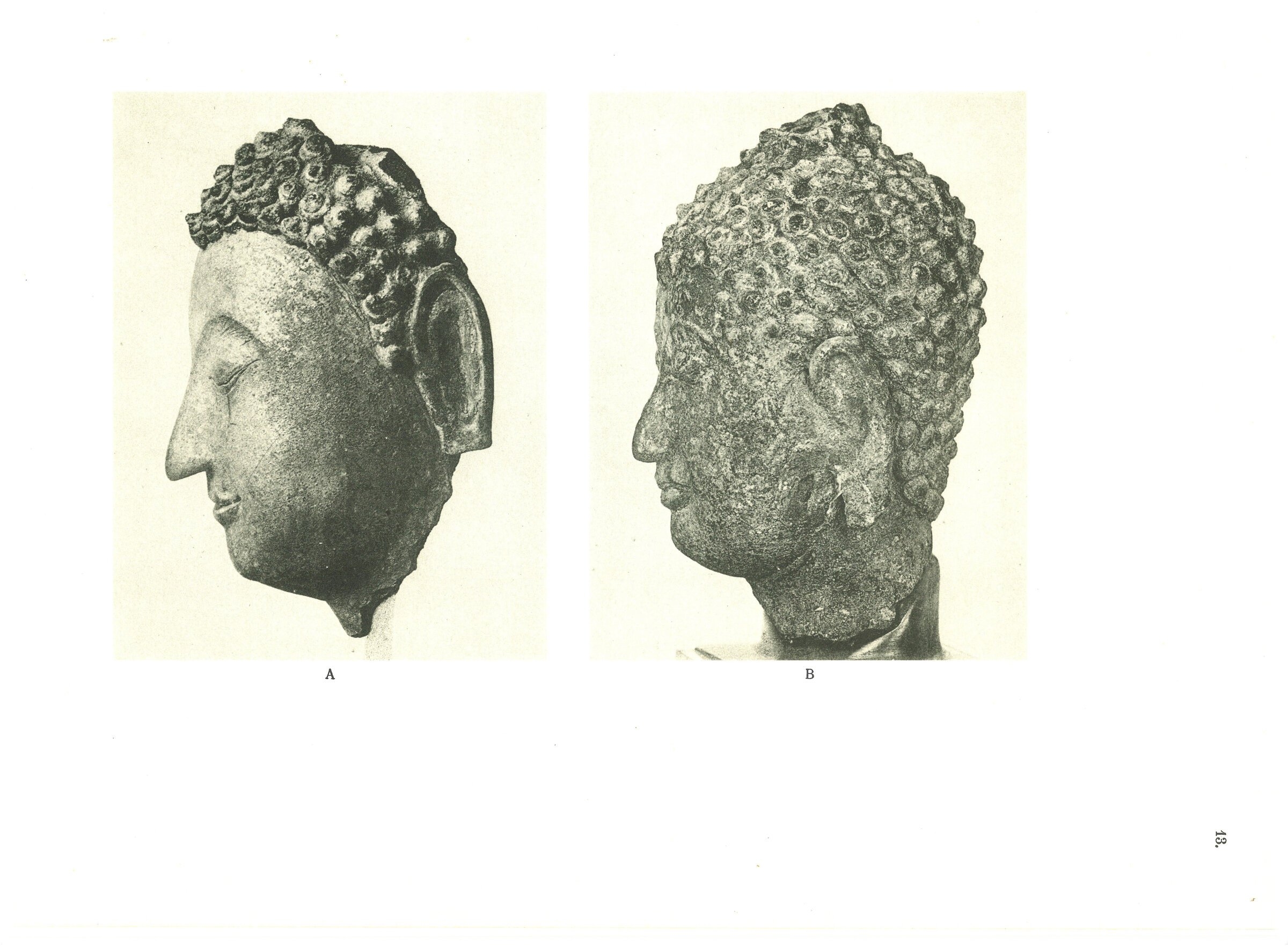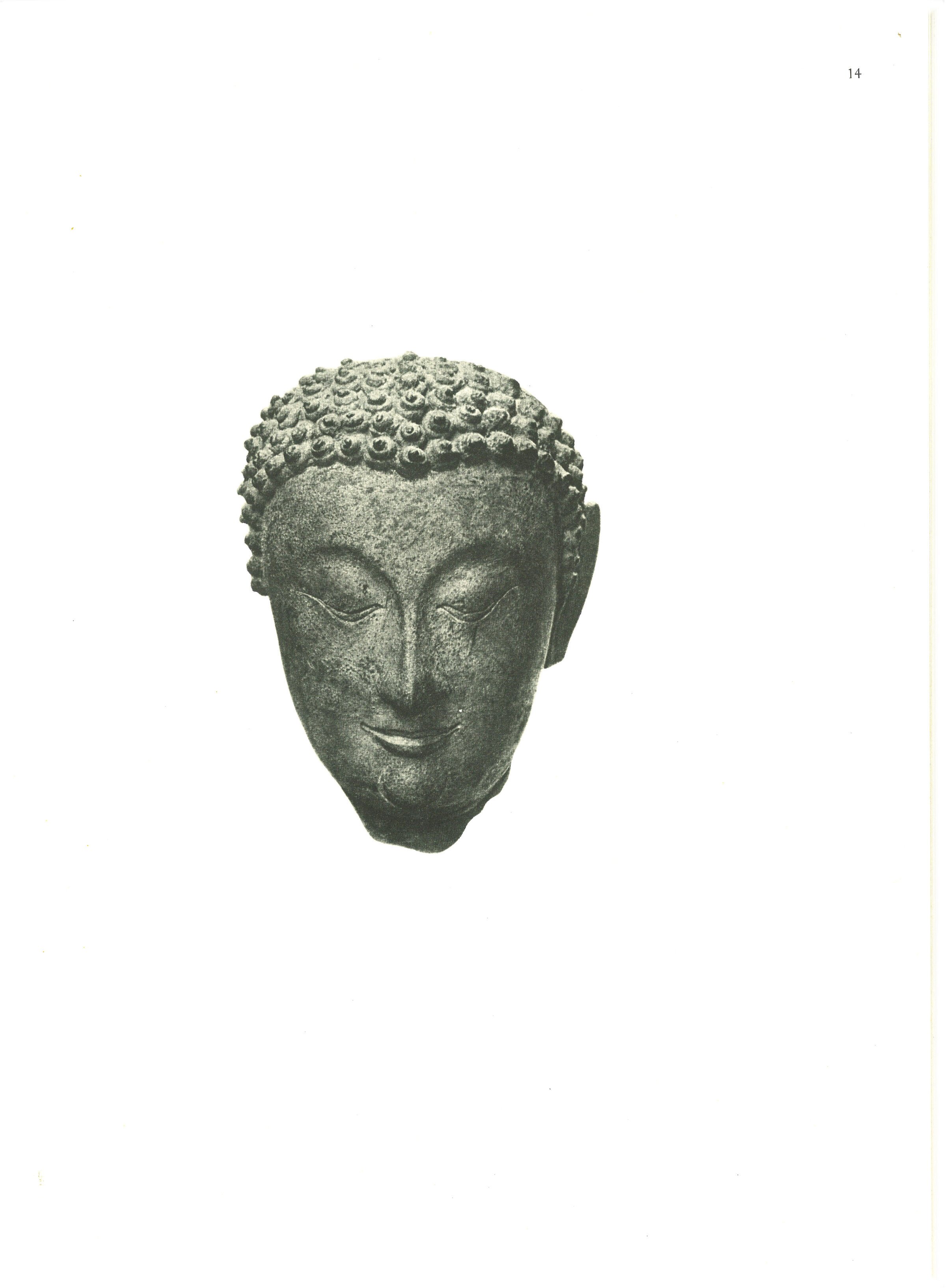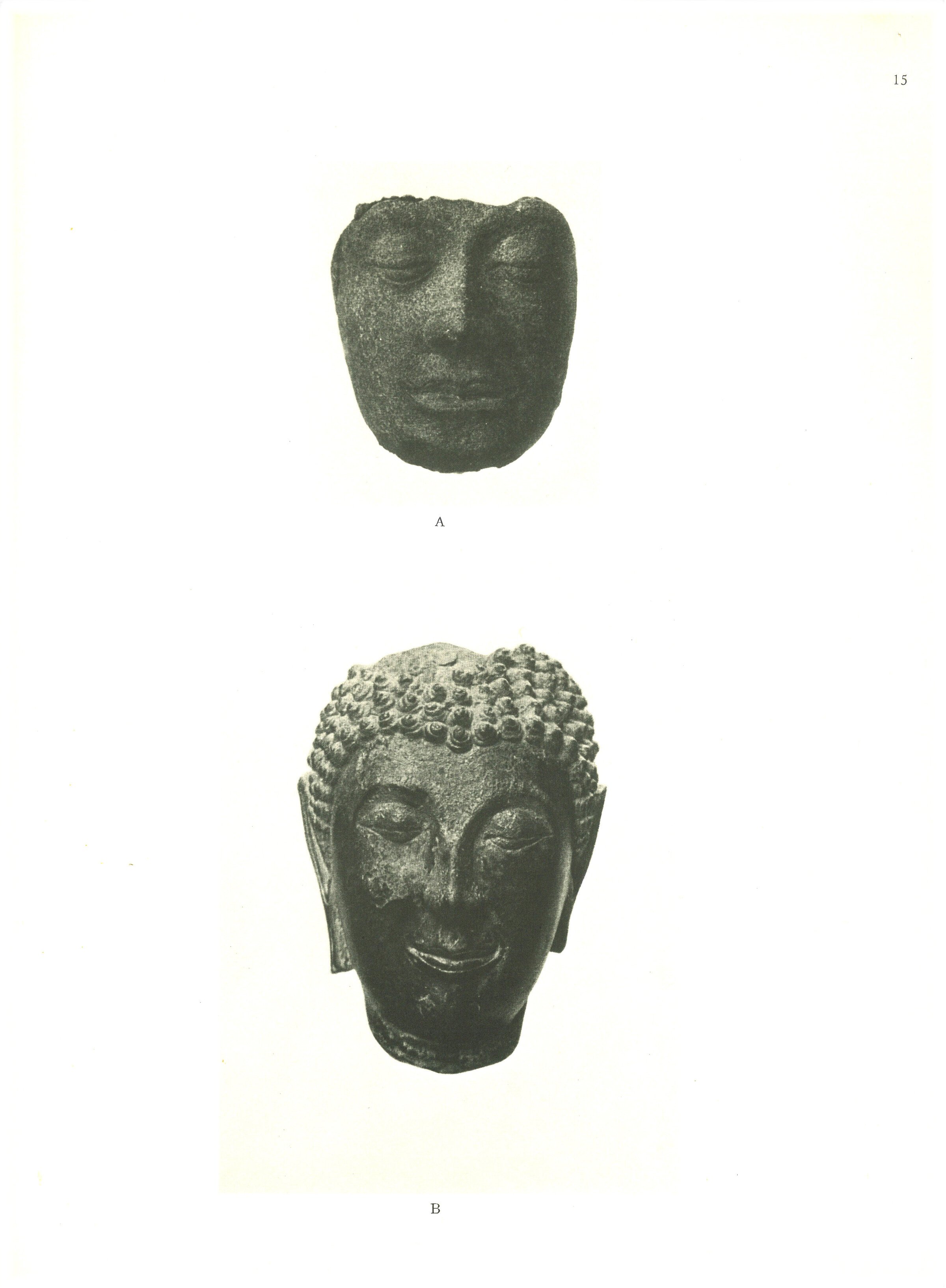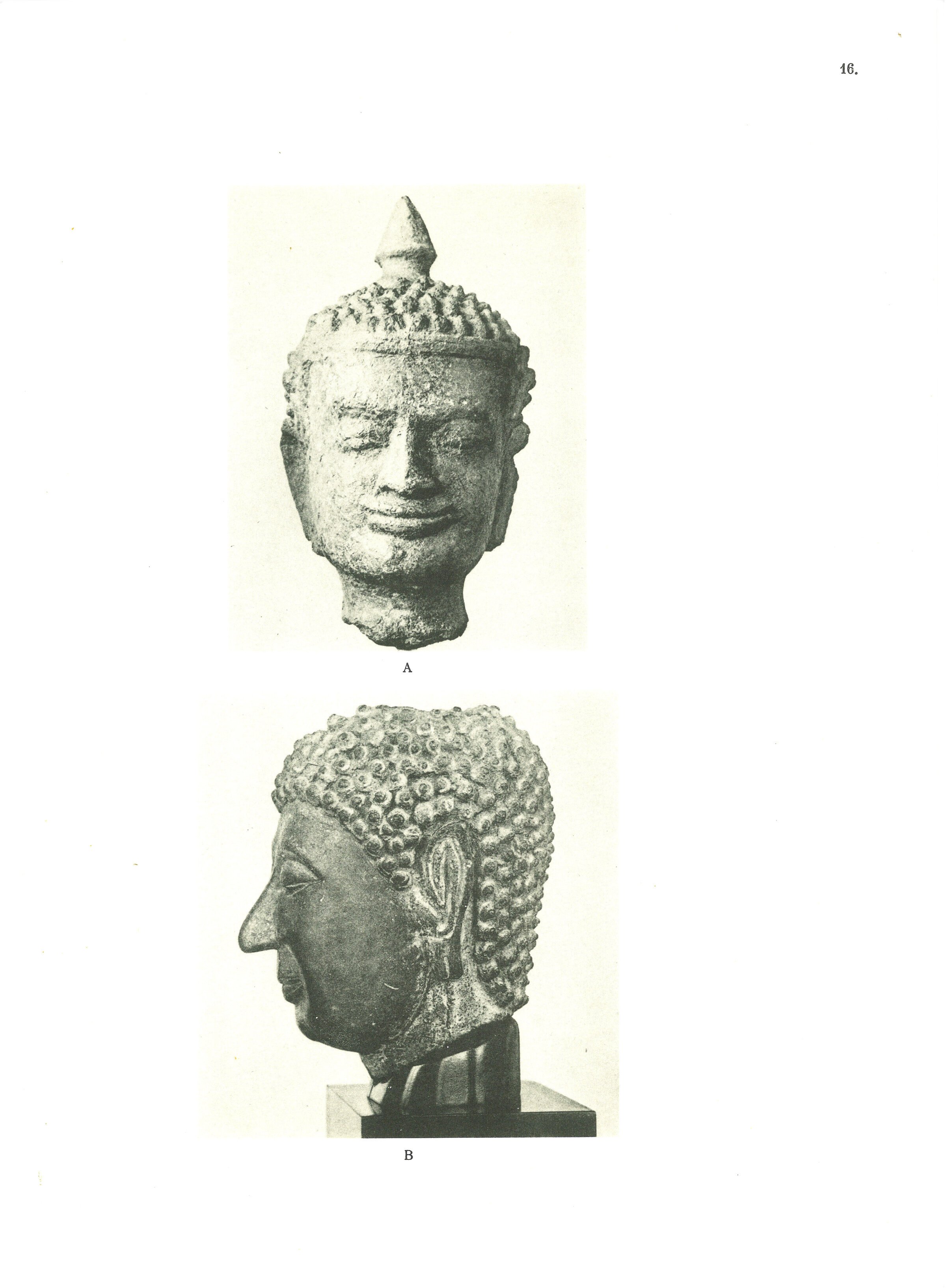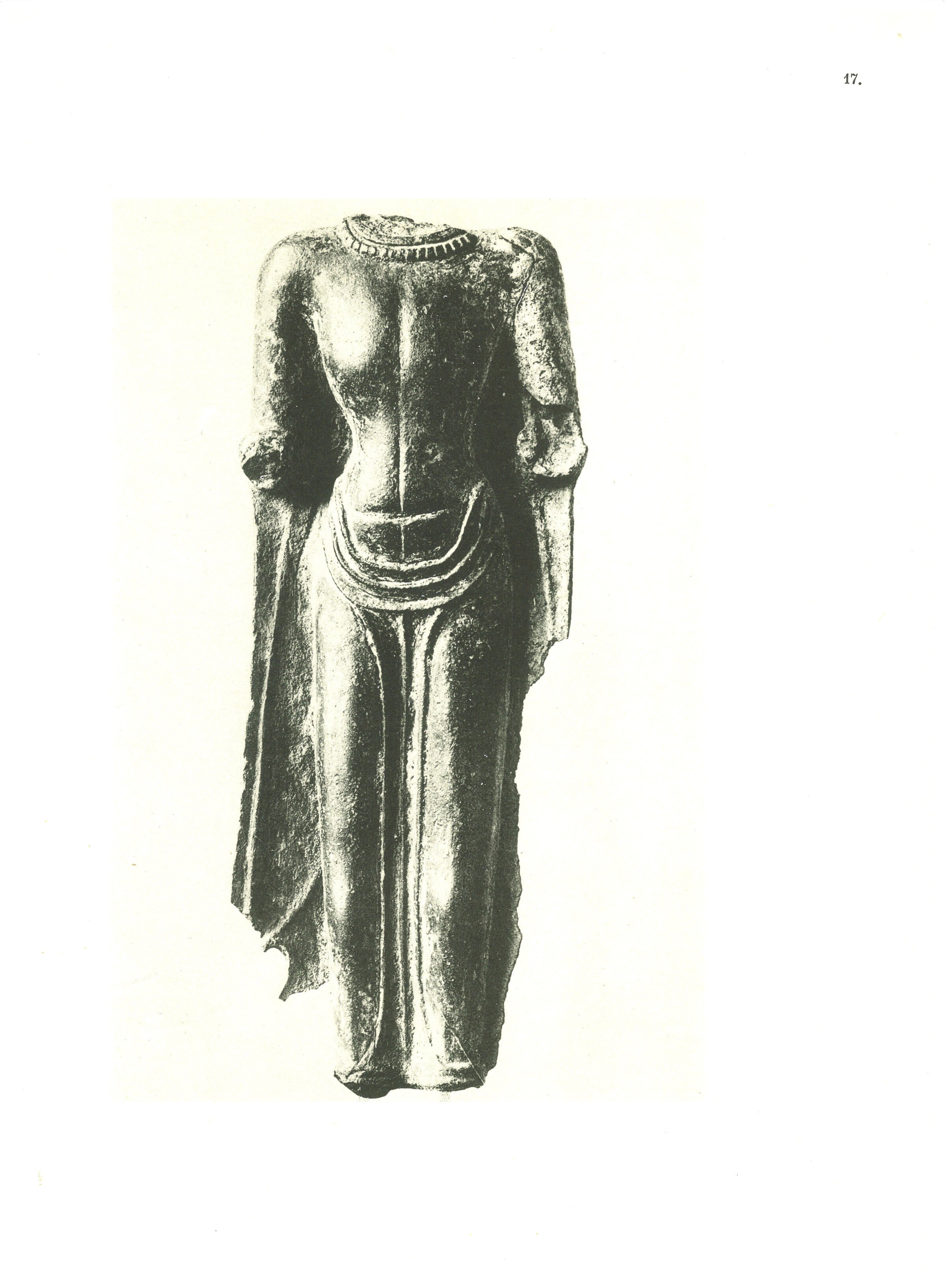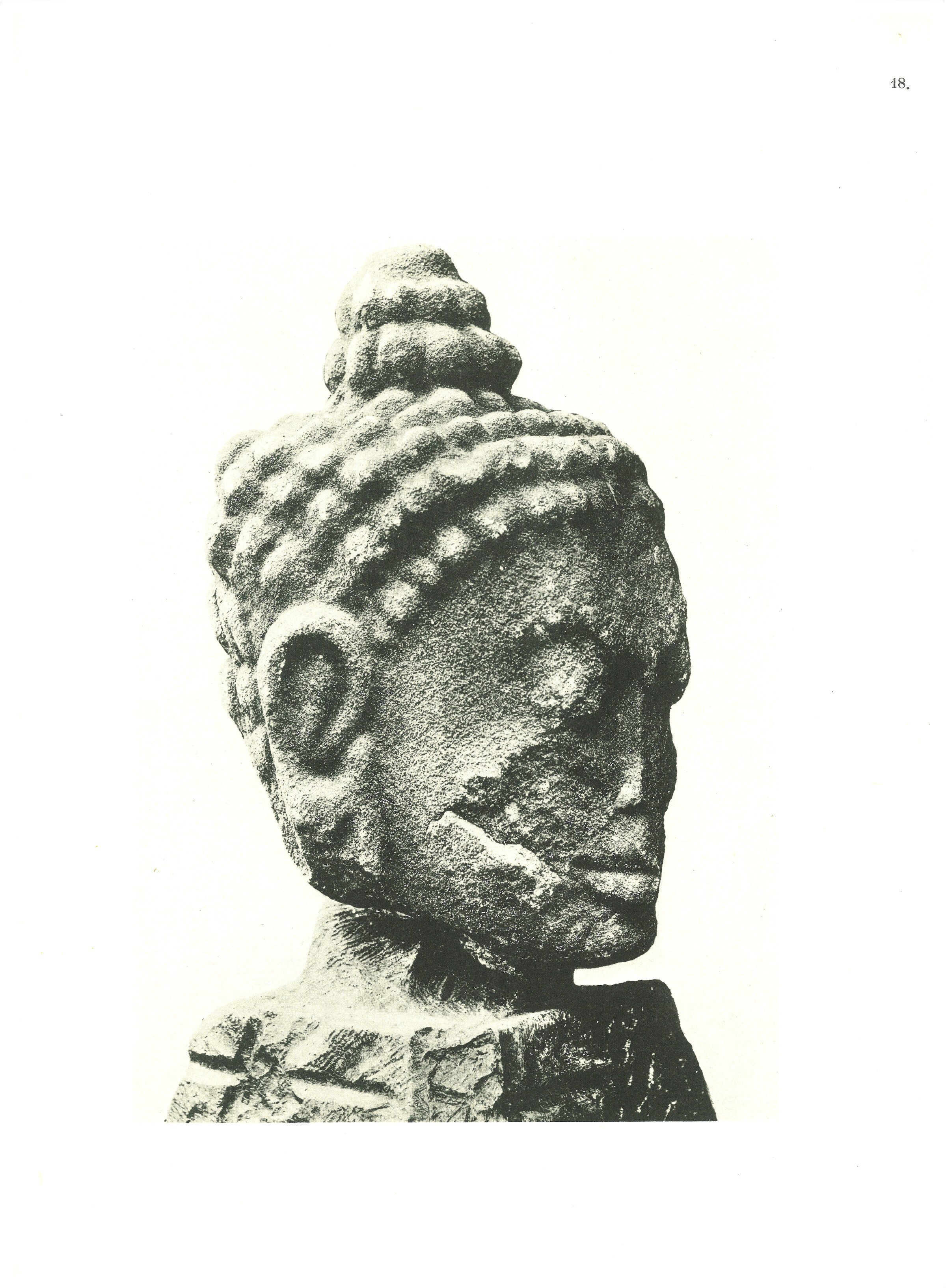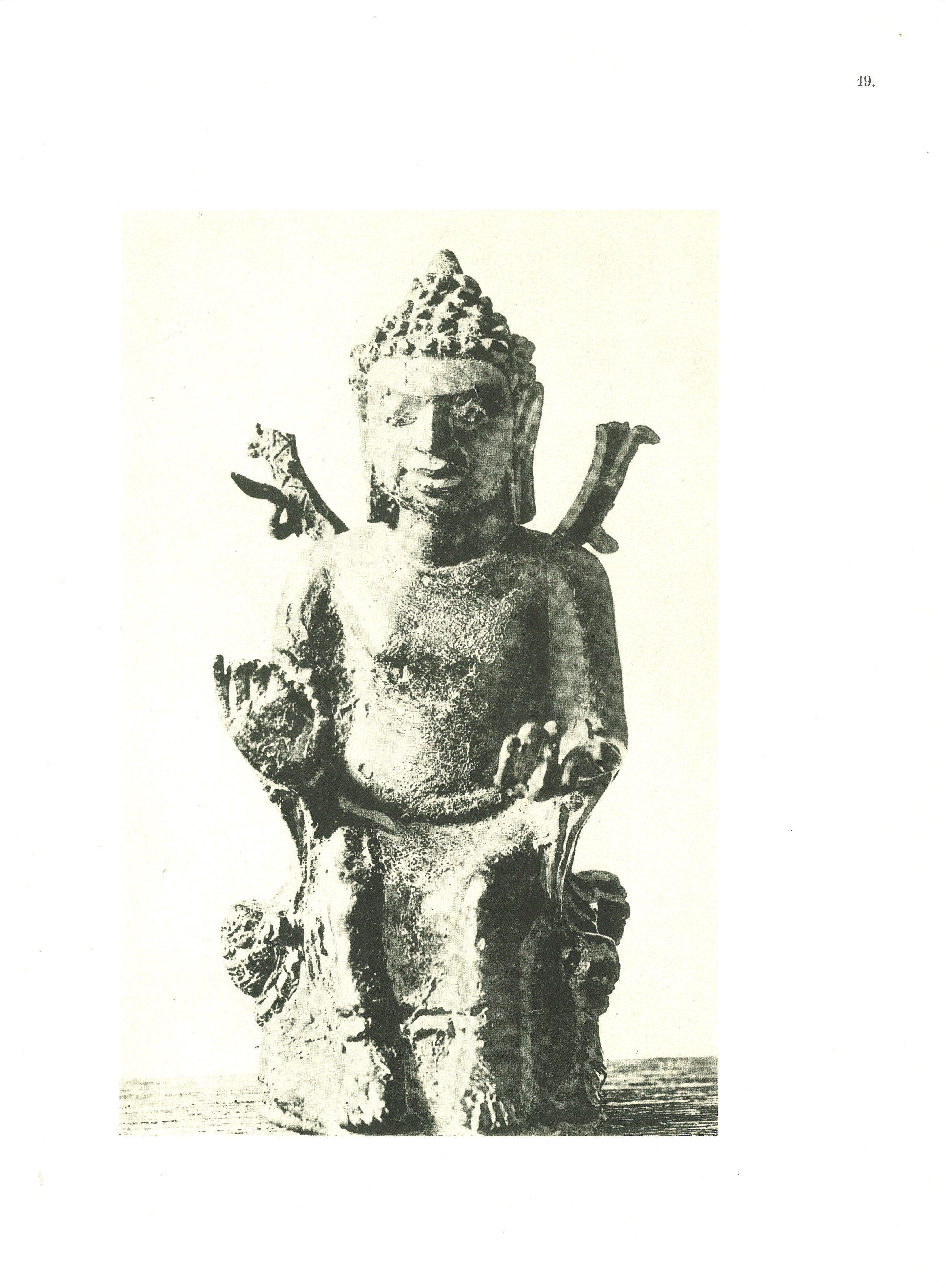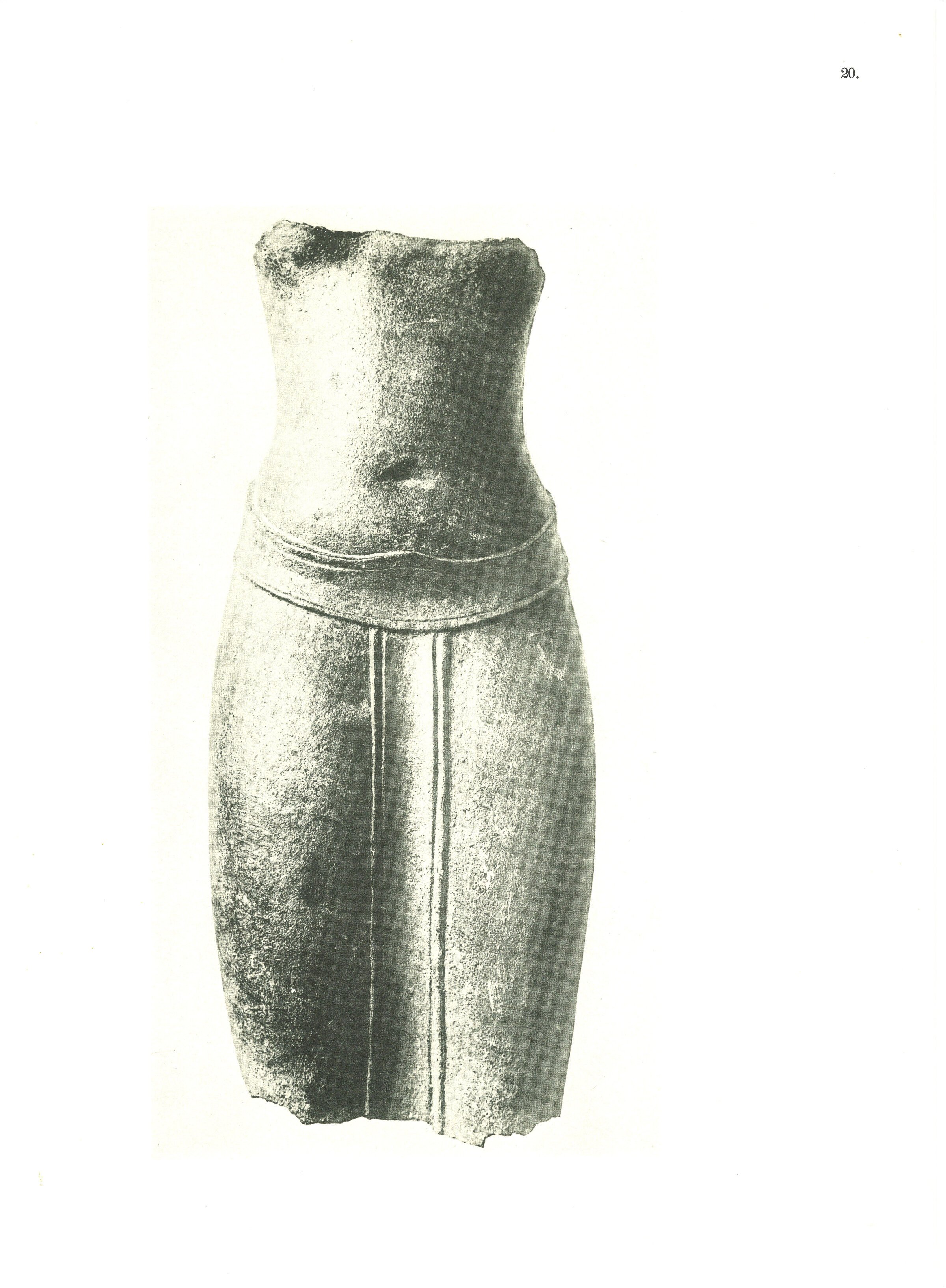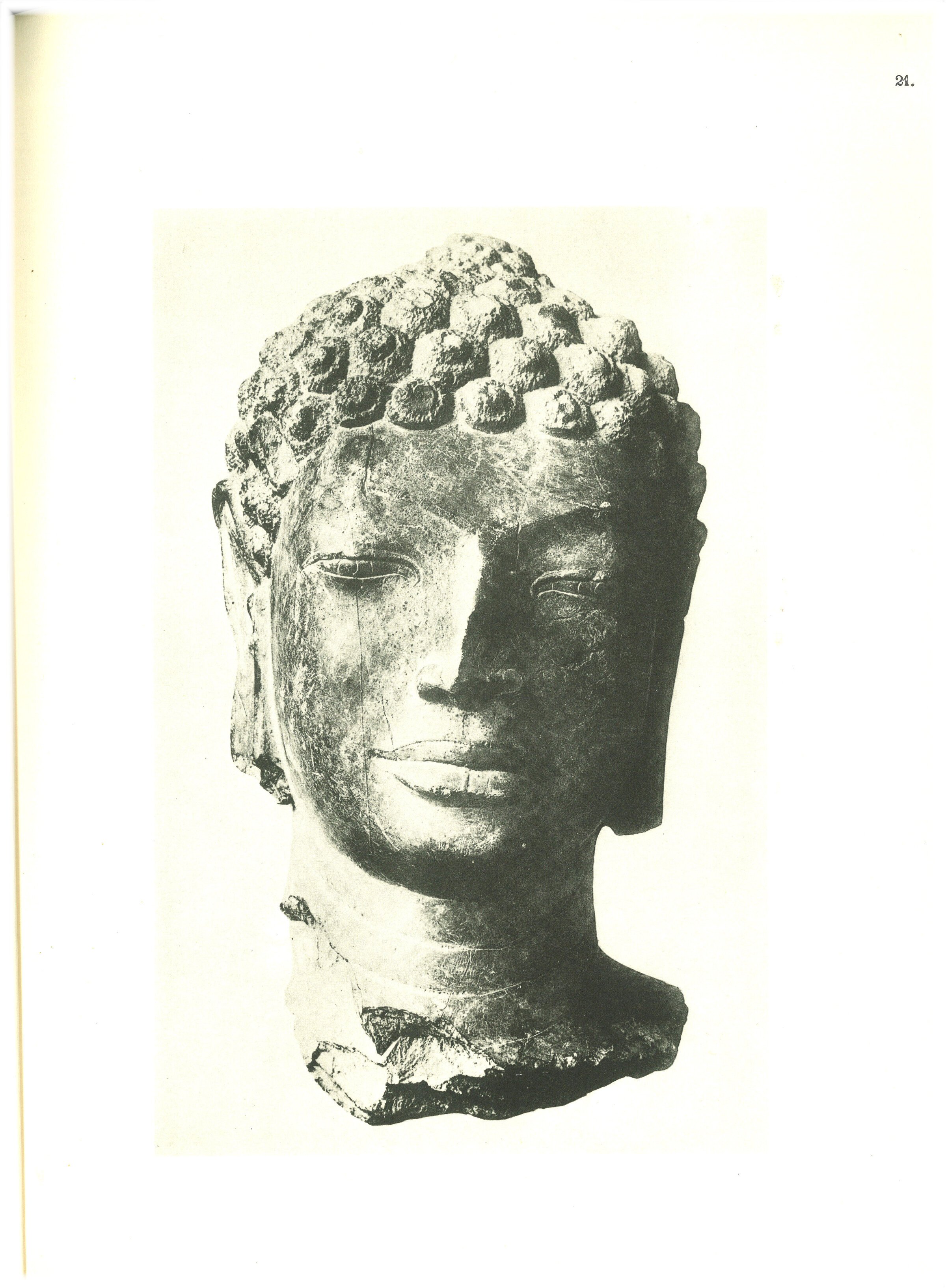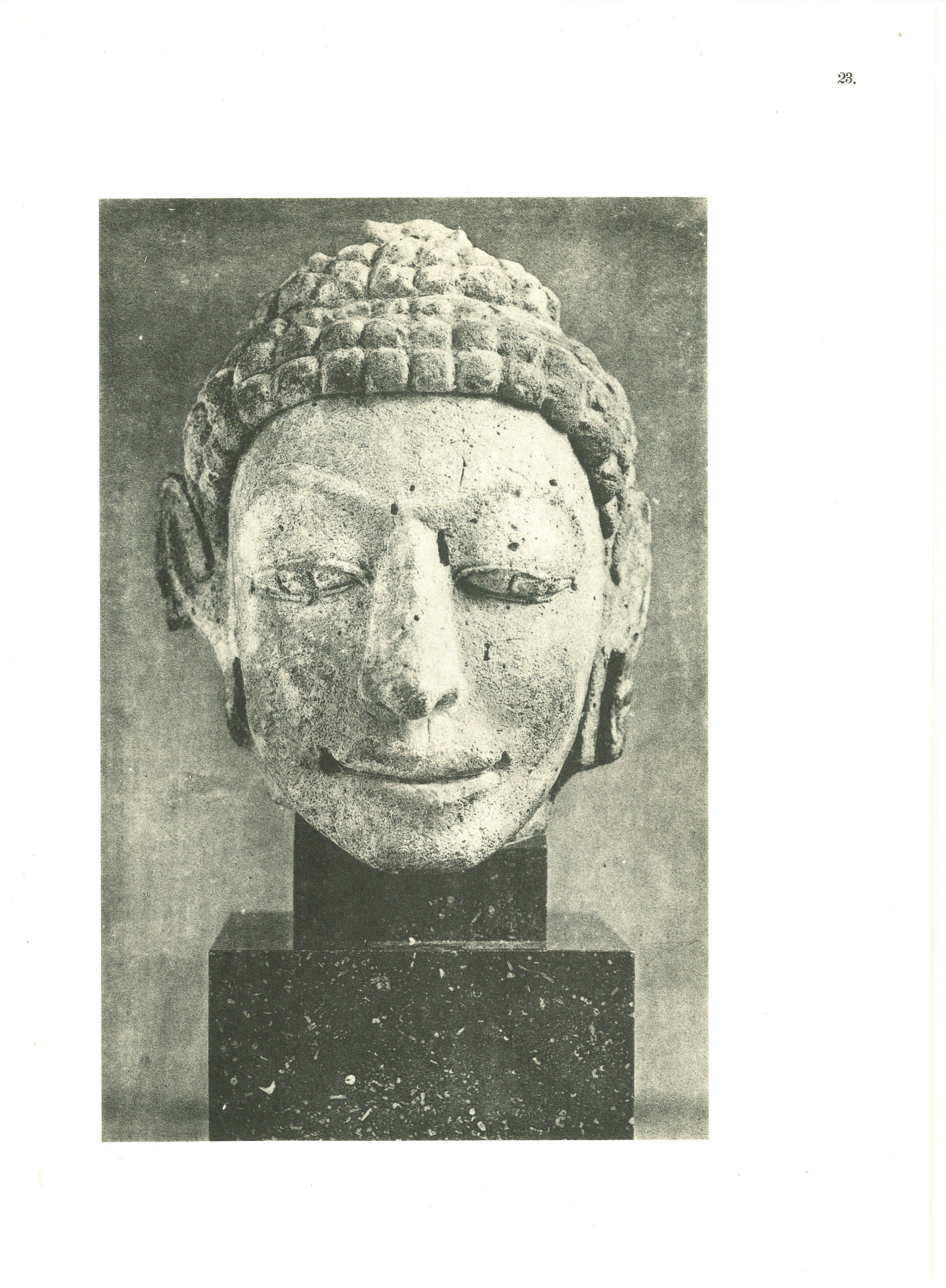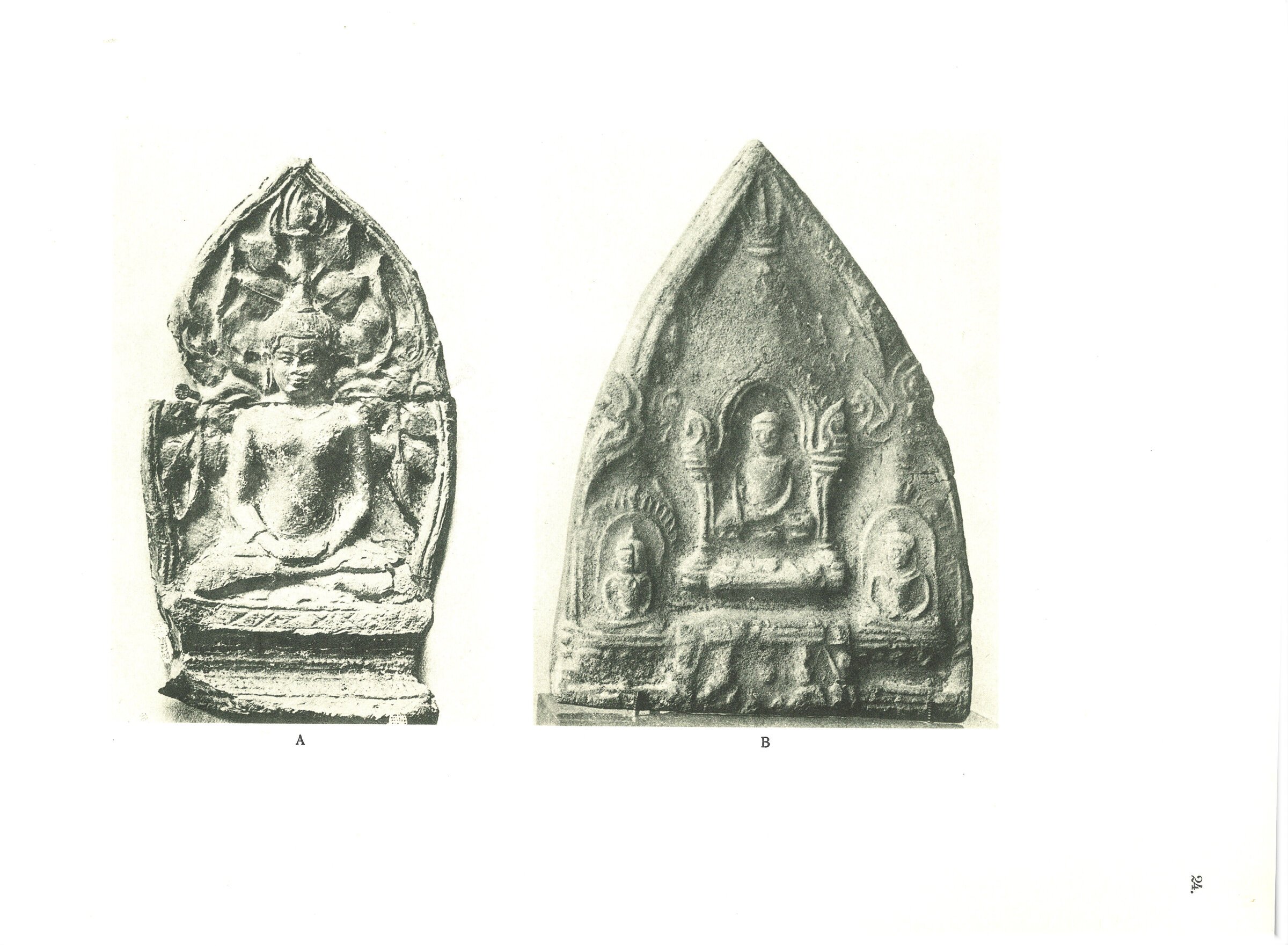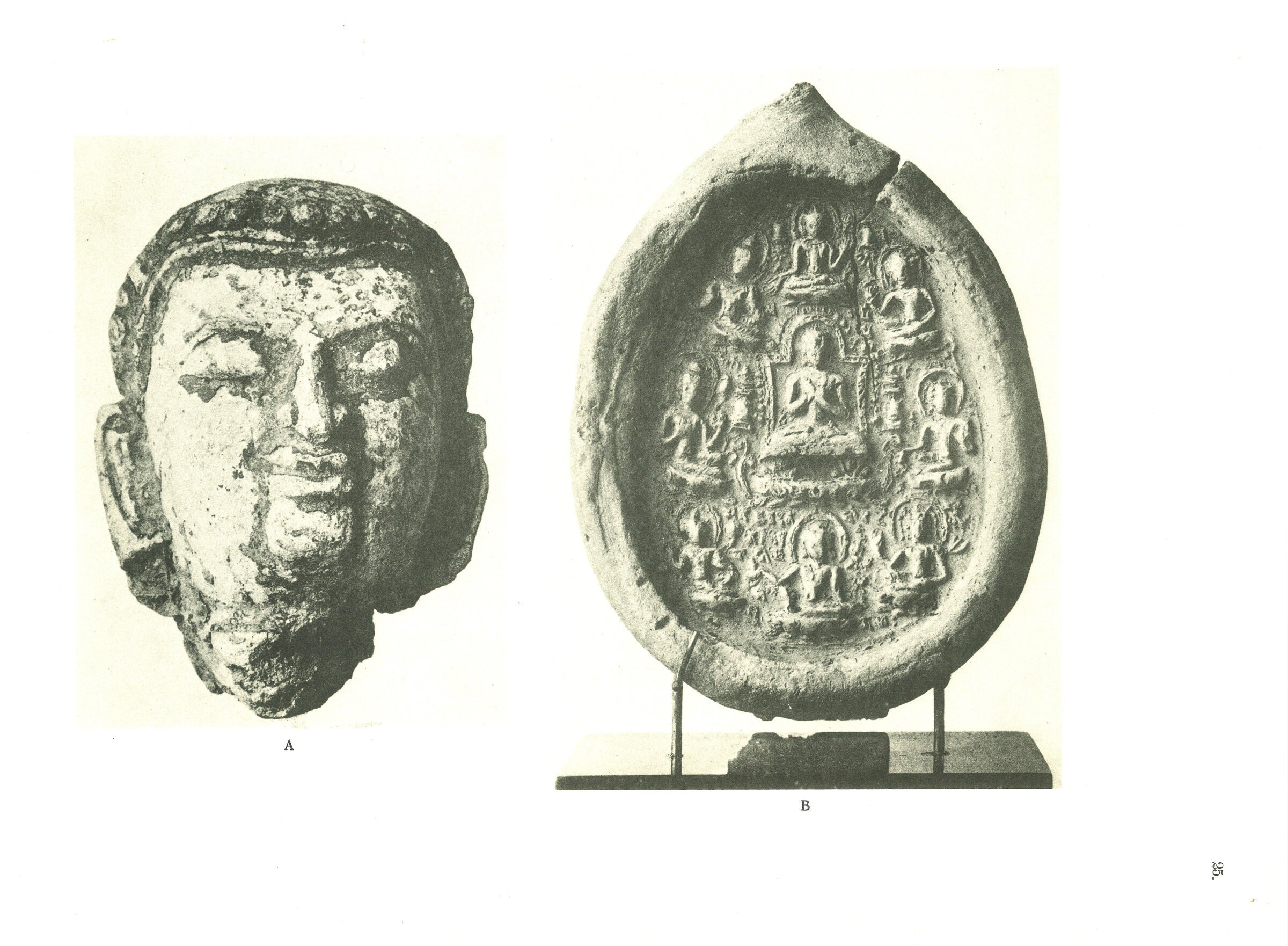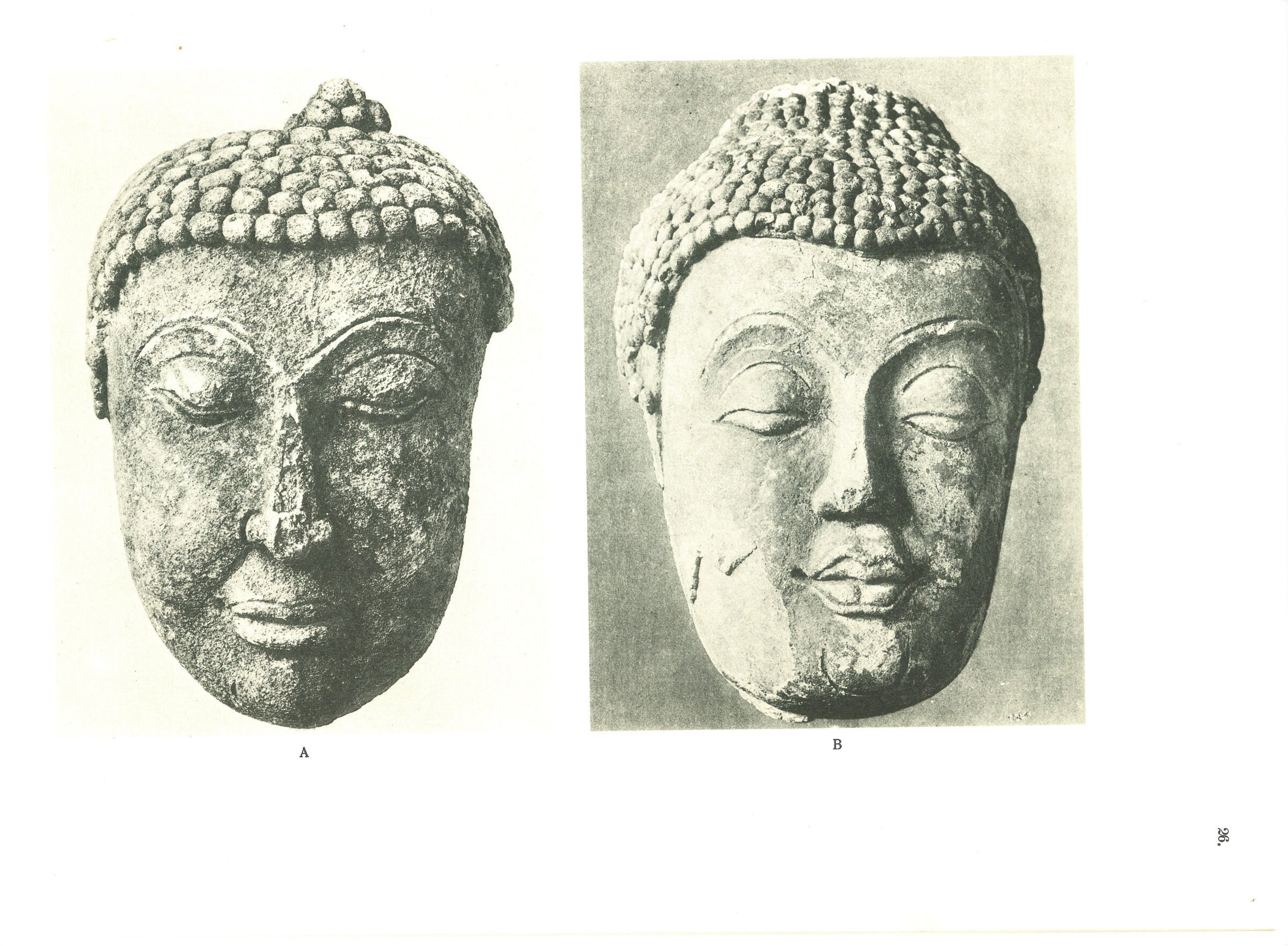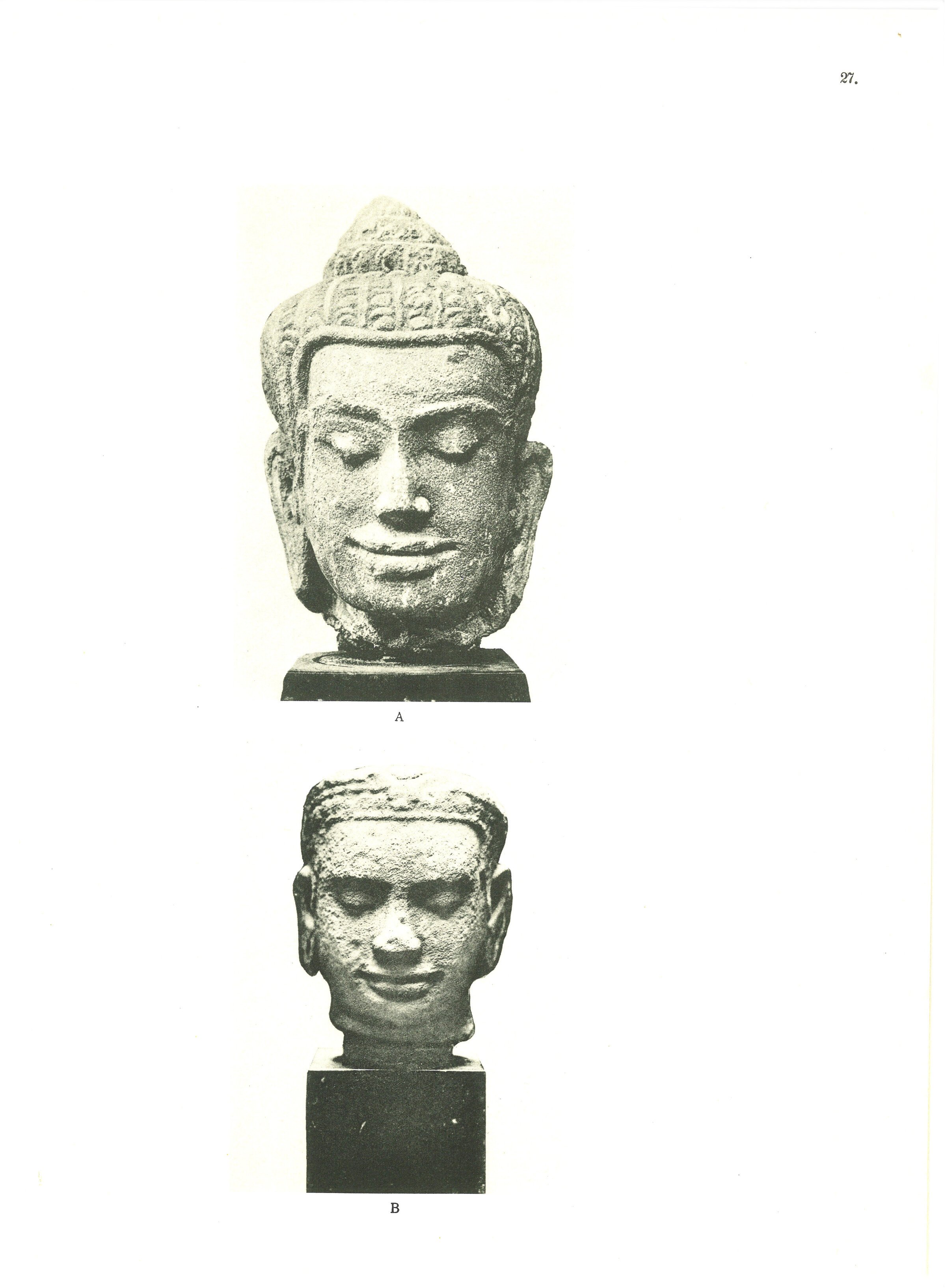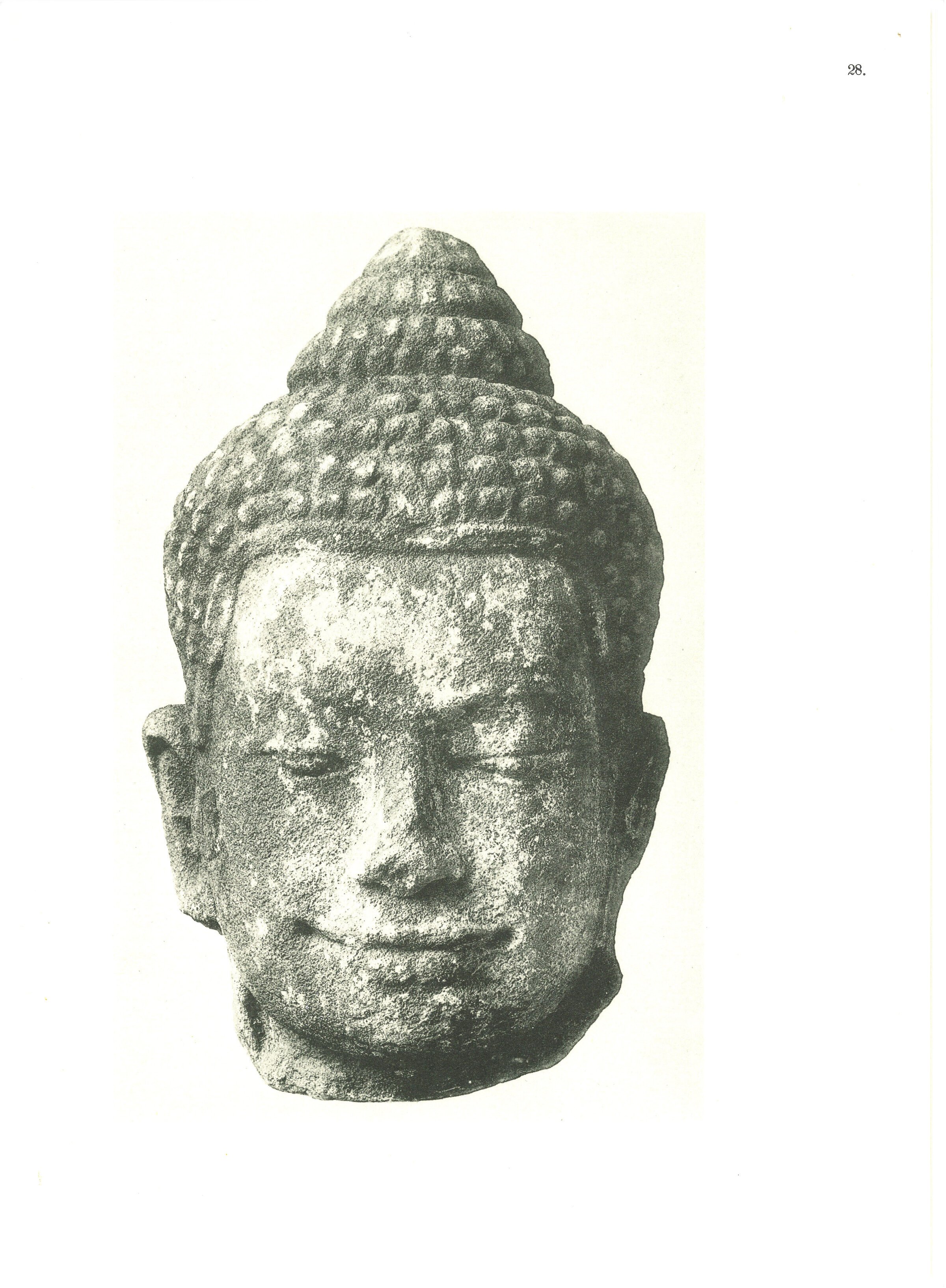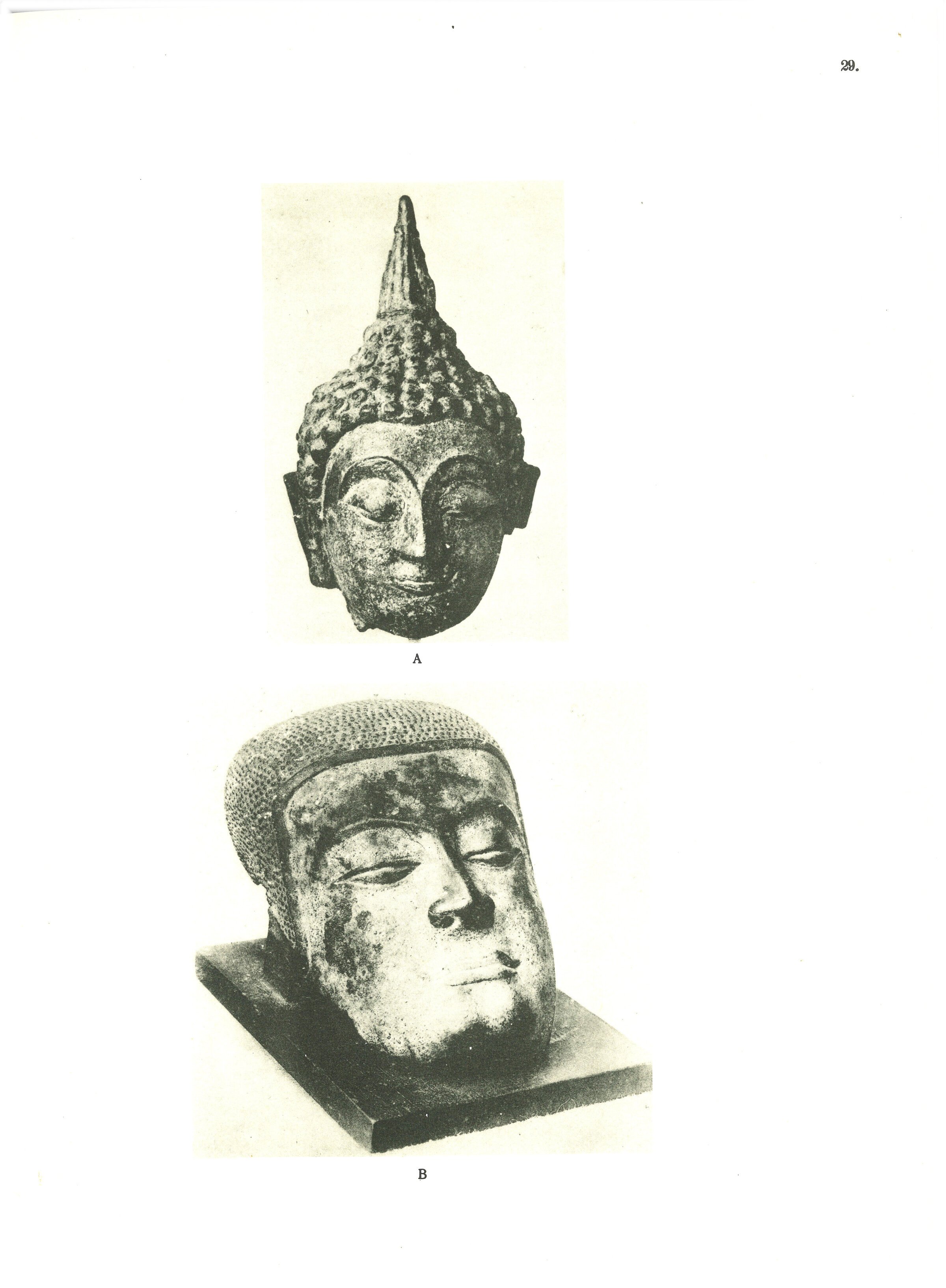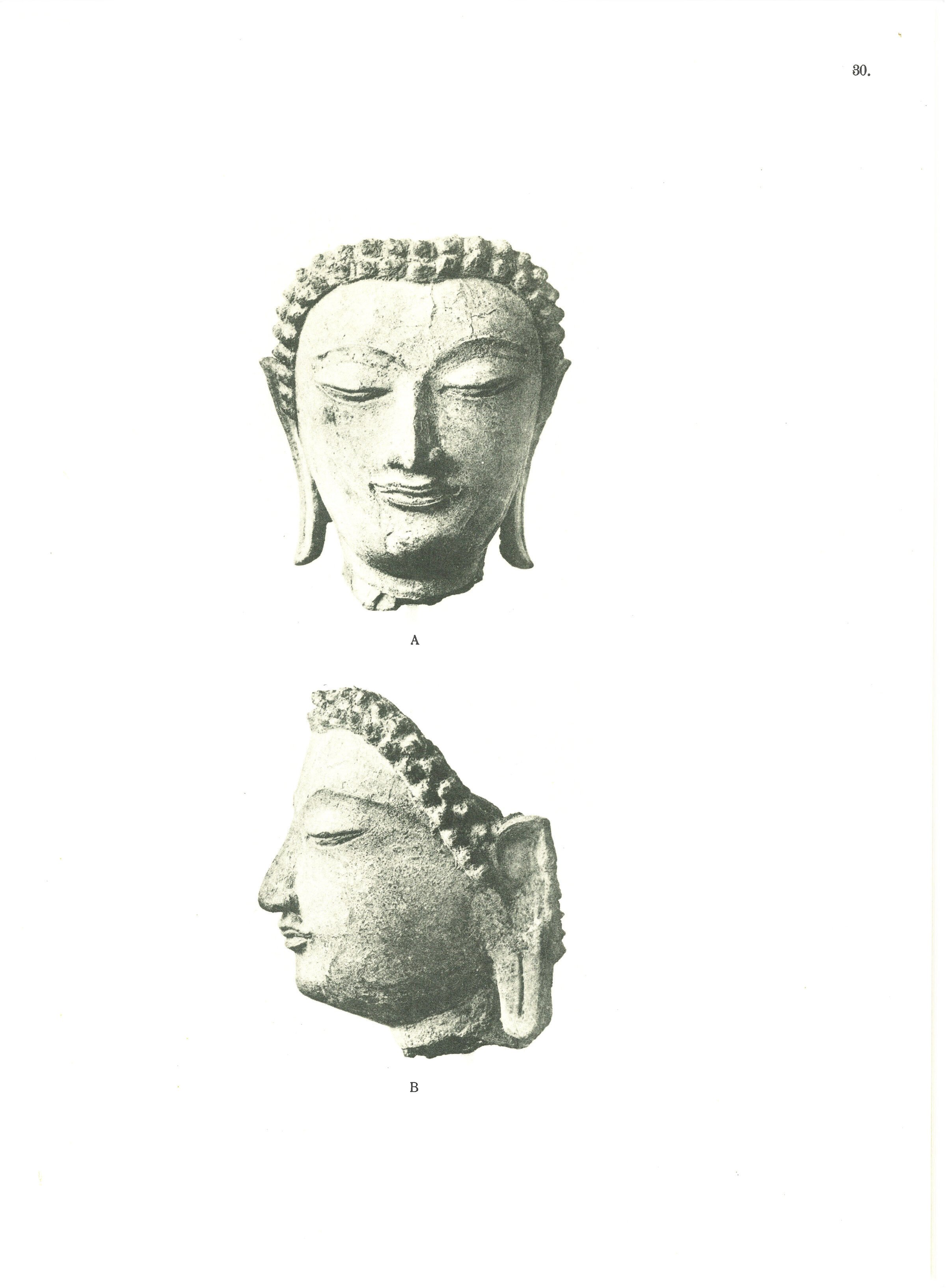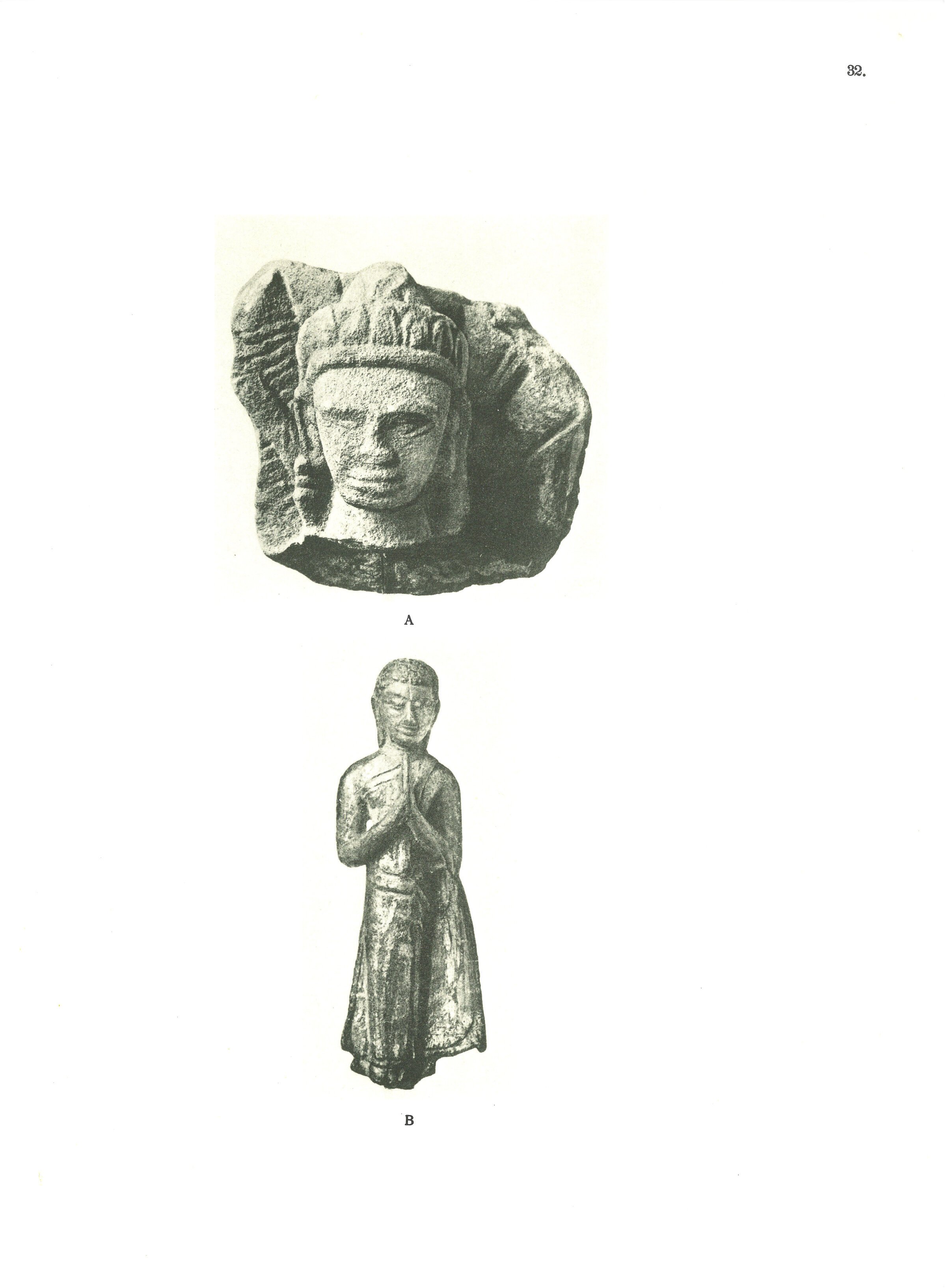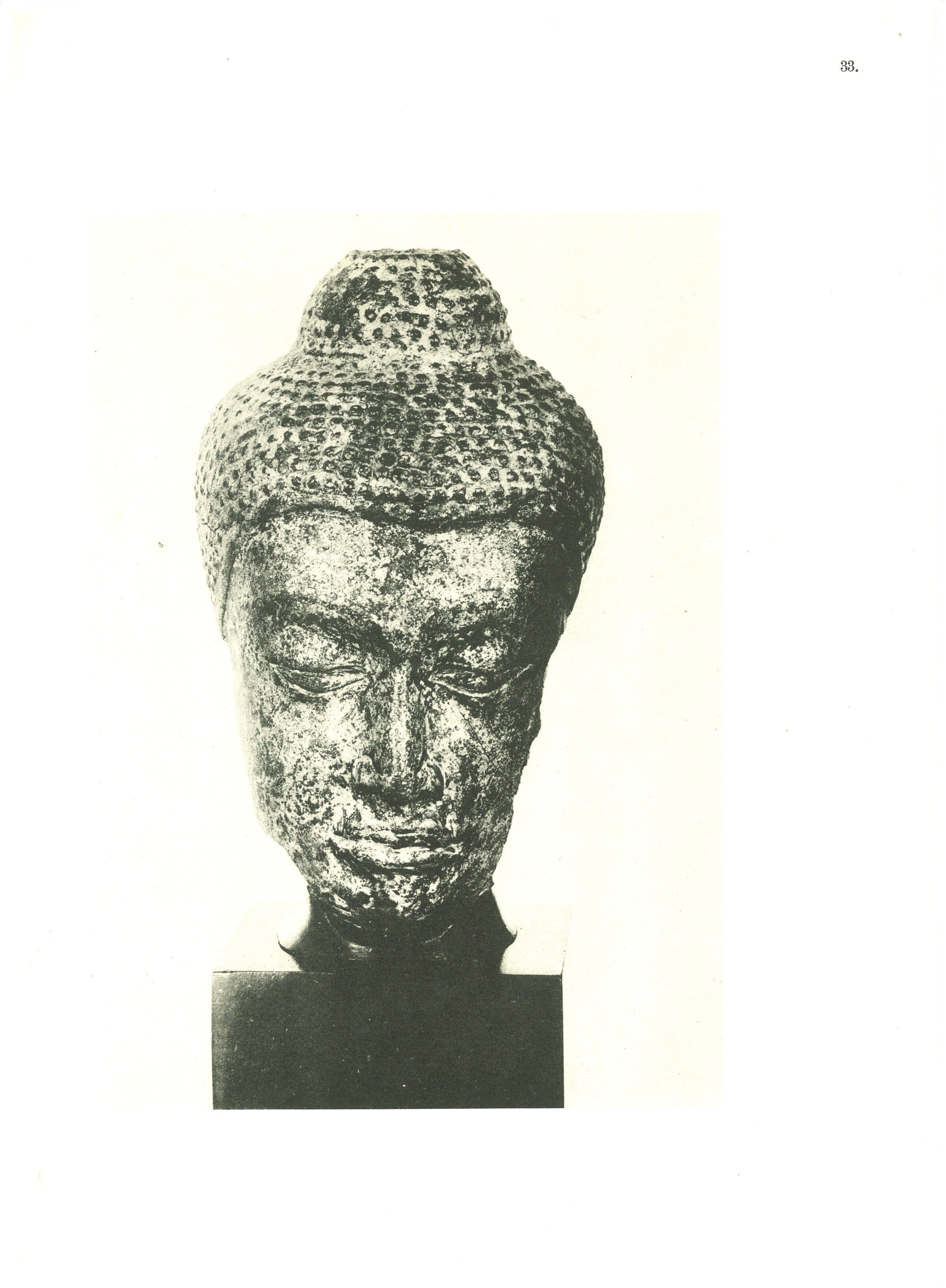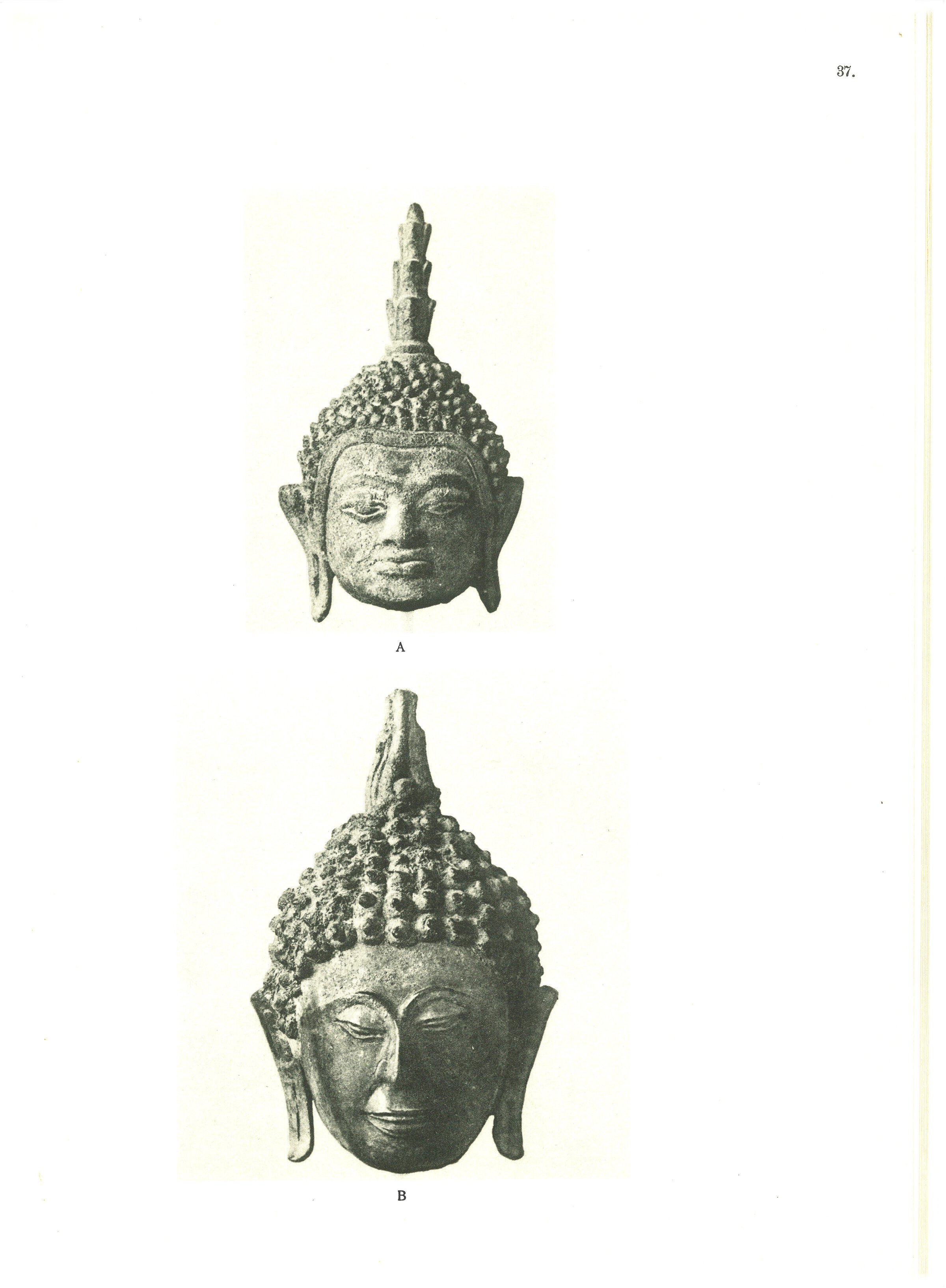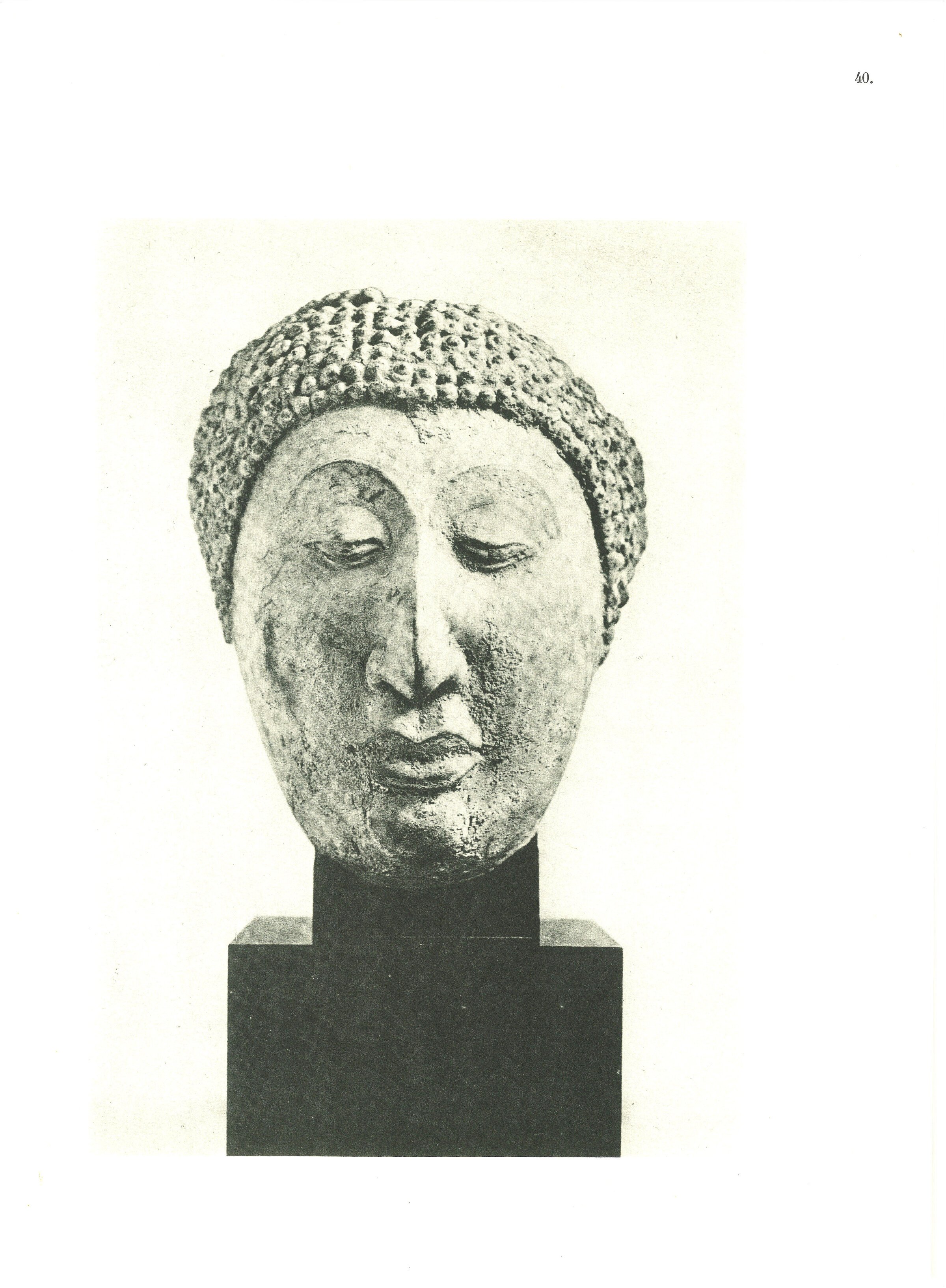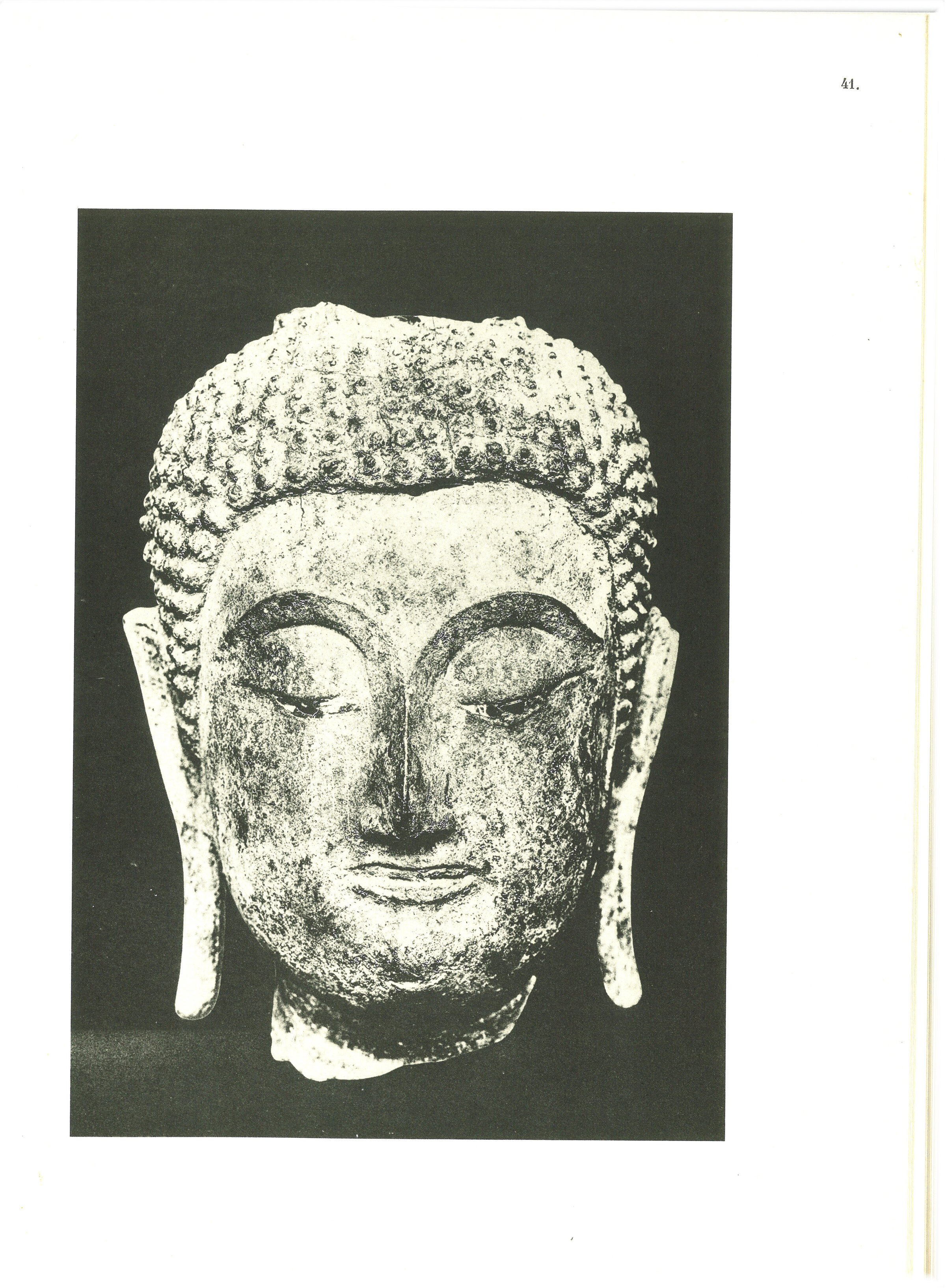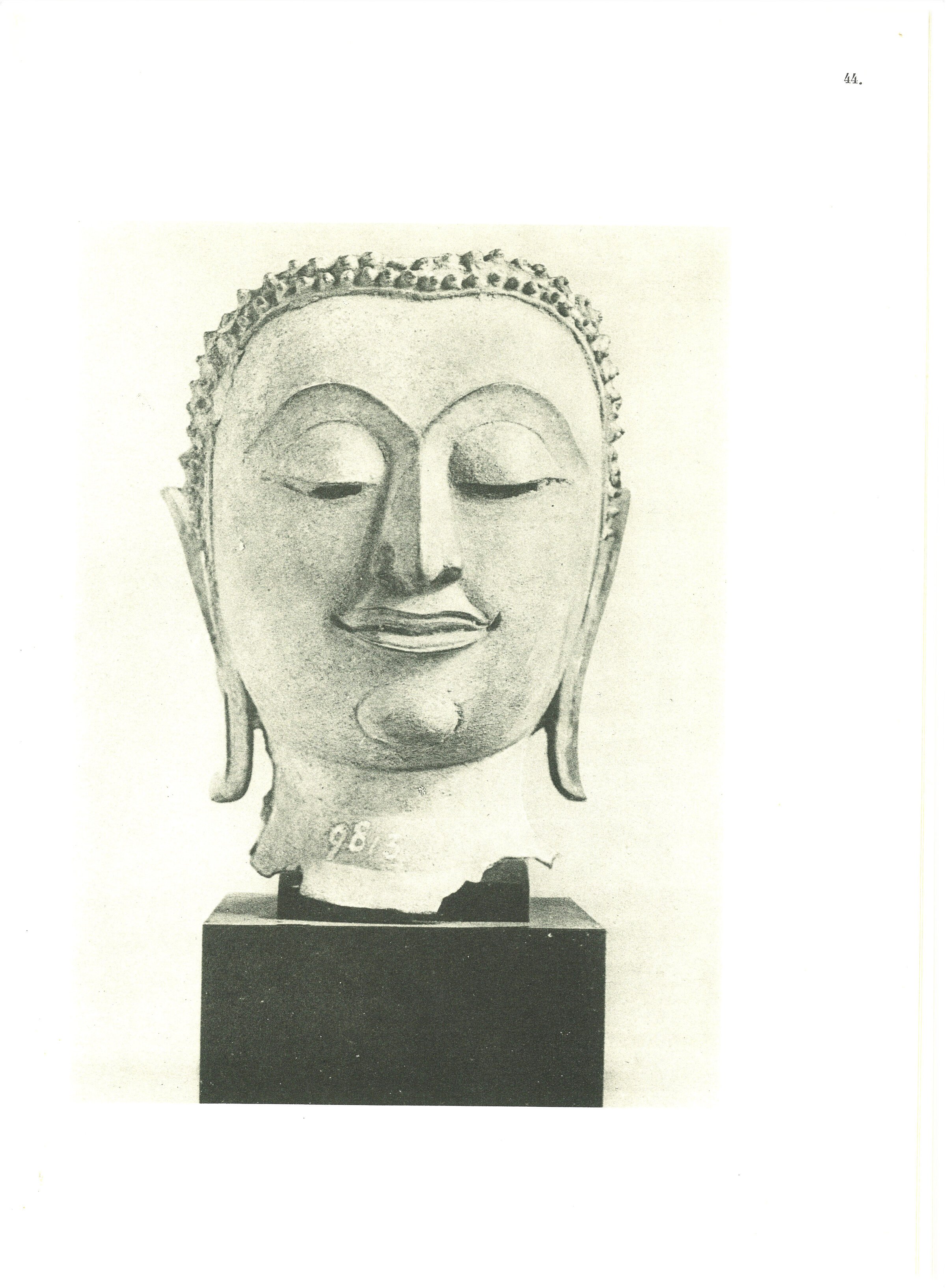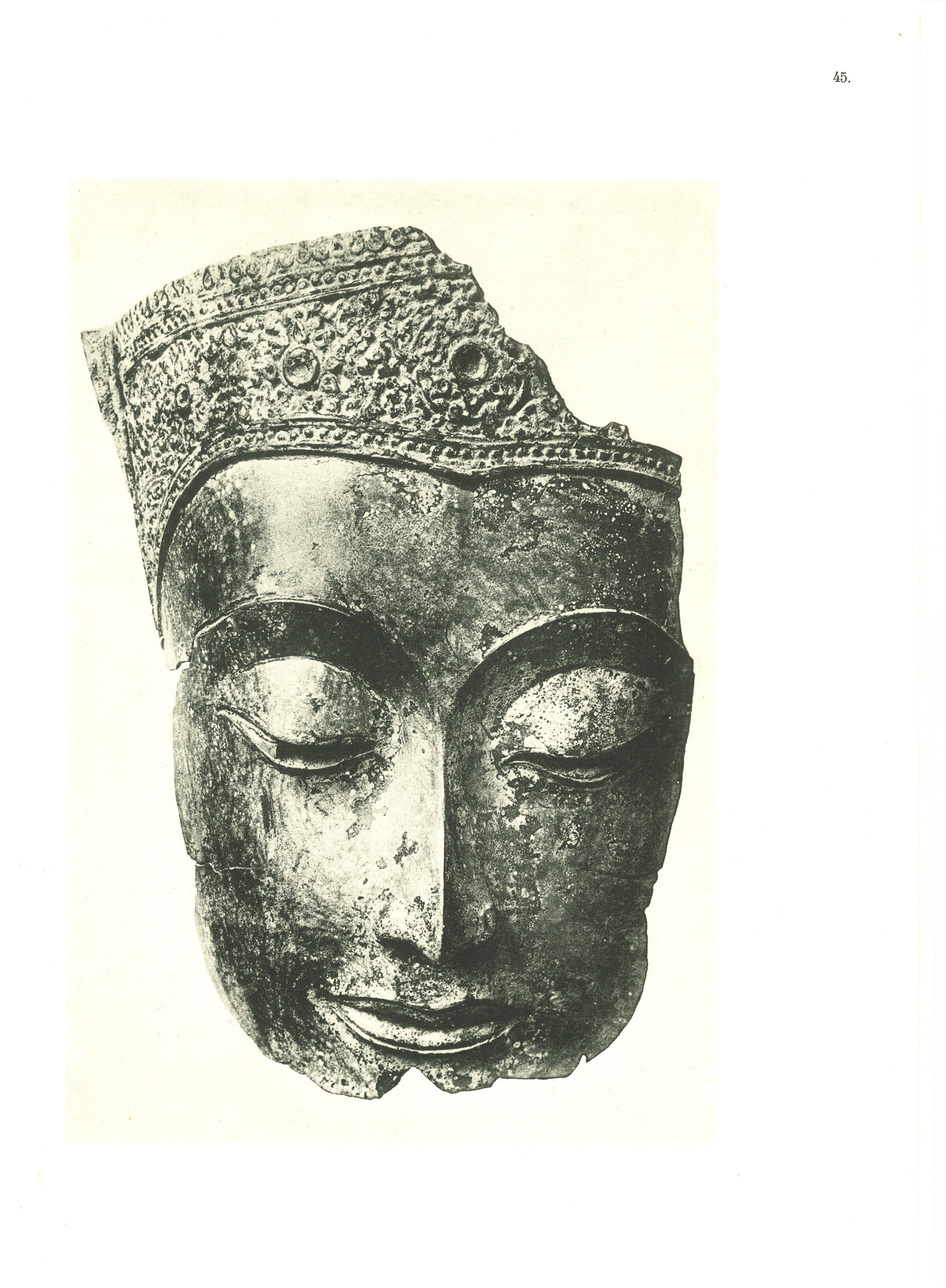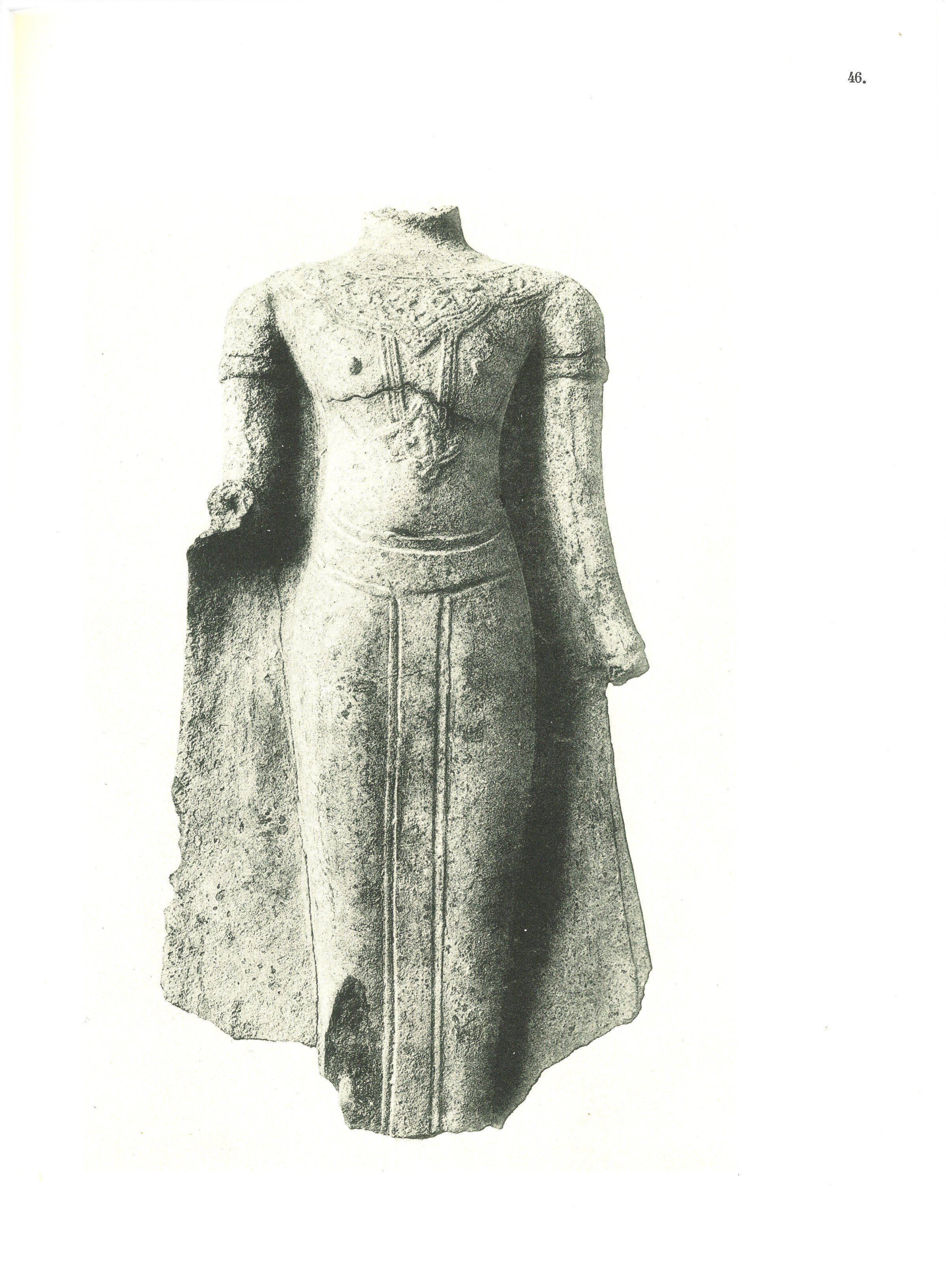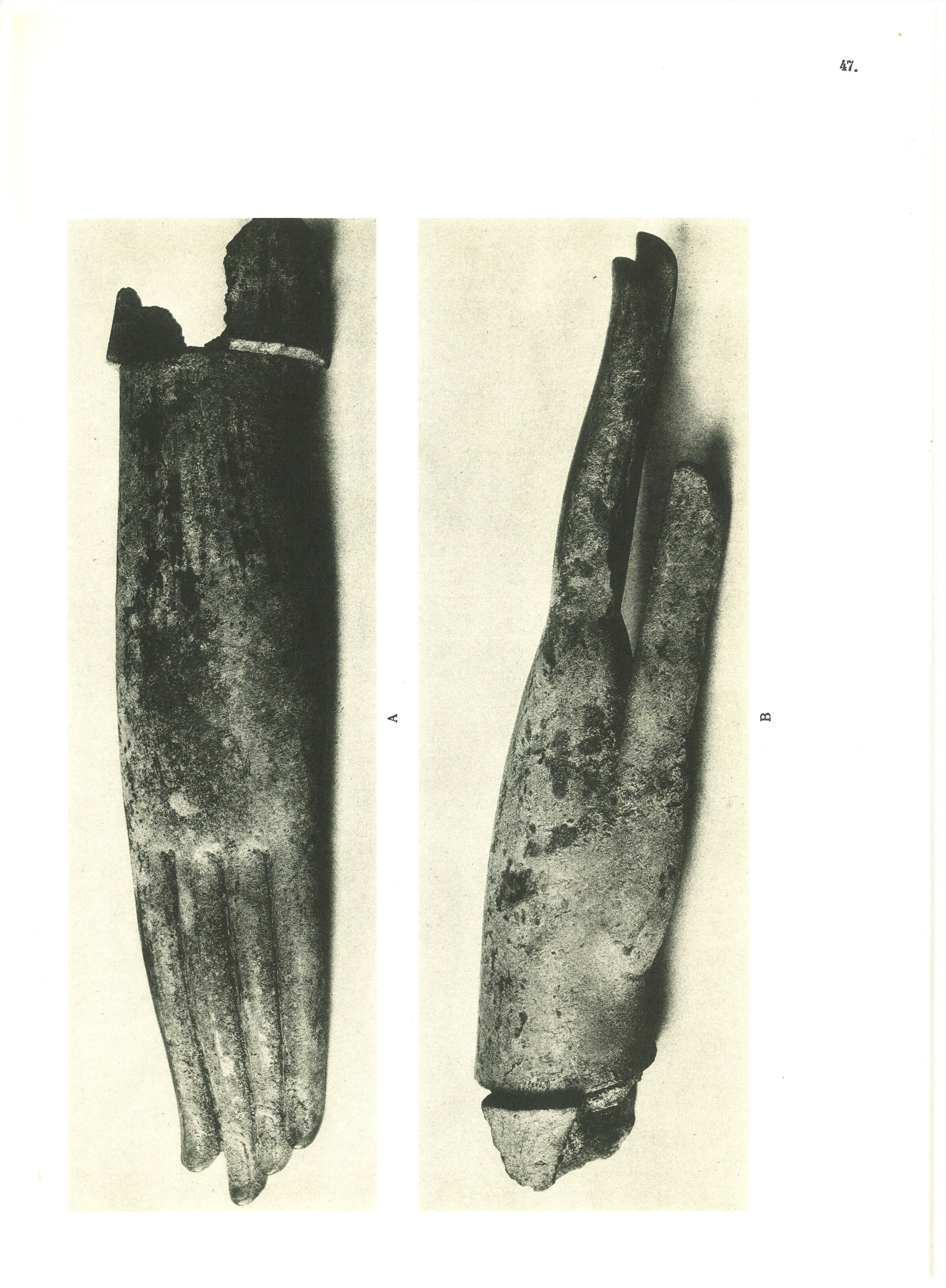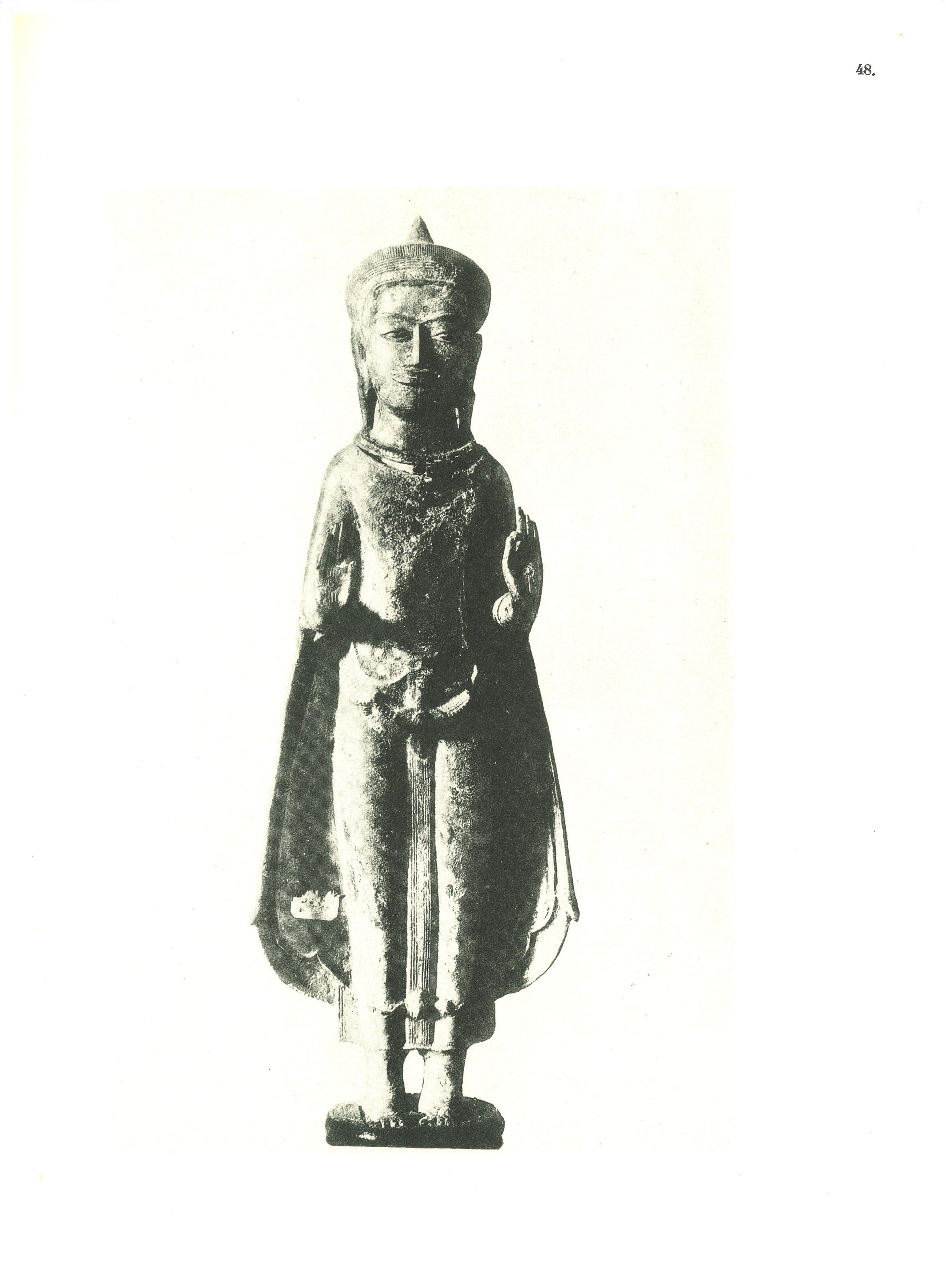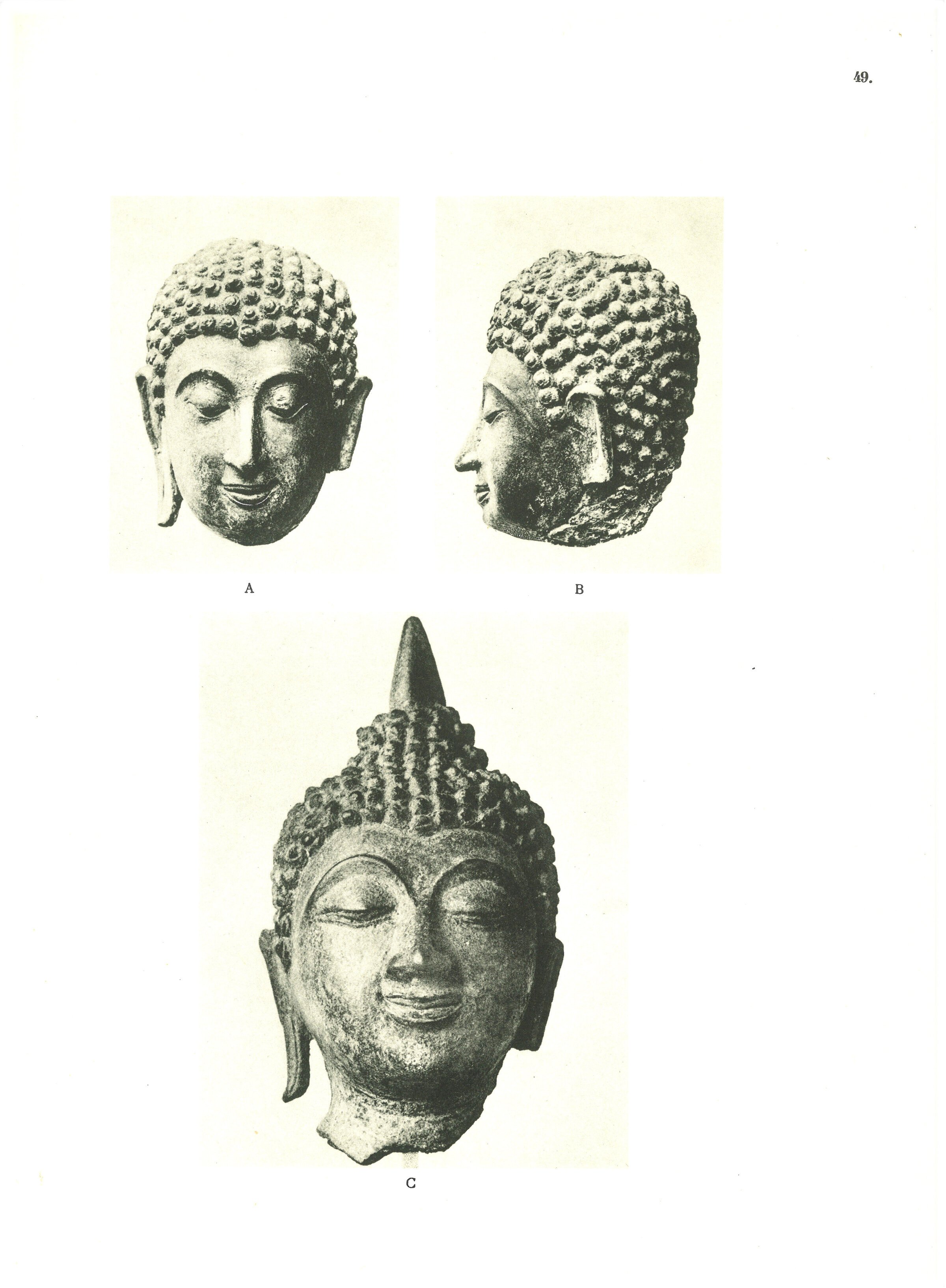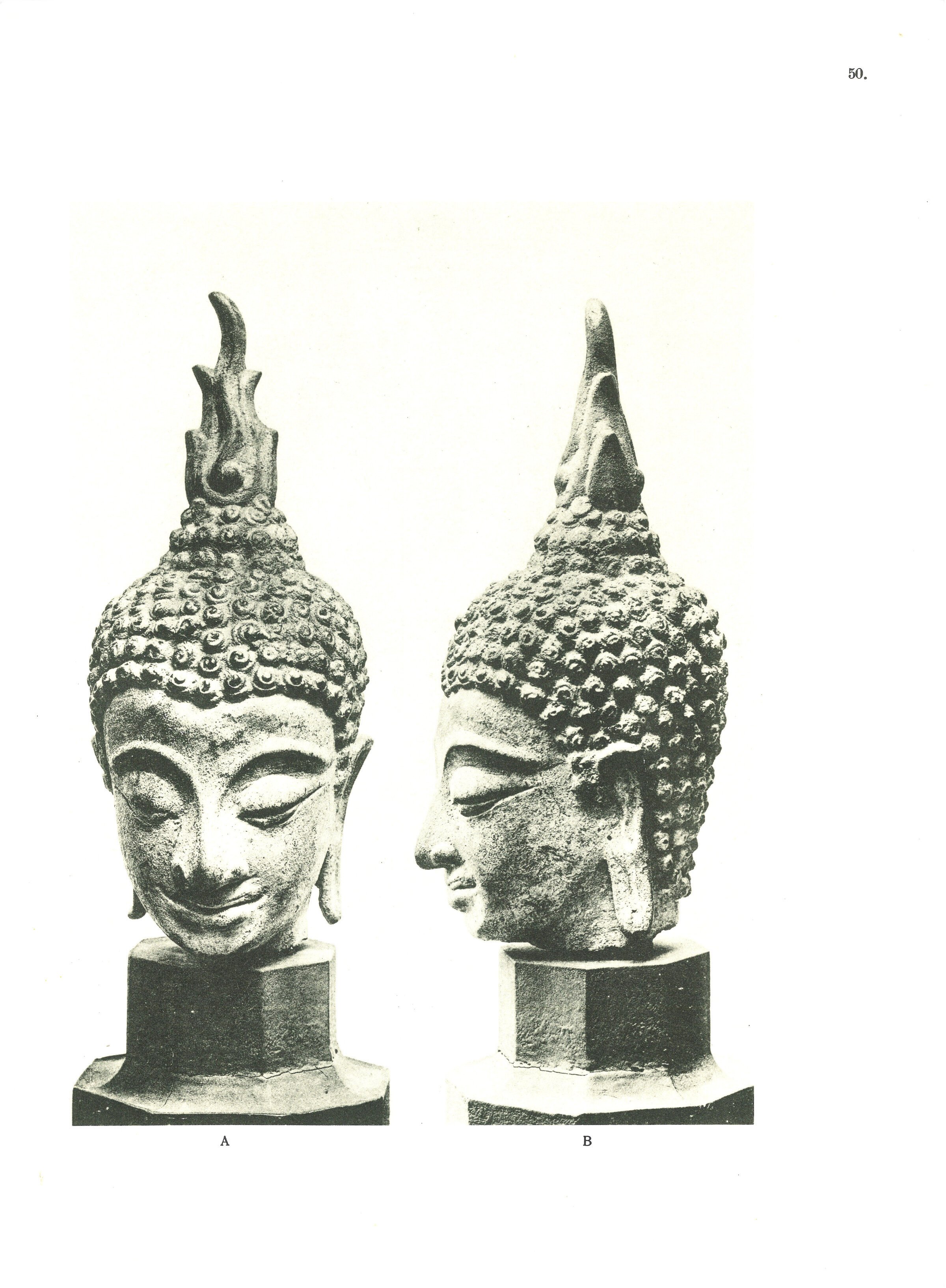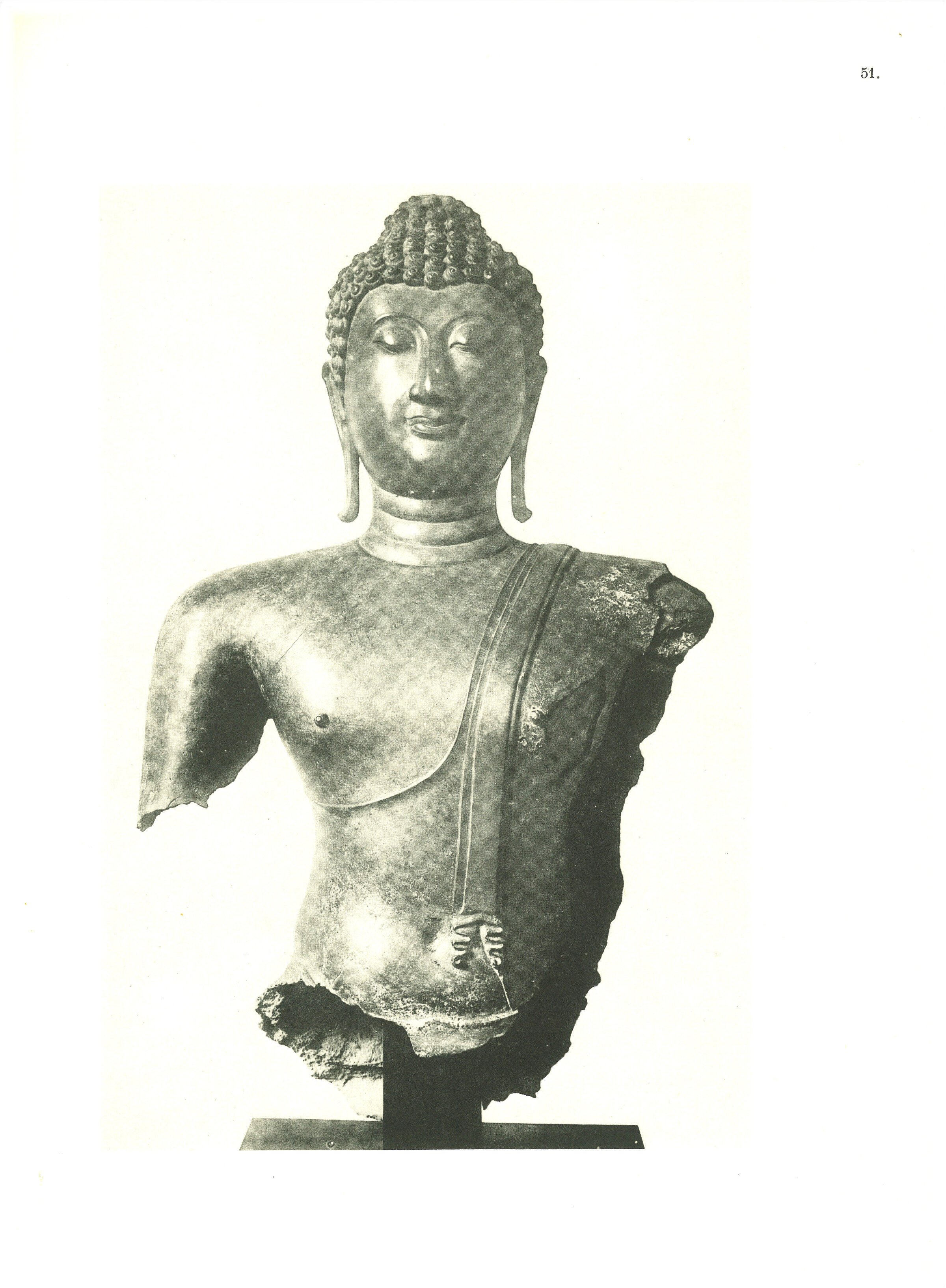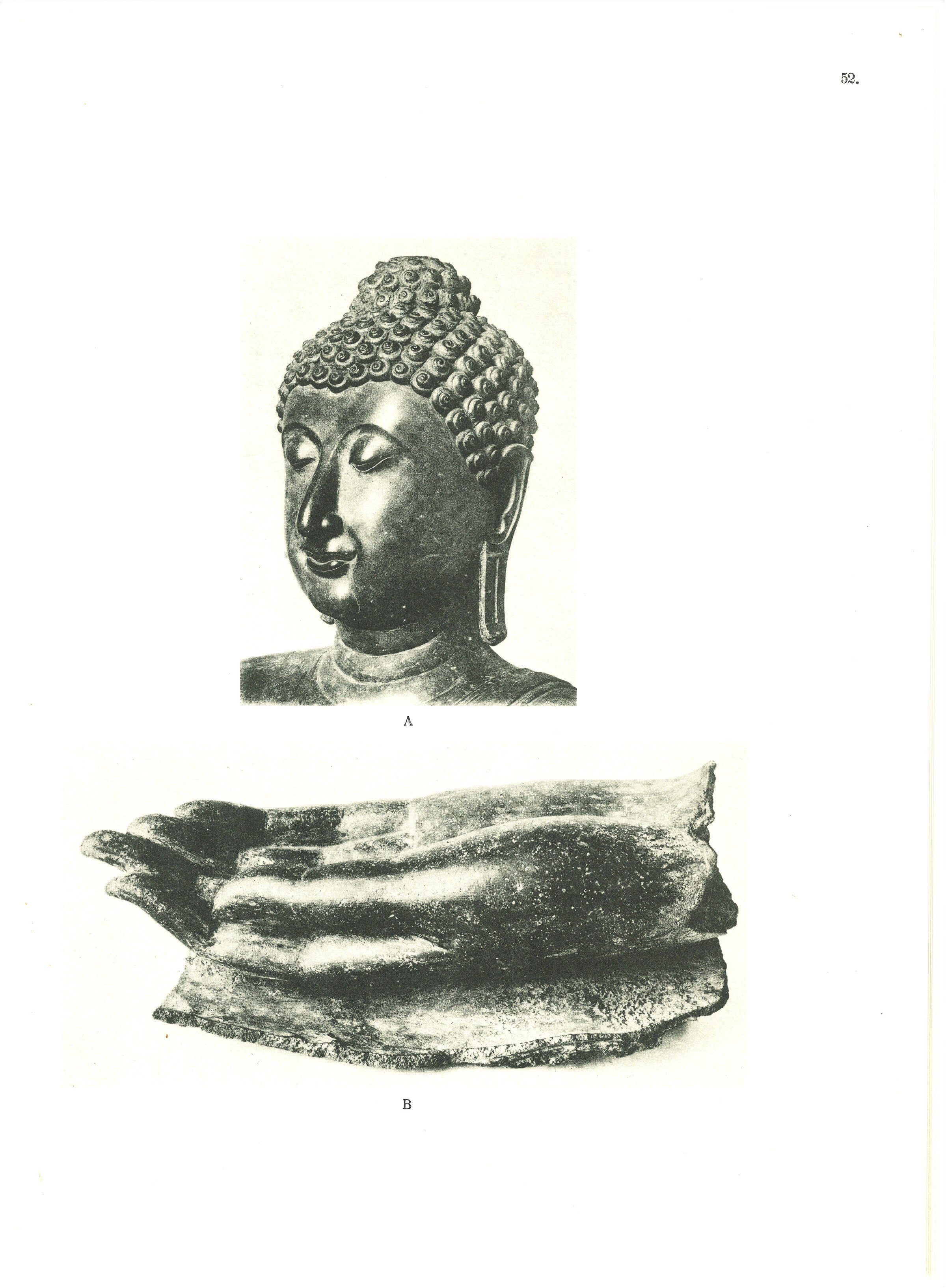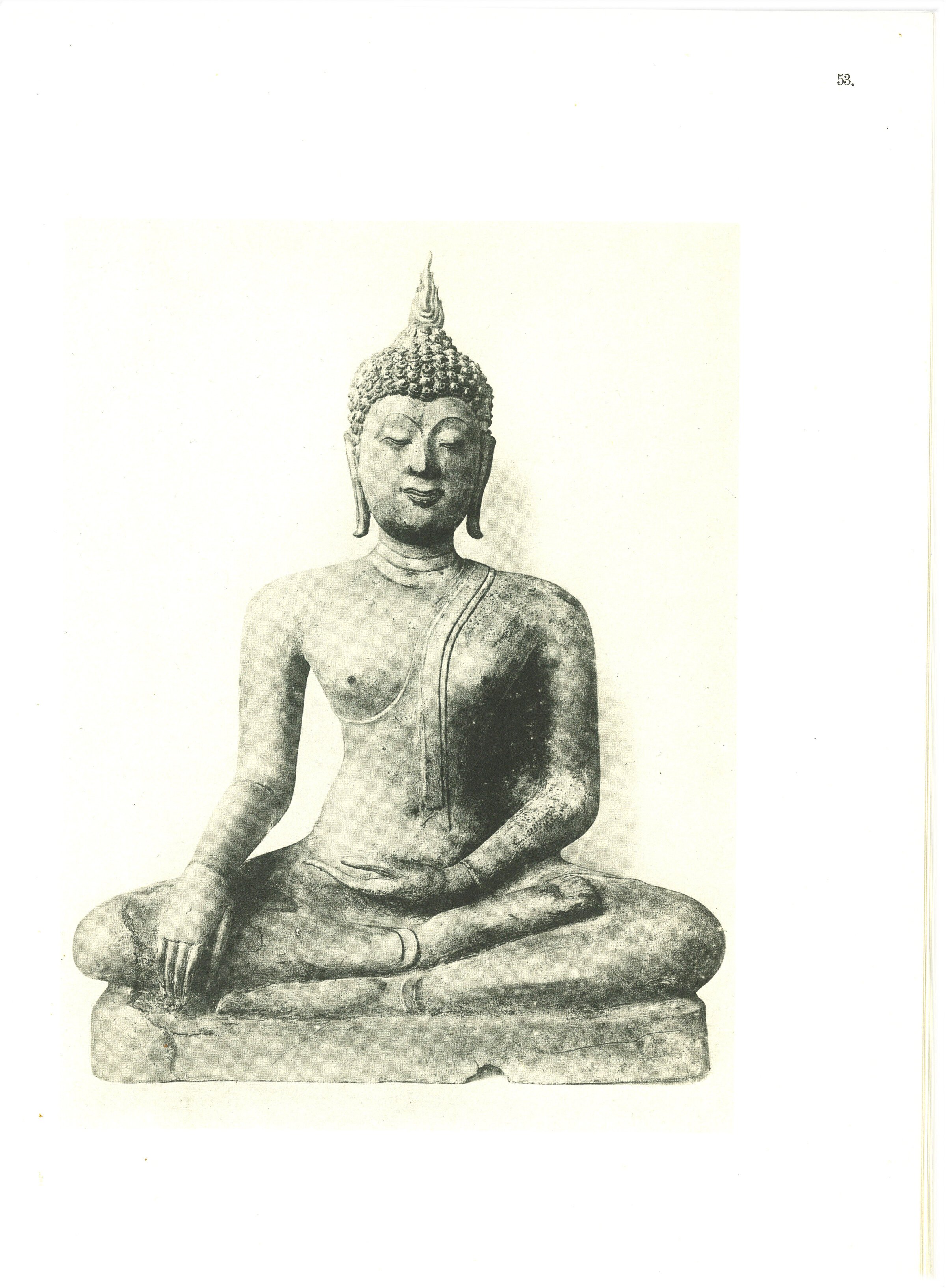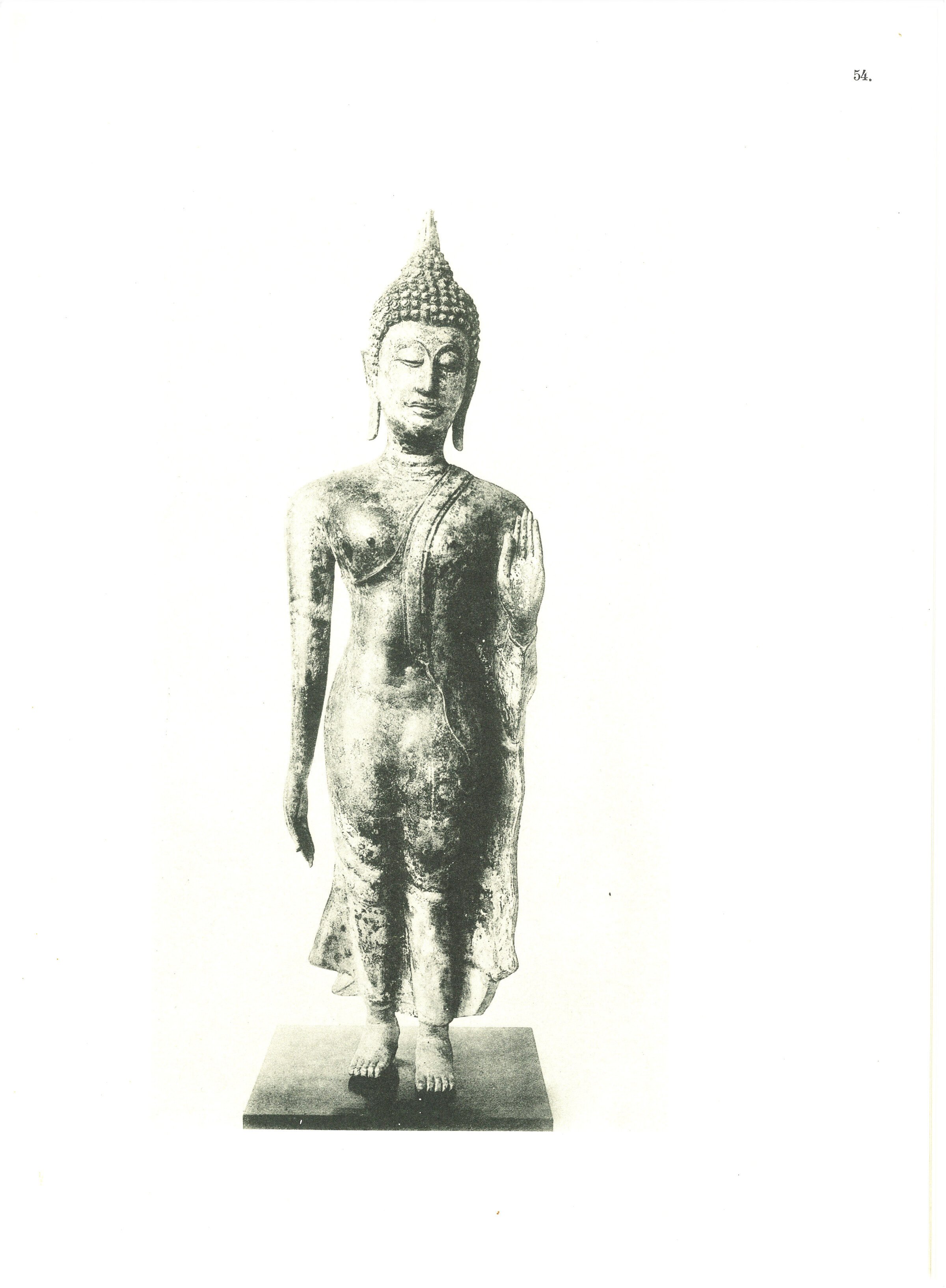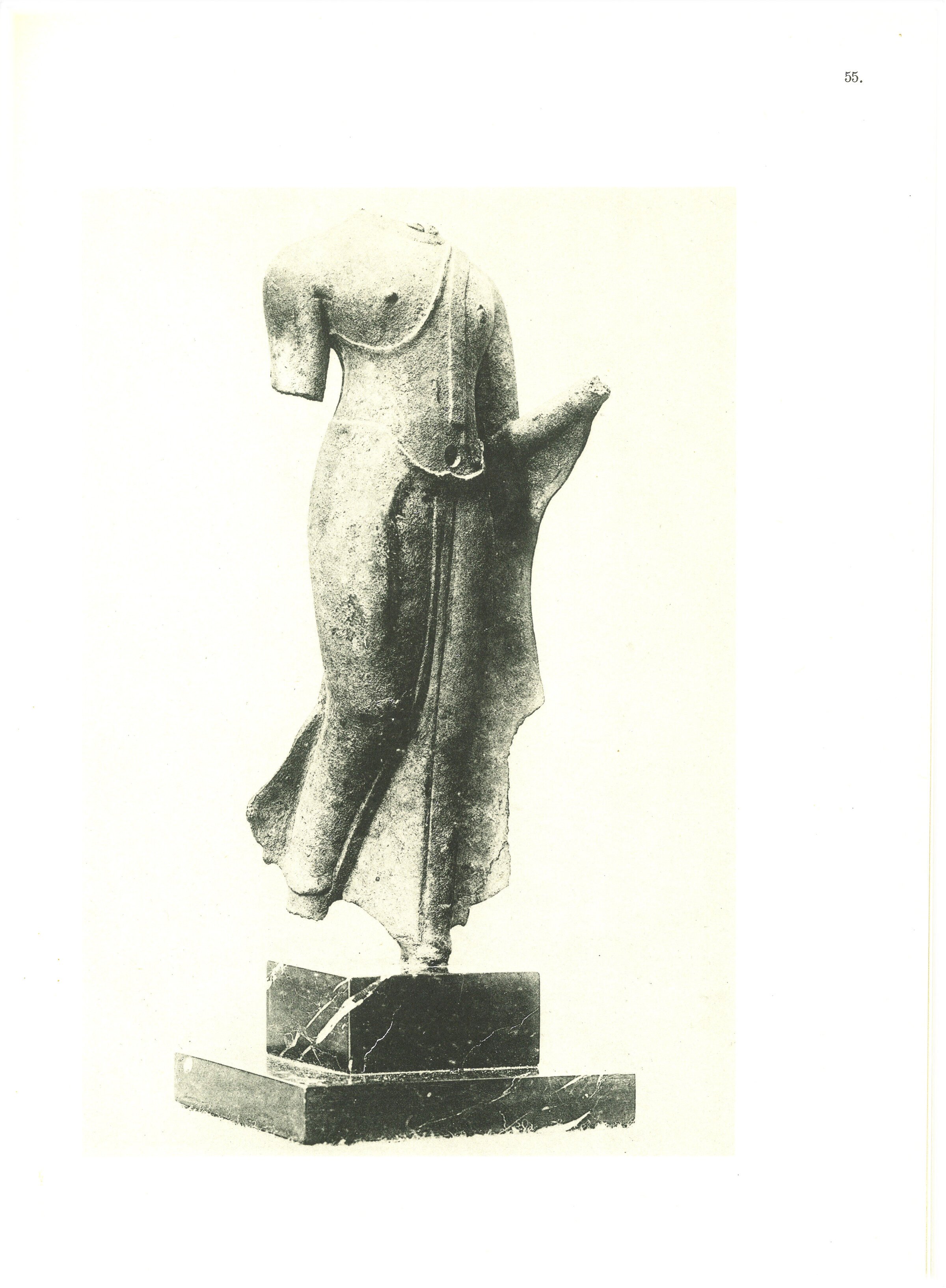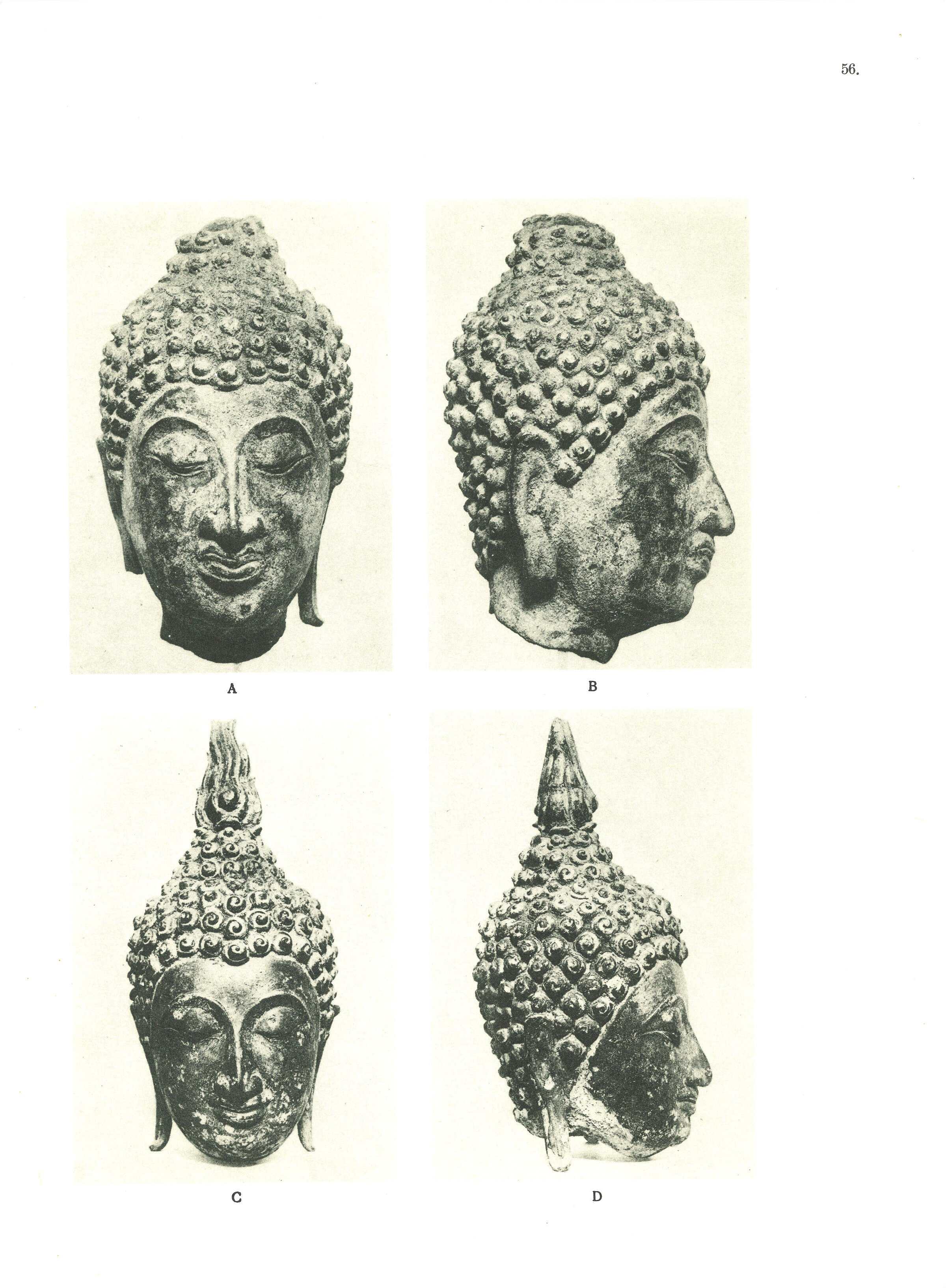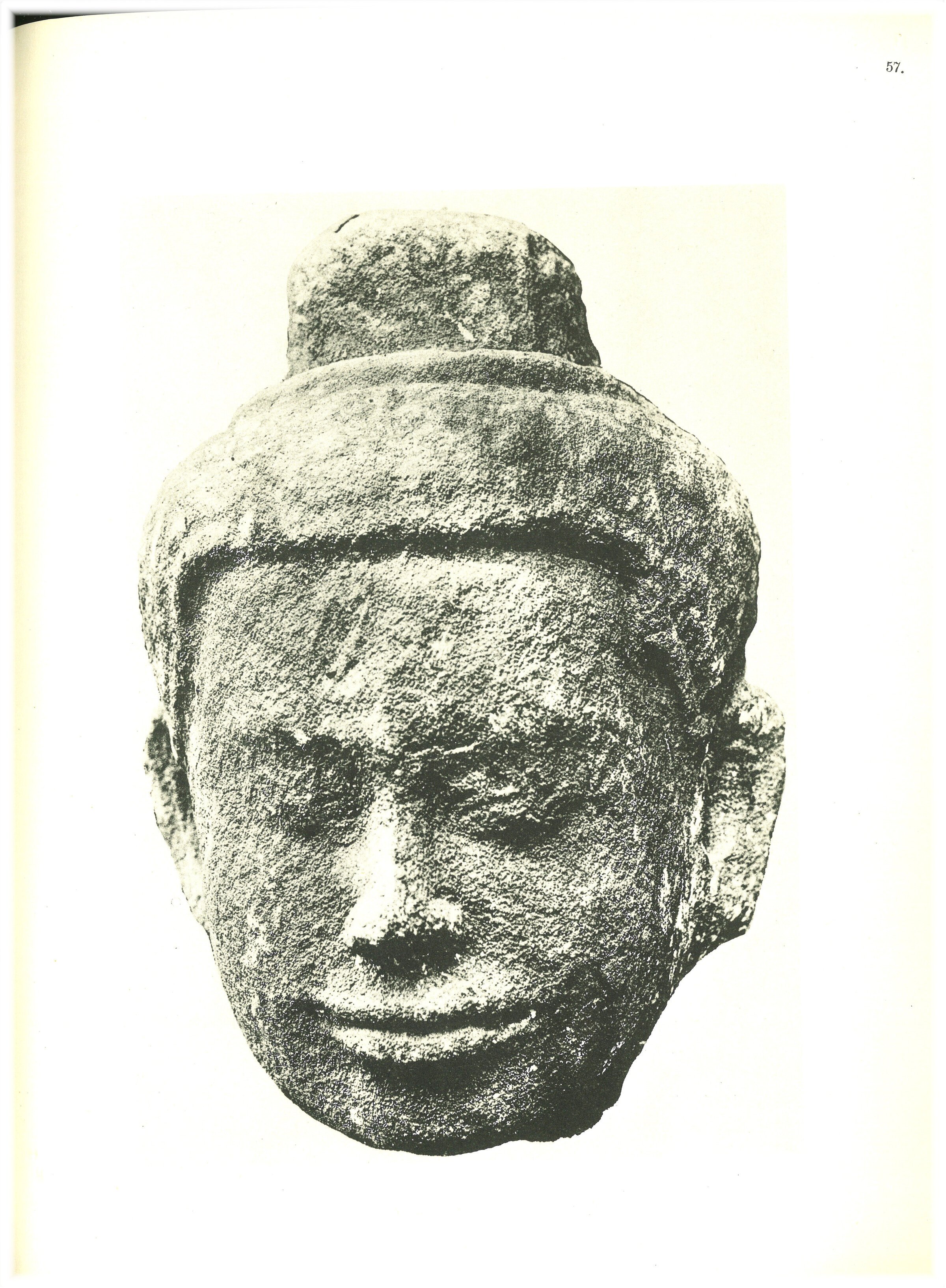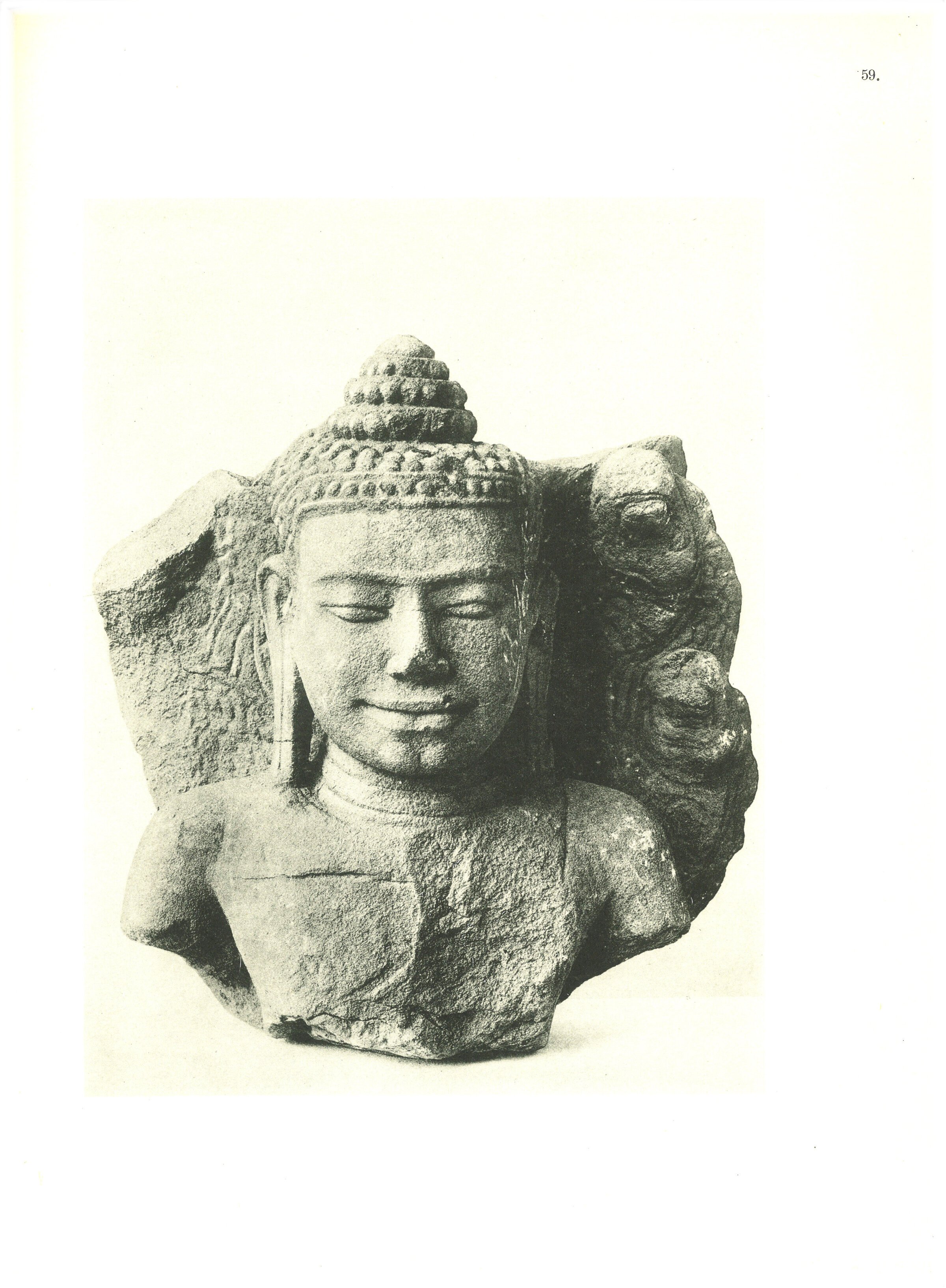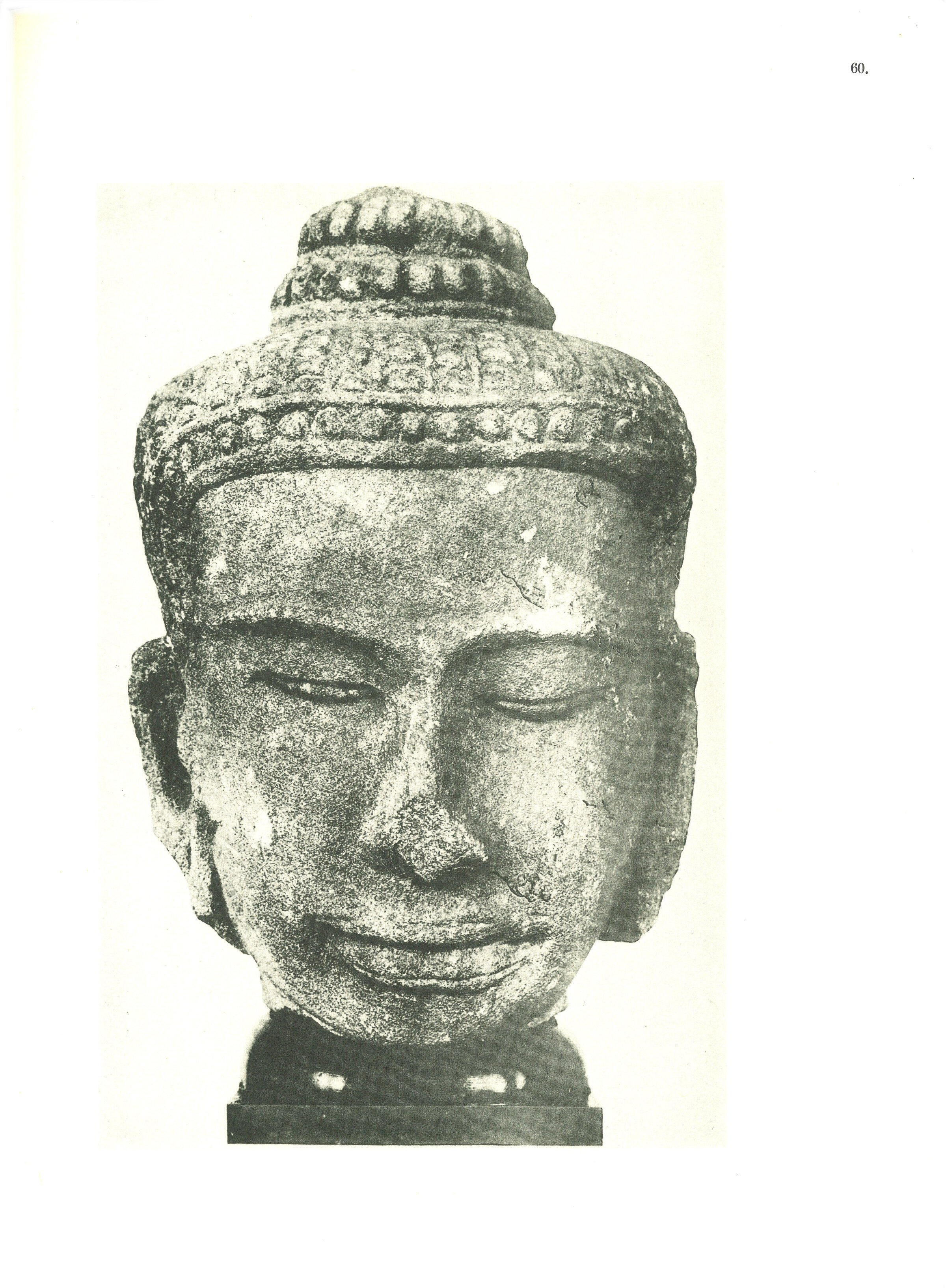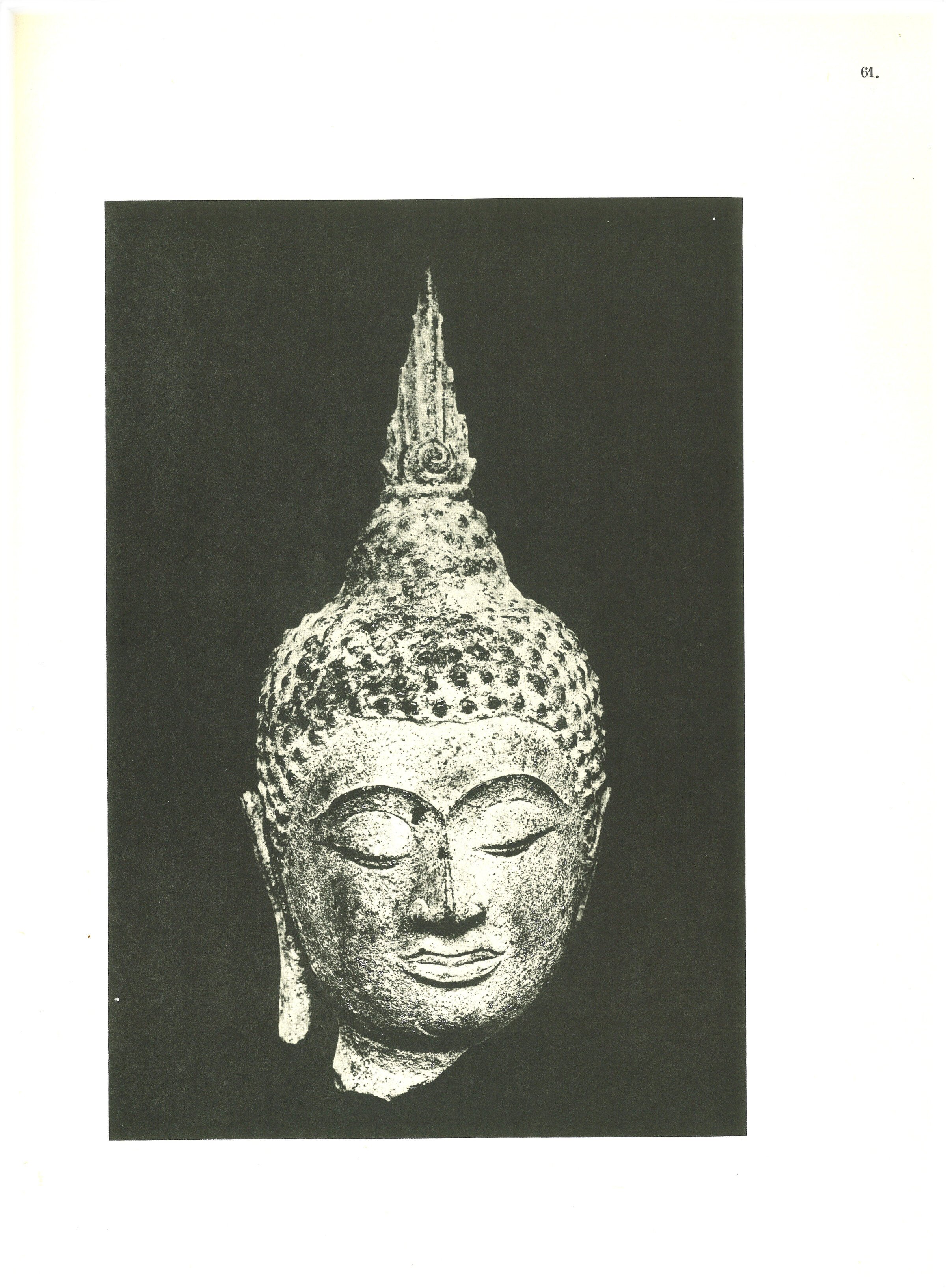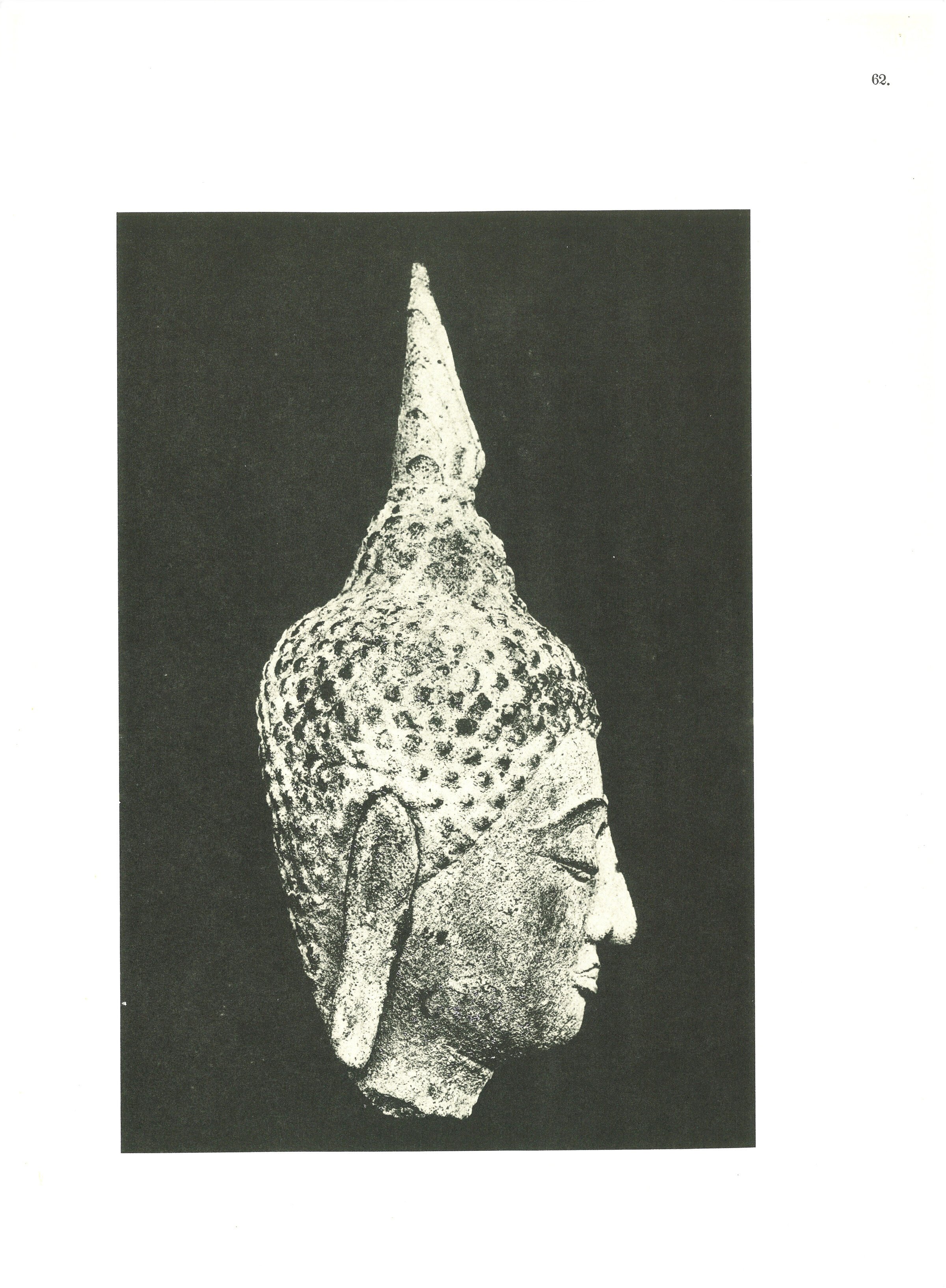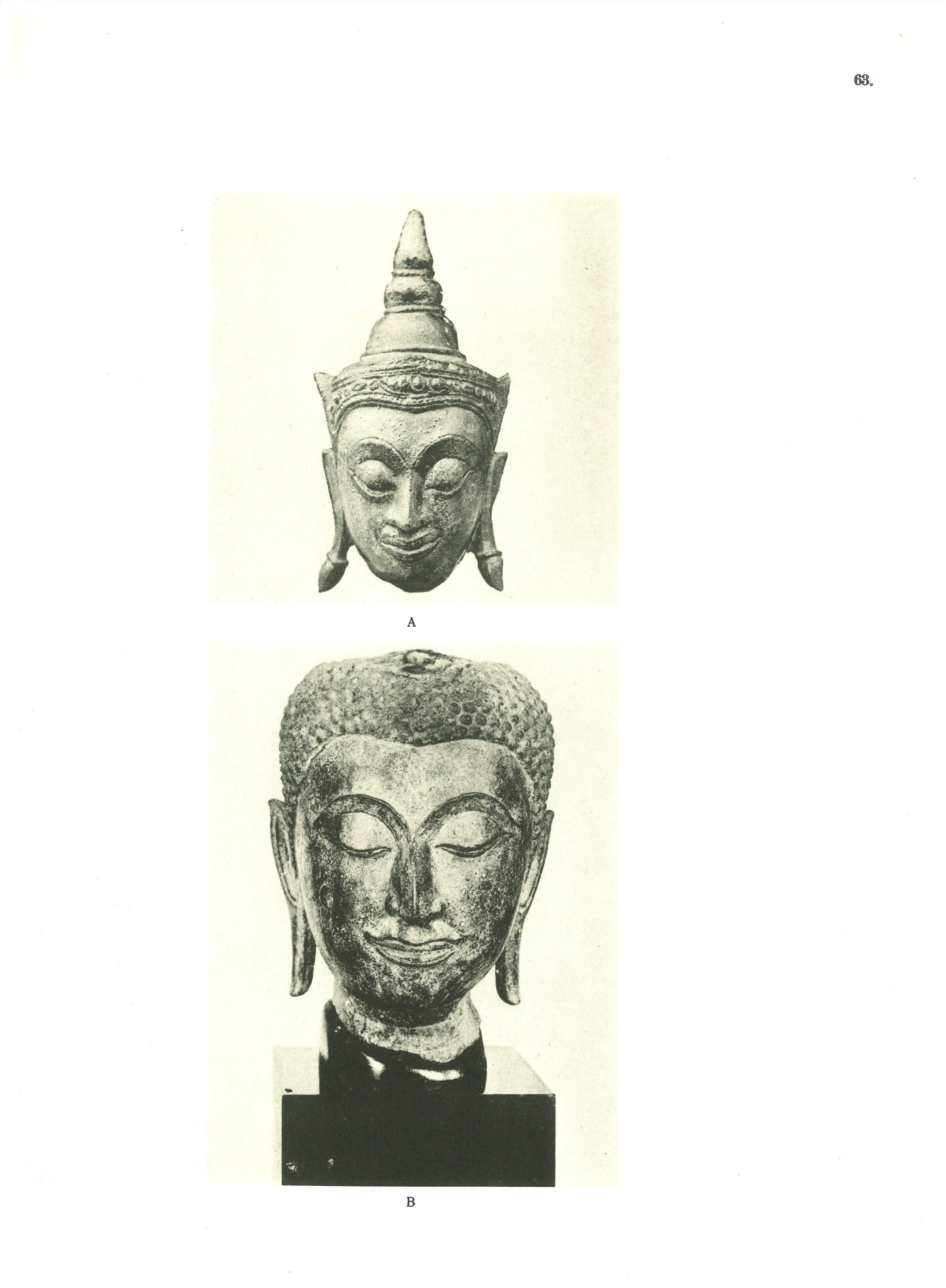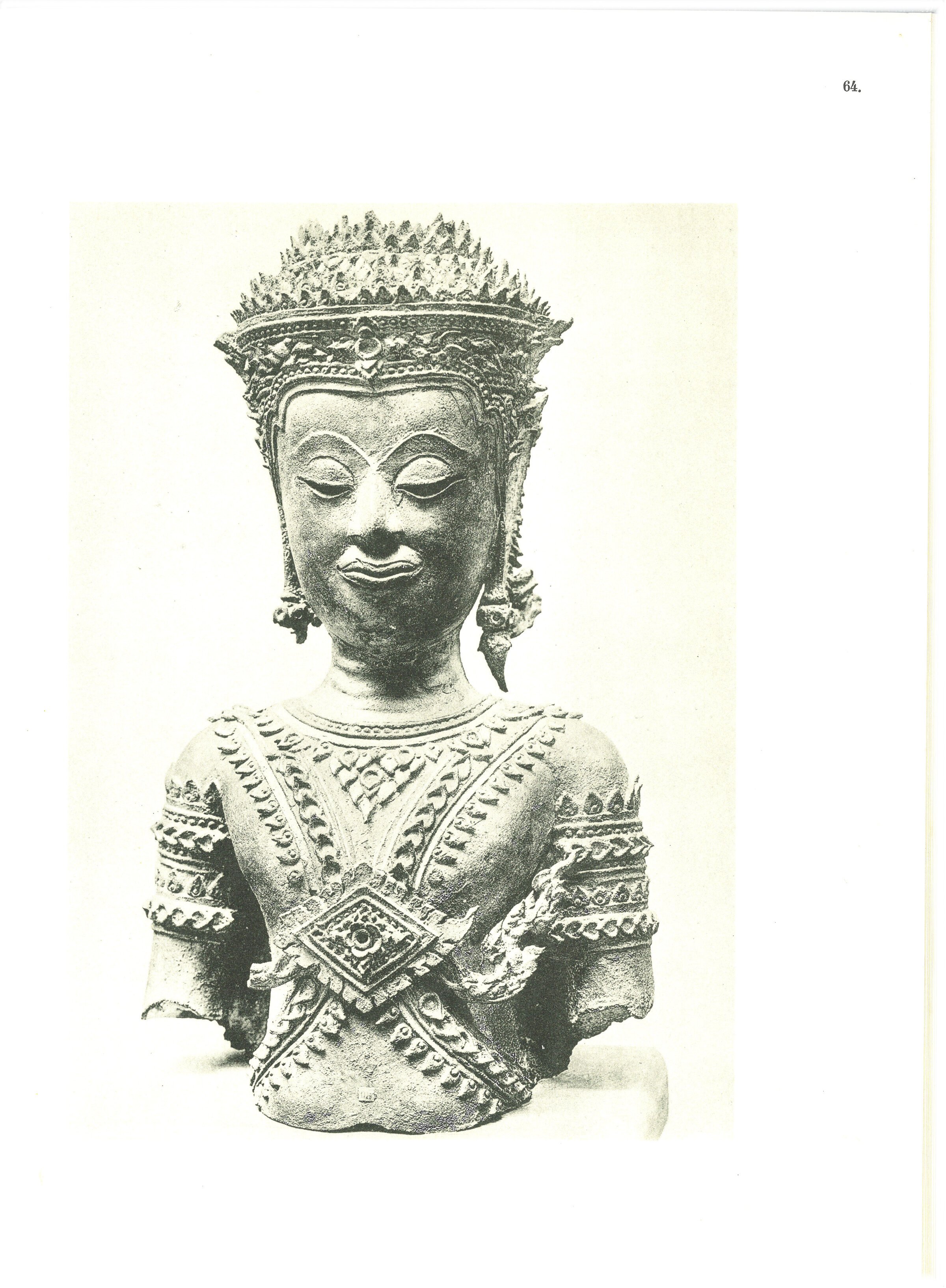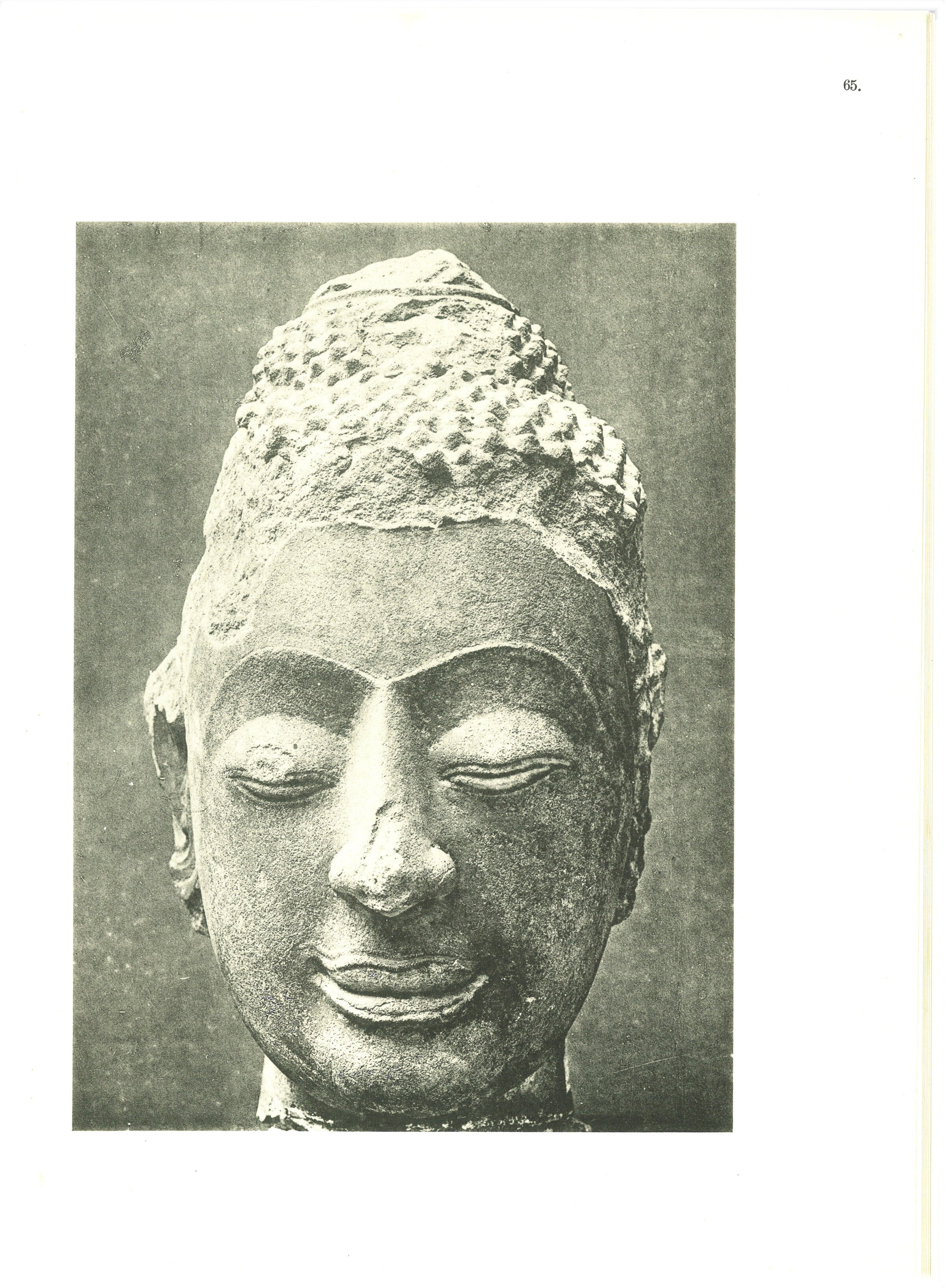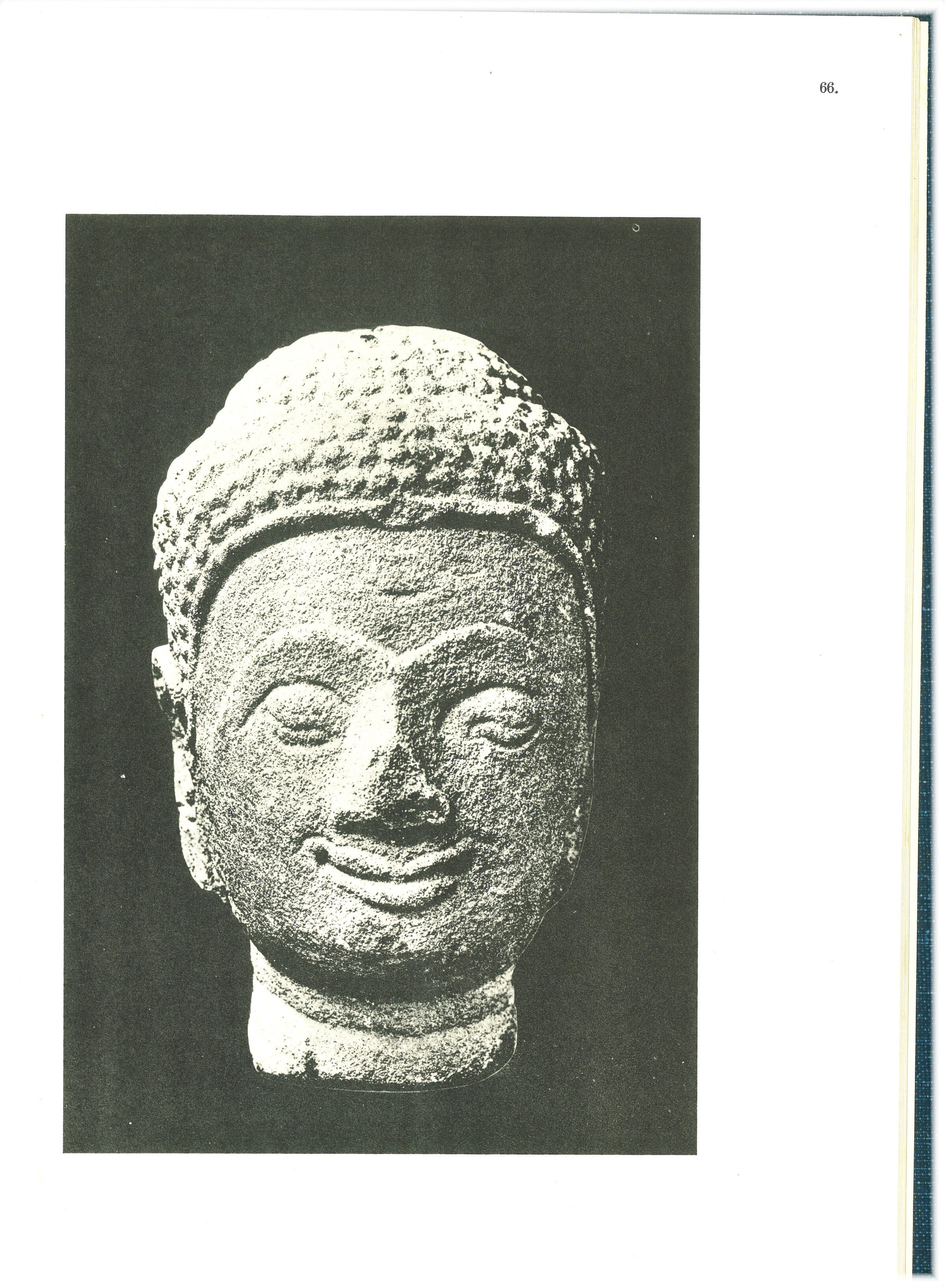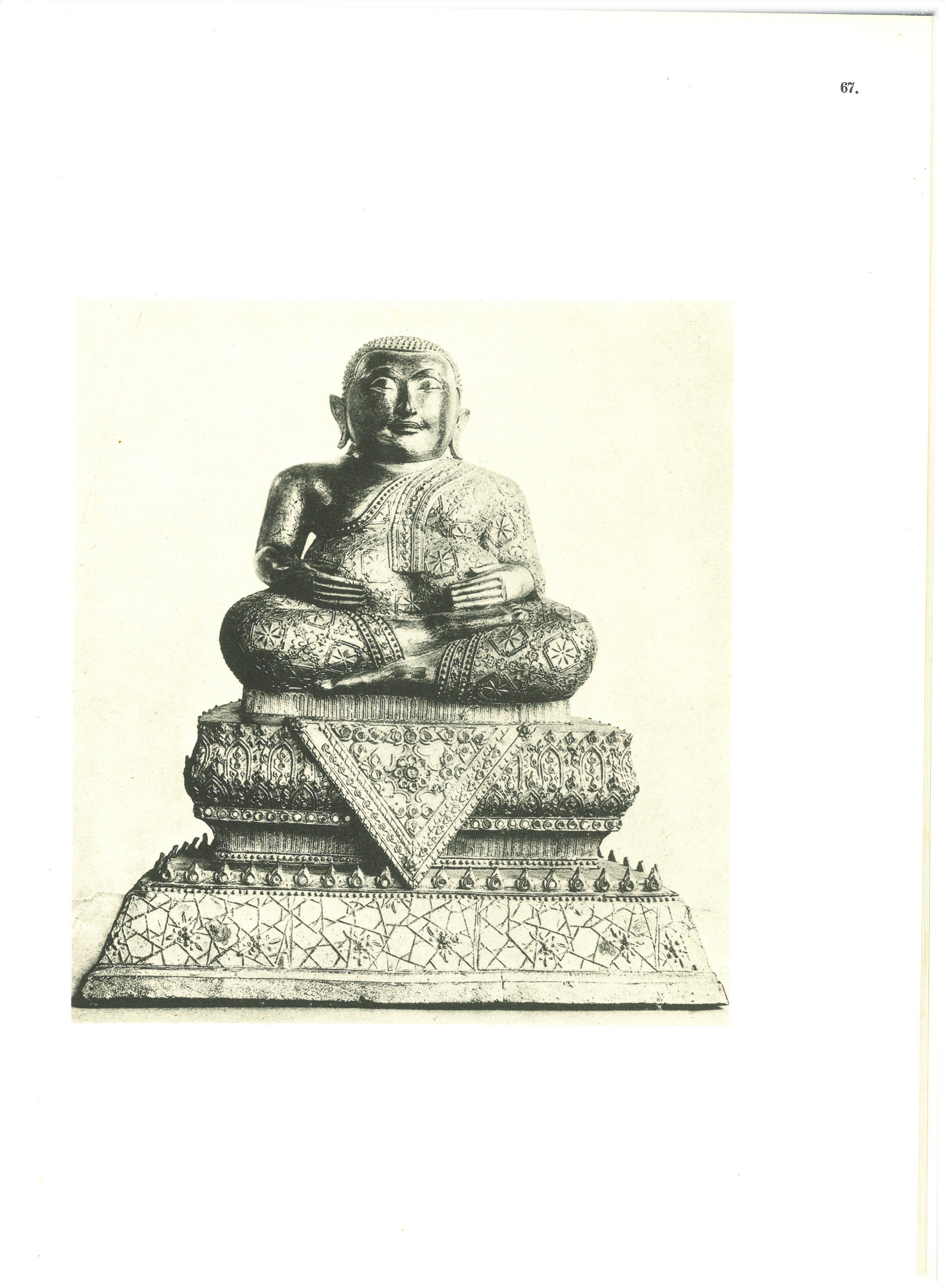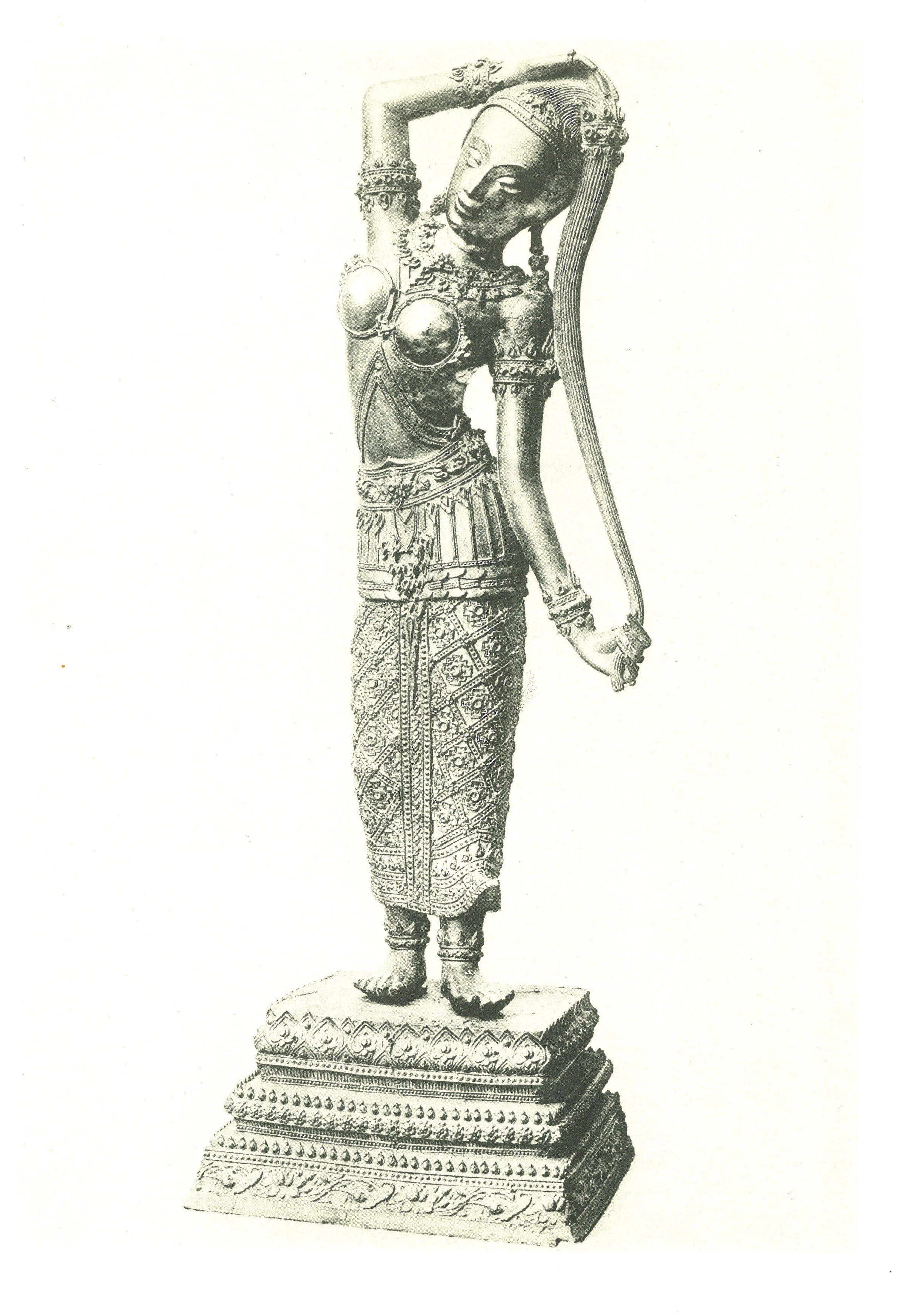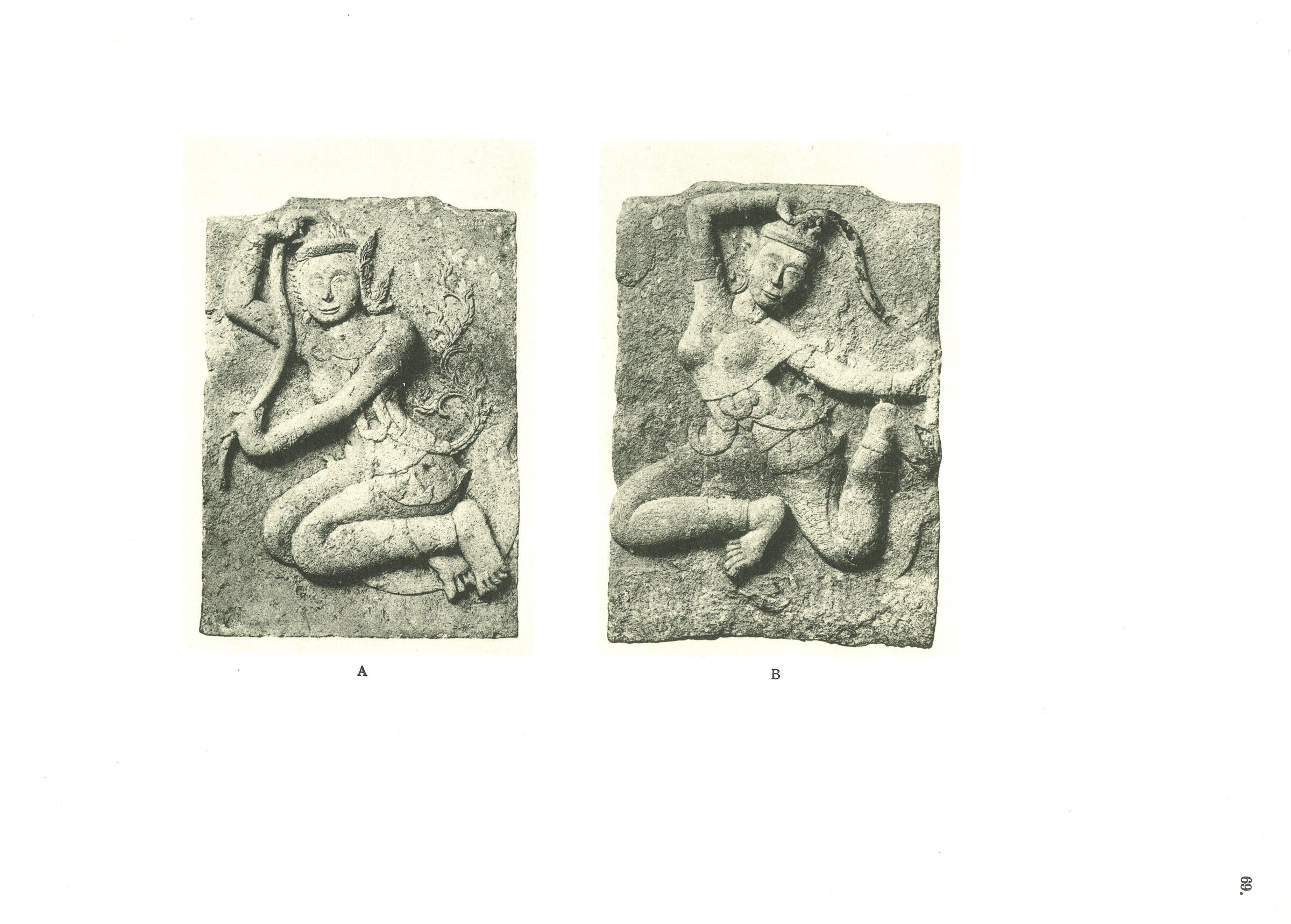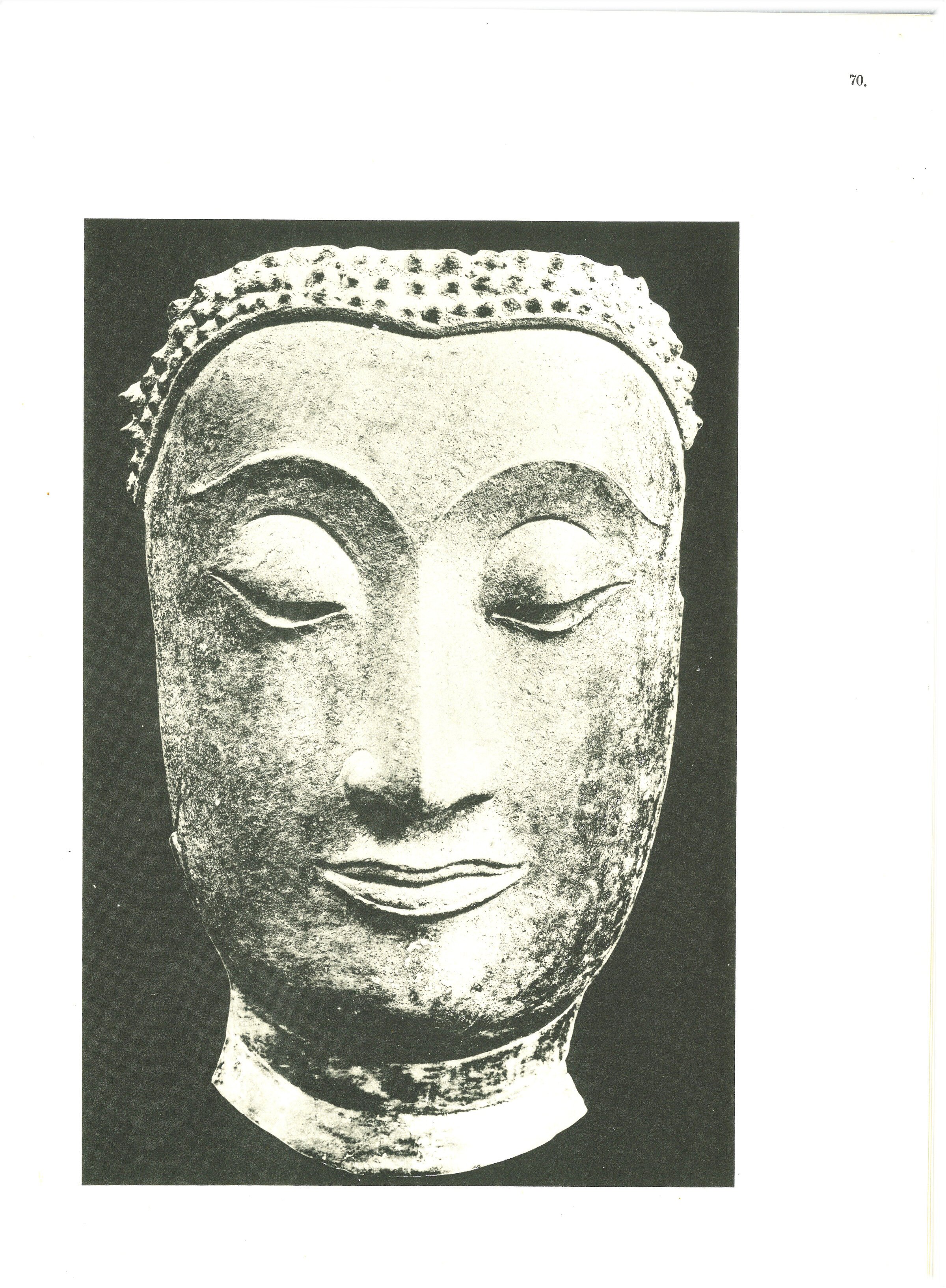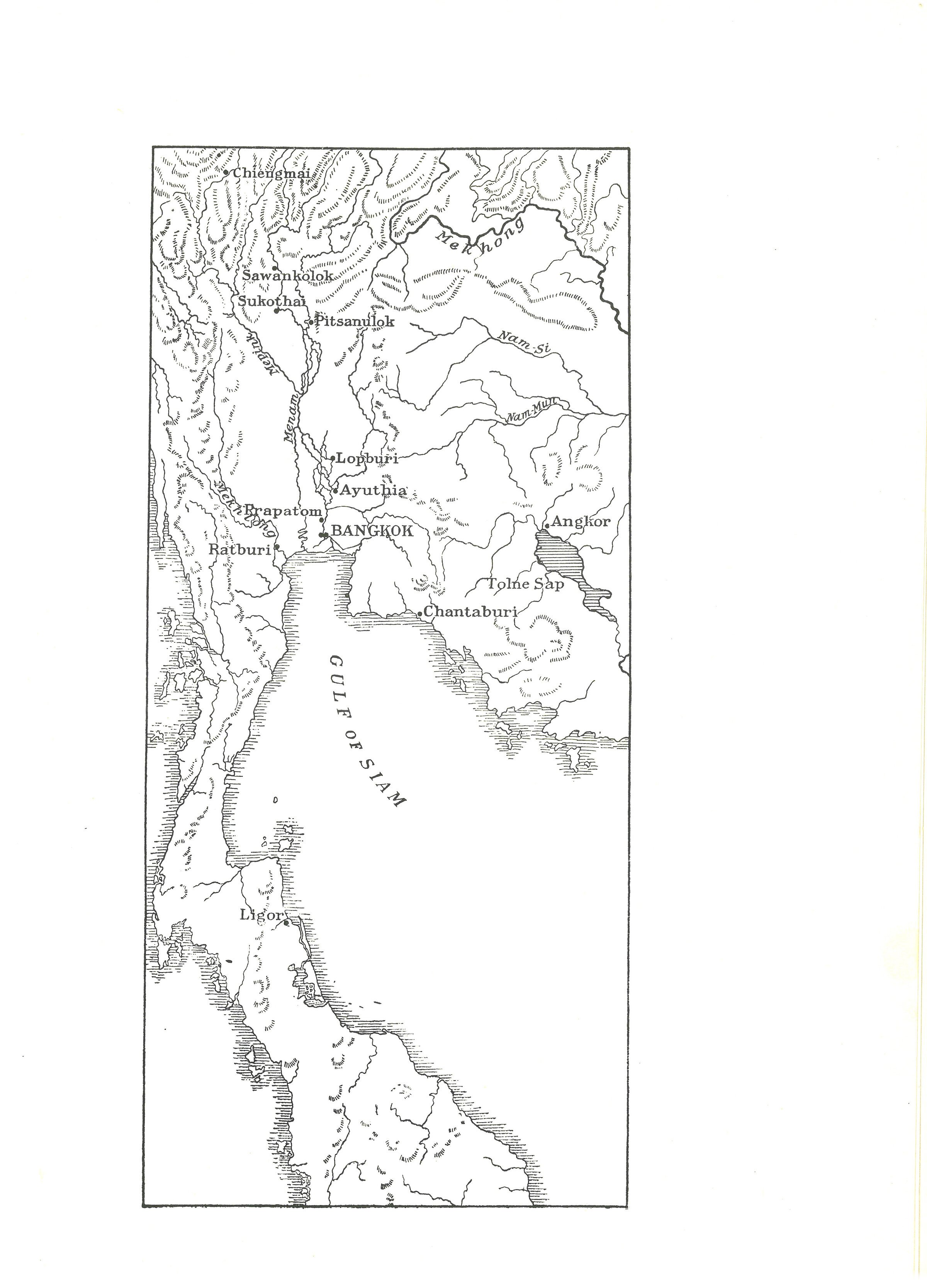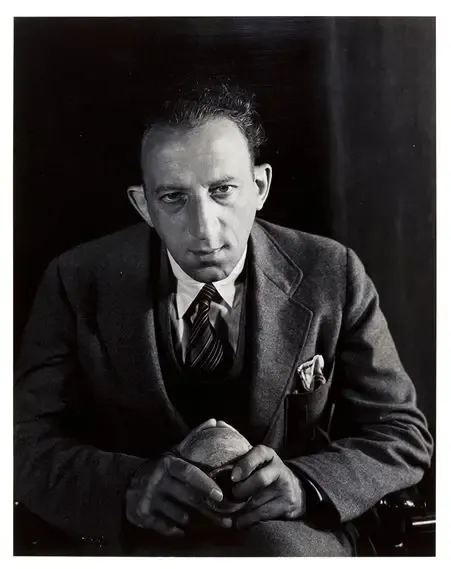Sculpture in Siam by Alfred Salmony
by Alfred Salmony
70 plates from the first major study in sculpture found in Siam authored by a Berlin art curator and critic in the 1920s.
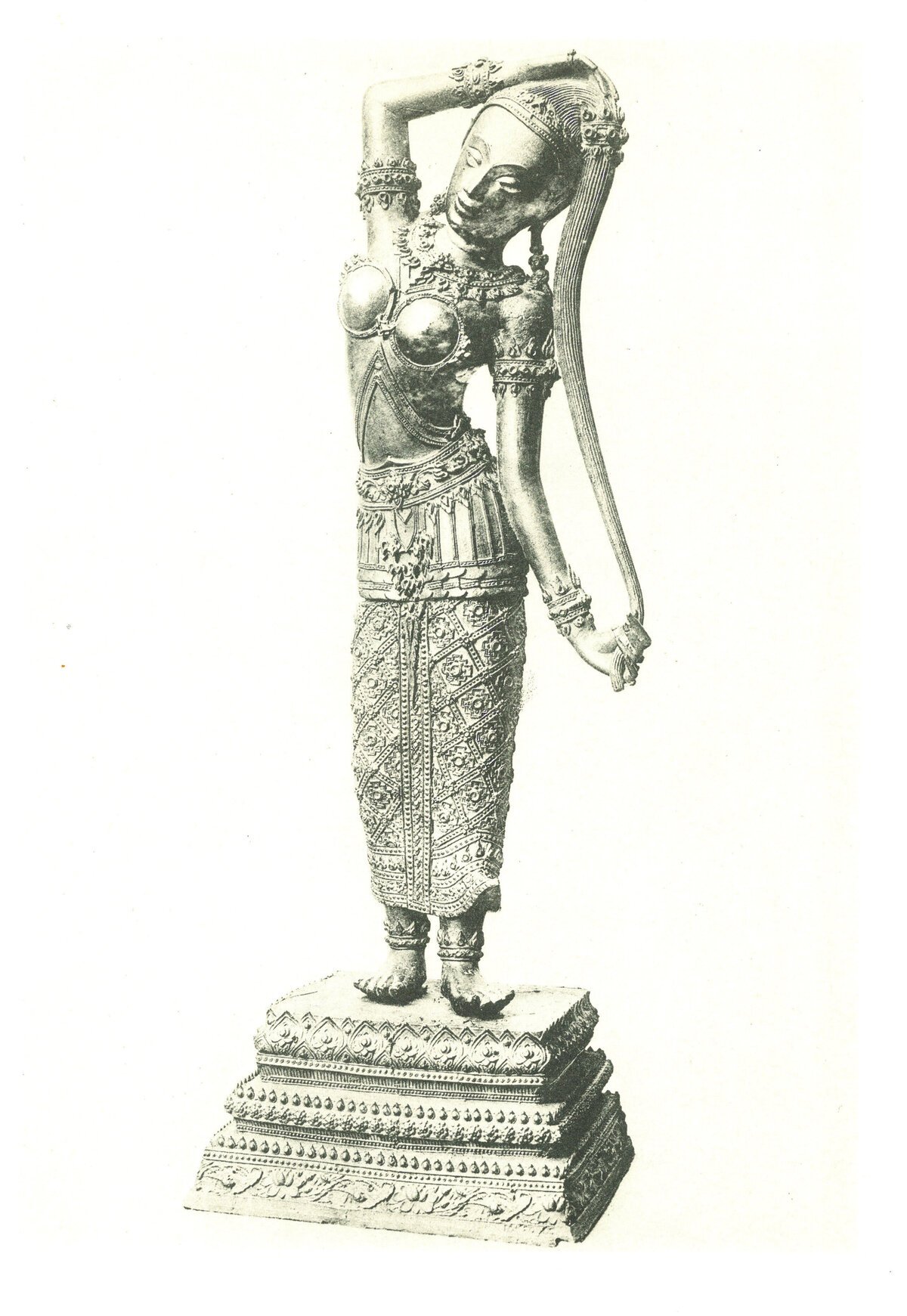
- Published
- 1930
- Author
- Alfred Salmony
- Source
- plates from Alfred Salmony, Sculpture in Siam, 1925. Reprint.: New York, Hacker Art Books, 1972.
Plates: Note from the author
“With the exception of pieces to be found only in Siam, all the examples reproduced here could be examined in the original, so that it has been practicable in almost every case to give details of size and material. The author gratefully acknowledges the kindness with which various material has been placed at his disposal. He is indebted for Plates 23, 29 B, 40, 44, 50 A and B, 68, to the Musée Guimet in Paris. For Plate 56 A, B, C, D, to the Rijks Museum, Leyden. For Plate 69, to the Museum für Völkerkunde (Museum of Ethnology), Leipzig. For Plates 41, 42, 61, 66, to the Photographic Section of the Kunstgewerbe Museum (Museum of Arts and Crafts), Cologne. For Plates 27 B, 31 B, 2, to M. H. d’Ardenne de Tizac, Paris. For Plates 1 B, 3 A‑B, 4 A‑B, 5 A‑B, 7, 19, 24, to E. A. Voretzsch, Lisbon. For Plates 18, 27, 49 A‑B, 57, 63, to A. M. F. Ponto, Lisbon. For Plates 8 and 48, to M. O. Miestchaninoff, Paris. For Plate 70, to Professor Dr. F. Sarre, Berlin. For Plate 64, to M. Giraudon, Paris. For Plates 46 B and 66, to Messrs. Glenk-Worch, Berlin. For all the rest, to the Museum für Kunst und Gewerbe (Museum of Arts and Crafts), Hamburg. The whole work has been made possible only by extensive and unselfish assistance of Dr. E. A. Voretzsch.”
1A. Clay Tablet from Nakhon Sri Thammarat (Ligor). H. 4 cm. Museum of Arts and Crafts, Hamburg. | 1B. Stone Relief, Prapatom.
2. Stone Torso from Ayuthia. H. 30 cm. R. Samson Collection, Hamburg.
3A. Stone Wheel, Prapatom. | 3B. Stone Beam, Prapatom.
4A. Stone Fragment, Prapatom. | 4B. Stone Relief, Prapatom.
5A. Stone Fragment, Prapatom. | 5B. Stone Relief, Prapatom.
6 A, B. Stone Head from Prapatom. R. Samson Collection, Hamburg.
7. Stucco Torso, Prapatom.
8. Bronze Torso from Nakhon Sawan.
9. Bronze Torso from Sukothai. H. 23 cm. Museum of Arts and Crafts, Hamburg. Ministry of the Interior, Bangkok.
10. Bronze Buddha from Sukothai. H. 24 cm. R. Samson Collection, Hamburg.
11. Bronze Head from Sukothai. H. 17 cm. Museum of Arts and Crafts, Hamburg.
12A. Bronze Head from Sukothai. H. 9 cm. Museum of Arts and Crafts, Hamburg. | 12B. Bronze Head, Sukothai. H. 15 – 5 cm. R. Samson Collection, Hamburg.
13A. Profile of Plate 12B. XX | Plate 13B. Bronze Head from Sukothai. H. 16 cm. R. Samson Collection, Hamburg.
14. Front view of Plate 13B.
15A. Bronze Head from Sawankolok. H. 6 – 5 cm. R. Samson Collection, Hamburg. | 15B. Bronze Head from Sukothai, H. 125 cm.
16A. Bronze Head from Sukothai. H. 19 cm. R. Samson Collection, Hamburg. | 16B. Profile of Plate 15B. R. Samson Collection, Hamburg. XX
17. Bronze Torso from Sukothai, H. 16 – 5 cm. R. Samson Collection, Hamburg.
18. Sandstone Head from Sukothai. H. 30 cm. E. A. Voretzsch Collection, Lisbon.
19. Bronze Buddha from Chieng-mai. Ministry of the Interior, Bangkok.
20. Bronze Torso, with traces of gilding, from Lopburi. H. 28 cm. R. Samson Collection, Hamburg
21. Stone (gray slate) Head from Lopburi. H. 34 cm.
22. Same profile. R. Samson Collection, Hamburg. XX
23. Sandstone Head (with traces of red paint), place of discovery unknown. H. 21 cm. Musée Guimet, Paris
24A. Clay Tablet, Prapatom. | 24B. Clay Tablet from Nakhon Racha Síma. H. 12.4 cm. Museum of Arts and Crafts, Hamburg.
25A. Stucco Head, with traces of gilding, from Lopburi. H. 6.5 cm. Museum of Arts and Crafts, Hamburg. | 25B. Clay Tablet from Nakhon Racha Sima. H. 15.5 cm. Museum of Arts and Crafts, Hamburg.
26A. Stucco Head at Lopburi. H. 18 cm. Museum of Arts and Crafts, Hamburg. | 26B. Stucco Head, place of discovery unknown. H. 25 cm. Messrs. Glenk-Worch, Berlin.
27A. Stone Head from Lopburi. H. 16 cm. E. A. Voretzsch Collection, Lisbon. | 27B. Yellow Sandstone Head from Lopburi. H. 32 cm. F. Pila Collection, Paris.
28. Stone Head from Lopburi. H. 24 cm. R. Samson Collection, Hamburg.
29A. Gilded Bronze Head from Lopburi. H. 10 cm. Museum of Art and Industry, Hamburg. | 29B. Bronze Head from the neighbourhood of Ratburi. H. 17 cm. Peytel Collection, Paris.
30 A, B. Bronze Head from Lopburi. H. 12 cm. R. Samson Collection, Hamburg.
31A. Stucco Head from Pitsanulok. Life size. Museum of Arts and Crafts, Hamburg. | 31B. Stucco Head, place of discovery unknown. H. 19 cm. Bouasse-Lebel Collection, Paris.
32A. Red Sandstone Head from Pitsanulok. H. 12 cm. Museum of Arts and Crafts, Hamburg. | 32B. Gilded Bronze Figure from Pitsanulok. H. 10 cm. Museum of Arts and Crafts, Hamburg.
33. Heavily Gilded Bronze Head from Pitsanulok. H. 10 cm. R. Samson Collection, Hamburg.
34. Gilded Bronze Torso from Pitsanulok. H. 21 cm. Museum of Arts and Crafts, Hamburg.
35. Gilded Bronze Torso from Pitsanulok. H. 25 cm. R. Samson Collection, Hamburg.
36A. Bronze Head from Pitsanulok. Life size. Museum of Arts and Crafts, Hamburg. | 36B. Bronze Head from Pitsanulok. Life size. Museum of Arts and Crafts, Hamburg.
37A. Bronze Head from Pitsanulok. Life size. Museum of Arts and Crafts, Hamburg. | 37B. Bronze Head from Pitsanulok. Life size. R. Samson Collection, Hamburg.
38. Bronze Torso from Pitsanulok. H. 19.5 cm. R. Samson Collection, Hamburg.
39. Bronze Buddha from Pitsanulok. H. 574 cm. R. Samson Collection, Hamburg.
40. Bronze Head, surface much damaged, place of discovery unknown. Musée Gulmet, Paris.
41. Bronze Head from Pitsanulok (traces of gilding). H. 20 cm. B. Rosenberg Collection, Cologne. XXX
42. Profile of Plate XX.
43. Gilded Bronze Head from Pitsanulok. H. 46 cm. Museum of Arts and Crafts, Hamburg.
44. Bronze Head, place of discovery unknown. H. aXX5 cm. Musée Guimet, Paris.
45. Bronze Head from Pitsanulok (remains of mother-of-pearl inlay in right eye). H. 305 cm. Museum of Arts and Crafts, Hamburg.
46. Bronze Torso from Pitsanulok. H. 27 cm. Museum of Arts and Crafts, Hamburg.
47A. Bronze Head from Pitsanulok. Length 31 cm. Museum of Arts and Crafts, Hamburg. | 48B. Bronze Buddha, without place of discovery. Ministry of the Interior, Bangkok
49 A, B. Bronze Head from Chieng-mai. H. 13.5 cm. Otto Blumenfeld Collection, Hamburg. | 49C XX
50 A, B. Bronze Head, place of discovery unknown. H. 18 cm. Peytel Collection, Paris.
51. Bronze Buddha from Sukothai. H. 98 cm. Museum of Arts and Crafts, Hamburg.
52. Head of Plate 51 XX . XXX
Hand, probably belonging to Plate 51. Length 23 cm.
53. Gilded bronze Buddha from Sawankolok. H. 61 cm. Museum of Arts and Crafts, Hamburg.
54. Bronze Buddha from Sukothai. H. 76.5 cm. Museum of Arts and Crafts, Hamburg.
55. Bronze Torso, place of discovery unknown. H. 17 cm. Peytel Collection, Paris
56 A, B. Bronze Head, place of discovery unknown. H. 15.5 cm. Rijks Museum, Leyden. | 56 C, D.
57. Sandstone Head from Ayuthia. E. A. Voretzsch Collection, Lisbon
58. Sandstone Head from Ayuthia. Museum of Arts and Crafts, Hamburg.
59. Sandstone Head from Ayuthia. H. 29 cm. Museum of Arts and Crafts, Hamburg.
60. Sandstone Head from Ayuthia. H. 25 cm. R. Samson Collection, Hamburg.
61. Bronze Head from Ayuthia, with traces of gilding. H. 15 cm. E. Rosenberg Collection, Cologne.
62. Profile of Plate 61.
63A. Bronze Head from Ayuthia. H. 12.5 cm. E. A. Voretzsch Collection, Lisbon. | 638. Bronze Head from Ayuthia. H. 12 cm. R. Samson Collection, Hamburg.
64. Bronze Figure, place of discovery unknown. H. 37 cm. Musée Indo-Chinois, Paris.
65. Stone Head, place of discovery unknown. H. 31.5 cm. E. Rosenberg Collection, Cologne.
66. Stone Head, place of discovery unknown. H. 15 cm. Yi Yüan Collection, The Hague.
67. Bronze Figure (black lacquer with gilding), place of discovery unknown. H. 35 cm. R. Samson Collection, Hamburg.
68. Bronze Figure, place of discovery unknown. Private Collection, Paris.
69 A, B. Stone Reliefs from Ayuthia. H. 75 and 77 cm. Museum of Ethnology, Leipzig.
70. Bronze Head, place of discovery unknown. H. 24.5 cm. Private Collection, Berlin.
Tags: Siam, Thai art, Khmer art, Dvaravati, Sokuthai, Ayuthia, Ayutthaya, Lopburi
About the Photographer
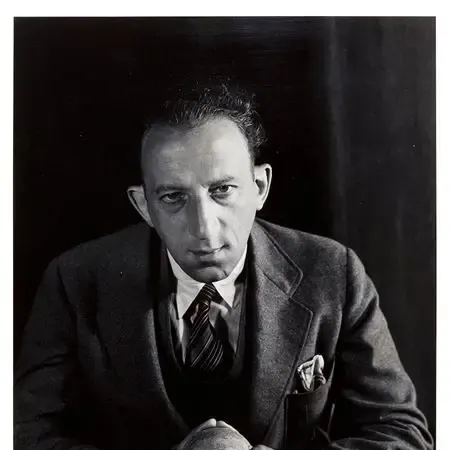
Alfred Salmony
Alfred Salmony (10 Nov 1890, Cologne [Köln], Germany — 29 Apr 1958, Atlantic Ocean, heart attack aboard theIle-de-France ocean liner) was a museum curator and professor specializing in East Asian art, art of the Eurasian steppes, and Chinese jades, who also studied Southeast Asian art during his long career.
A student in art history and archaeology in Bonn and Vienna under Paul Clemen and Josef Strzygowski, Salmony interrupted his studies to serve in the German cavalry during World War II, completing his dissertation Europa – Ostasien. Religiöse Skulpturen (Europe – East Asia, Religious sculptures) in 1922. He was a curator at the Museum für Ostasiatische Kunst (Museum of East Asian Art) in Cologne from 1920 to 1925, when he became its Deputy Director until 1933. In that capacity, he was approached by French writer André Malraux when the latter was planning his infamous trip to Cambodia in search of Khmer sculptures to steal.
At that time, he traveled extensively, with teaching assignments in the US in 1926 – 1927 and 1932 – 1933, and numerous research trips to Siberia, the Caucasus, the Volga Valley, Ukraine, China, and Japan. Dismissed from the museum due to anti-Jewish Nazi laws, he briefly took refuge in France, working for the Musée Citroen and the Musée Cernuschi — he had contributed to the first issue of Musée Guimet’s Revue des arts asiatiques in May 1924. As soon as 1934, he left for the United States, first working as a lecturer of fine arts at Mills College in Oakland, California.
From 1938 to 1957, he was professor of Chinese, Siamese, and Indian Art History at the Institute of Fine Arts, New York University. He became editor-in-chief of Artibus Asiae in 1943, after being influential in its launch in 1925, along with Orientalist Carl Hentze. In 1950, he spent one year in Korea, teaching art history. He traveled to Ceylon (Sri Lanka), India, and Russia.
“Germany was the land of his birth, the United States the land of his adoption, France the land of his preference,” read his eulogy in College Art Journal (18−1, 1958, p. 77). And he was heading to Moscow via London– the last of his several visits to Russia — when he boarded for a fateful voyage the Ile-de-France in New York, an elegant cruise ship launched in 1926, the first major ocean liner built after World War I, and the first ever to be decorated almost entirely in modern Art Deco style, decommissioned in 1959.
Publications
- Ueber einige Verbindungen der Dibrom- und Dichromaleinsäure und ihre Ueberführung in Indigo (Eine neue Indigosynthese). Rostock, 1915.
- Europa – Ostasien. Religiöse Skulpturen. Dissertation University of Potsdam, 1922; numerous editions, including reprint by Forgotten Books, 2018.
- Orbis Pictus: Die Chinesische Landschafts Malerei. Verlag Ernst Wasmuth, Berlin, 1920.
- Die Chinesische Steinplastik. Berlin, 1922.
- Die Anfänge der Grossplastik in China. Klinkhardt & Biermann, Berlin, 1924.
- “L’art plastique du Thibet”. Revue des Arts Asiatiques no. 1, Musée Guimet, Paris, 1924.
- Sculpture in Siam. Ernest Benn, London, 1925; reprint by Hacker Art Books, New York, 1972. French edition: La Sculpture au Siam. G. Van Oest, Paris et Bruxelles, 1925.
- Die Chinesische Plastik: Ein Handbuch für Sammler. Berlin, 1925.
- Artibus Asiae (Periodical of Oriental Art. Zeitschrift für Östliche Kunst. Revue pour l’art asiatique). MCMXXV (1925) — no. I. (presentation by Carl Hentze and Alfred Salmony).
- “Ko-Ji Ho-Ten. Dictionnaire à l’usage des amateurs et collectionneurs d’objets d’art japonais et chinois by V. F. Weber”[review]. Artibus Asiae, vol I, 1925, pp. 78 – 79.
- “Mémoires Archéologiques publiés par l’école française d’extrême-orient. Tome I. Le temple d’Içvarapura (Bantāy Srēi) by Louis Finot, H. Parmentier, Victor Goloubew” [review in German]. Artibus Asiae, vol 3 – 1, 1928, pp 73 – 4.
- “Geschichte der indischen und indonesischen Kunst. by Ananda K. Coomaraswamy, H. Götz” [review in German]. Artibus Asiae, vol 3 – 1, 1928, pp 74 – 5.
- Asiatische Kunst Ausstellung Koln 1926. F. Bruckmann, Munich, 1929.
- Sino-Siberian Art in the Collection of C. T. Loo, 2 vols. C.T. Loo, Paris, 1933; reprint by White Lotus, Bangkok, 1998.
- “The Three Governors of Taoism. An Unusual Chinese Bronze Sculpture”. Gazette des Beaux-Arts, Paris, nd.
- “The Cicada in Ancient Chinese Art”. The Connoisseur magazine, London, 1933.
- Carved Jade of Ancient China. Gillick Press, Berkeley 1938; reprint Han-Shan Tang, London, 1982.
- 3000 Years of Chinese Jade Exhibition at Arden Gallery January 10 through February 11, 1939 [with Kendall K. Mussey]. Arden Gallery, New York, 1939.
- Chinese Painting Seventy-fifth Anniversary Exhibition May 22 To June 10, 1940 [Introduction]. Vassar College Art Gallery, Poughkeepsie, New York, 1940.
- The Santa Barbara Museum of Art presents An Exhibition of Masterpieces of Ancient China collected in China by Jan Kleijkamp during 1940 – 1941 [Introduction]. Jan Kleijkamp, New York and The Hague, 1940.
- Vassar College Art Gallery 1941: Far Eastern Jades, Charles M. Pratt Collection [Introduction]. Vassar College, 1941.
- Chinese Sculpture: Han 206 B.C.-A.D. 220 To Sung A.D. 960‑1279, Morrill Press, 1945; reprint by Literary Licensing, LLC, 2013.
- “An ivory carving from Malta (Siberia) and its significance”. Artibus Asiae, 1948: 285 – 288.
- “The third early Chinese owl with snake-legs”. Artibus Asiae, 1951: 277- 282.
- Archaic Chinese jades from the Edward and Louise B. Sonnenschein collection. Chicago 1952.
- “Artibus Asiae. Curat Editionem Alfred Salomny. Institute of Fine Arts. New York University. Vol. XVI, Separatum. Book Review: Taxila. An Illustrated Account of Archaeological Excavations Carried Out at Taxila under the Orders of the Government of India between the Years 1913 and 1934”. Artibus Asiae, Ascona, 1953.
- Antler and Tongue: An Essay on Ancient Chinese Symbolism and Its Implications. Artibus Asiae Publishers, 1954.
- “Bronzes of India and Greater India. An exhibition held during November 1955 at the Museum of Art, Rhode Island School of Design, Providence”, Artibus Asiae, 1956: 378 – 380.
- Chinese Jade: Through the Wei Dynasty. Ronald Press Company, New York, 1963.

